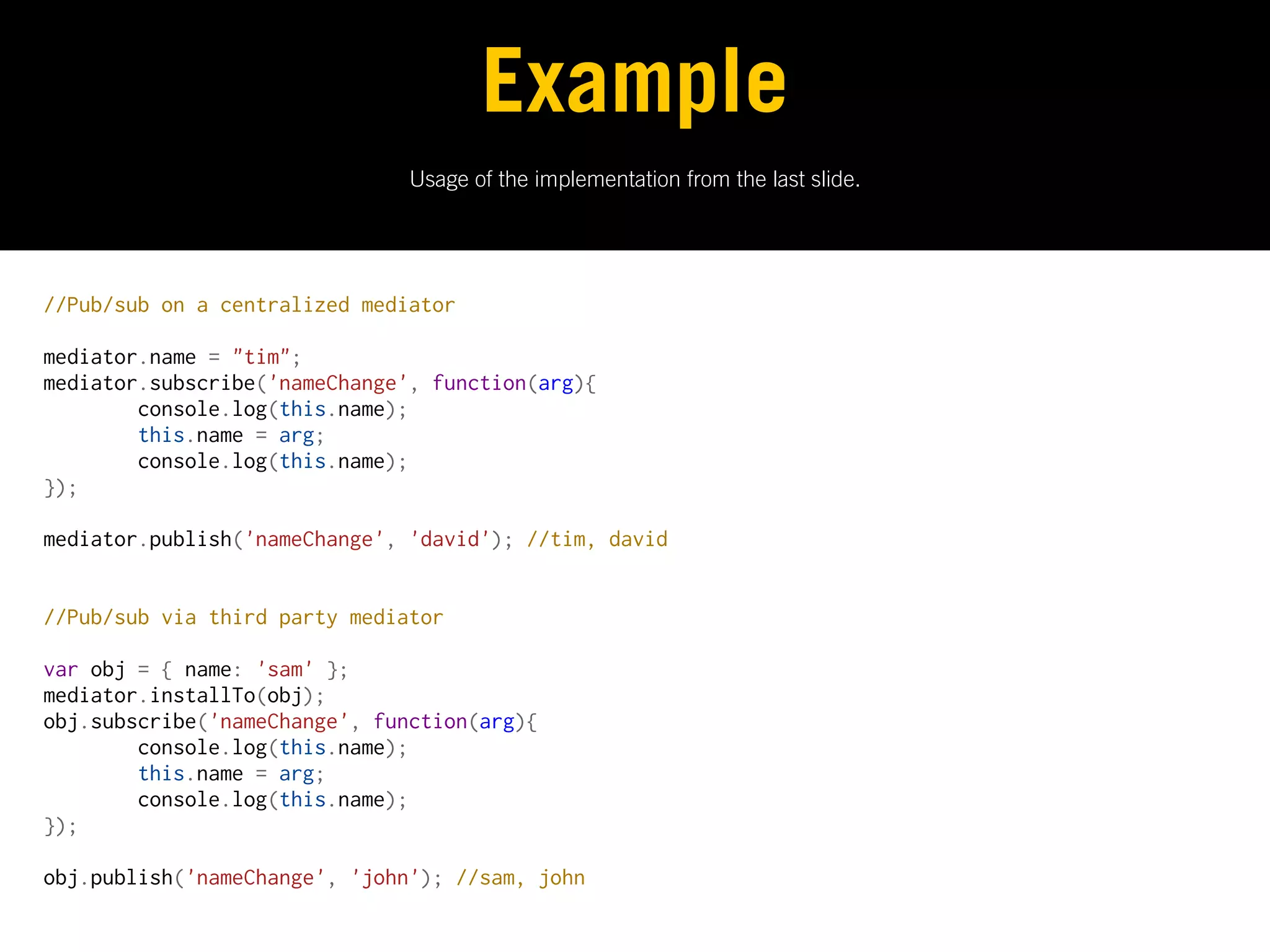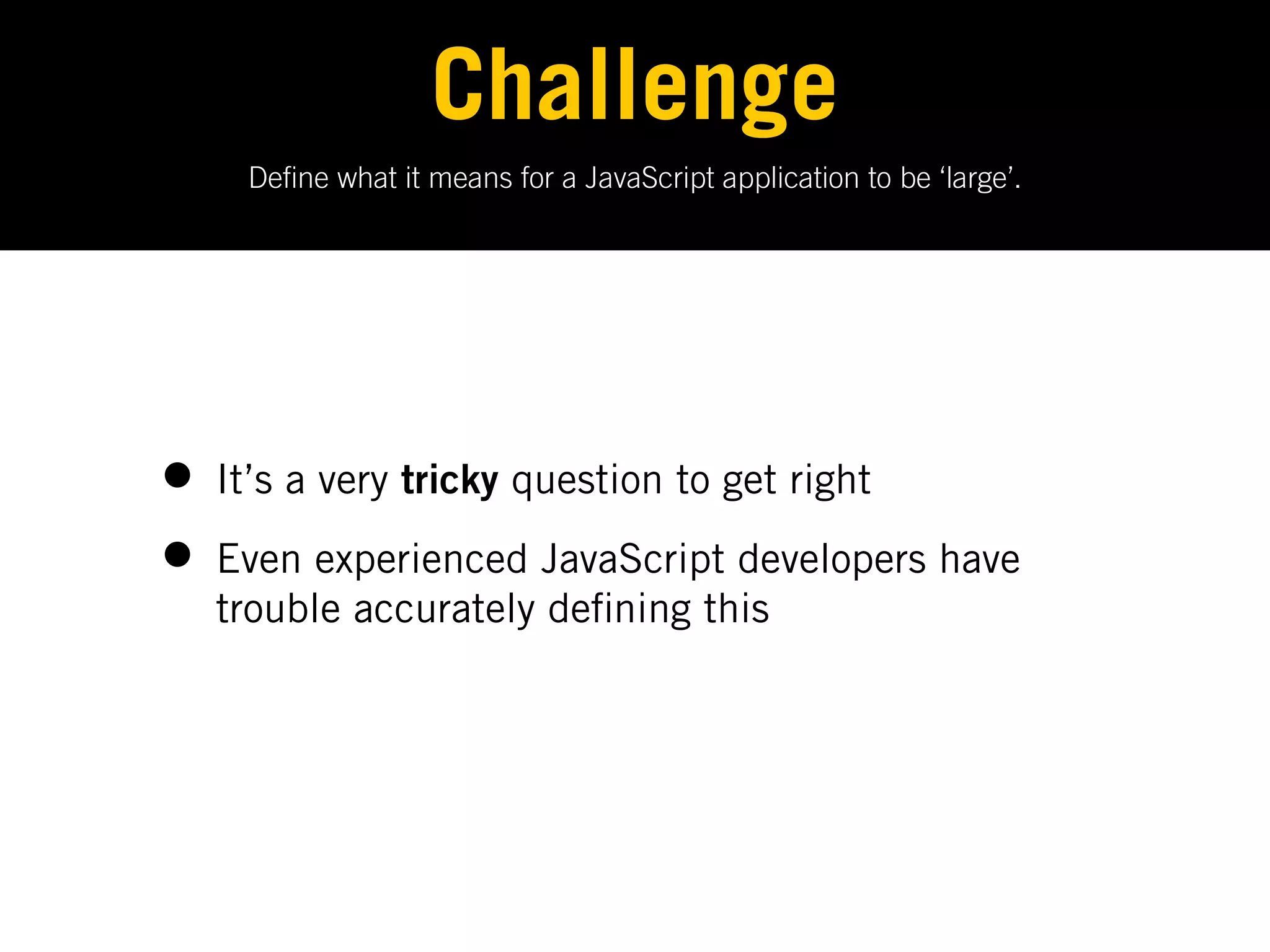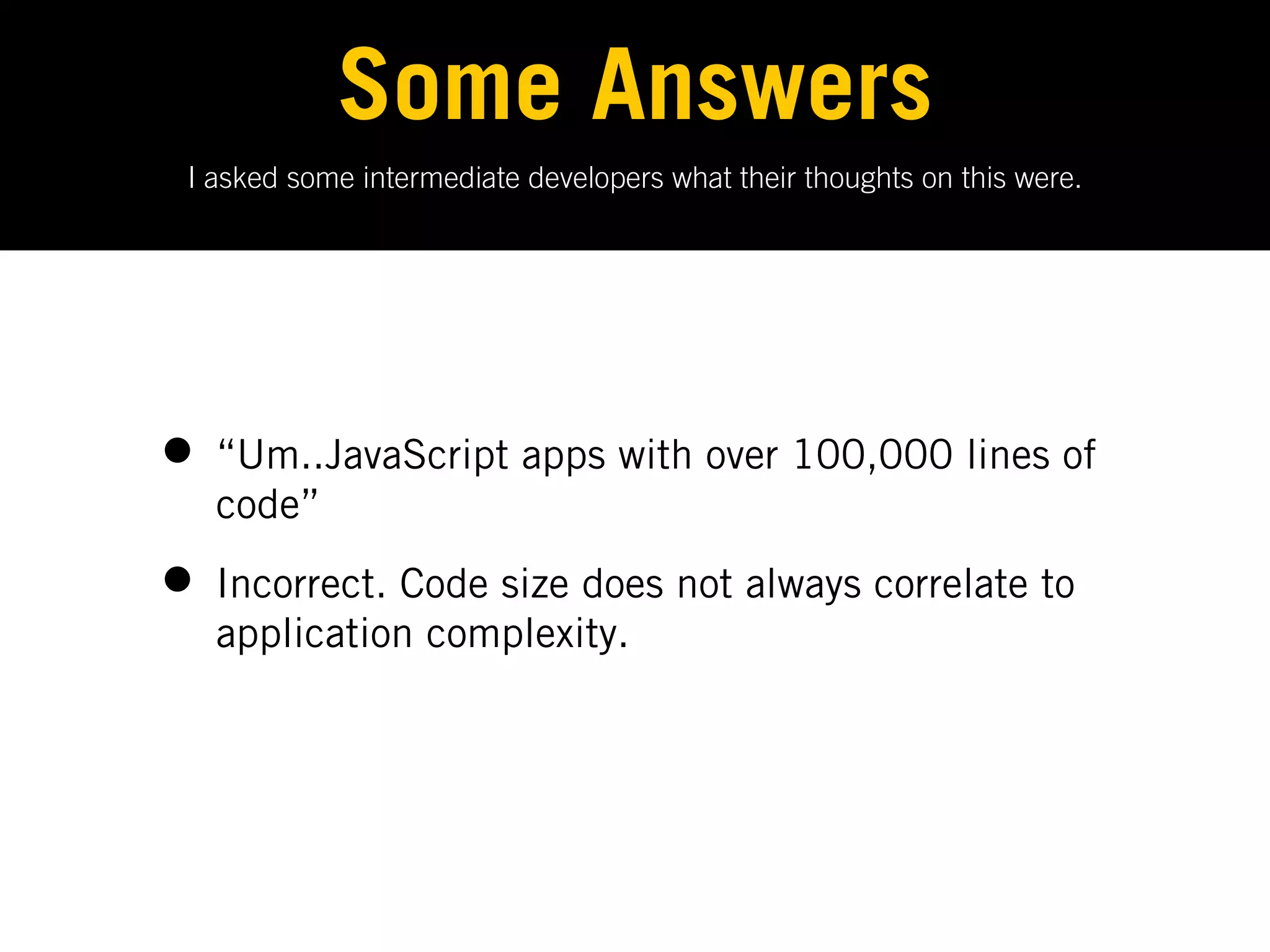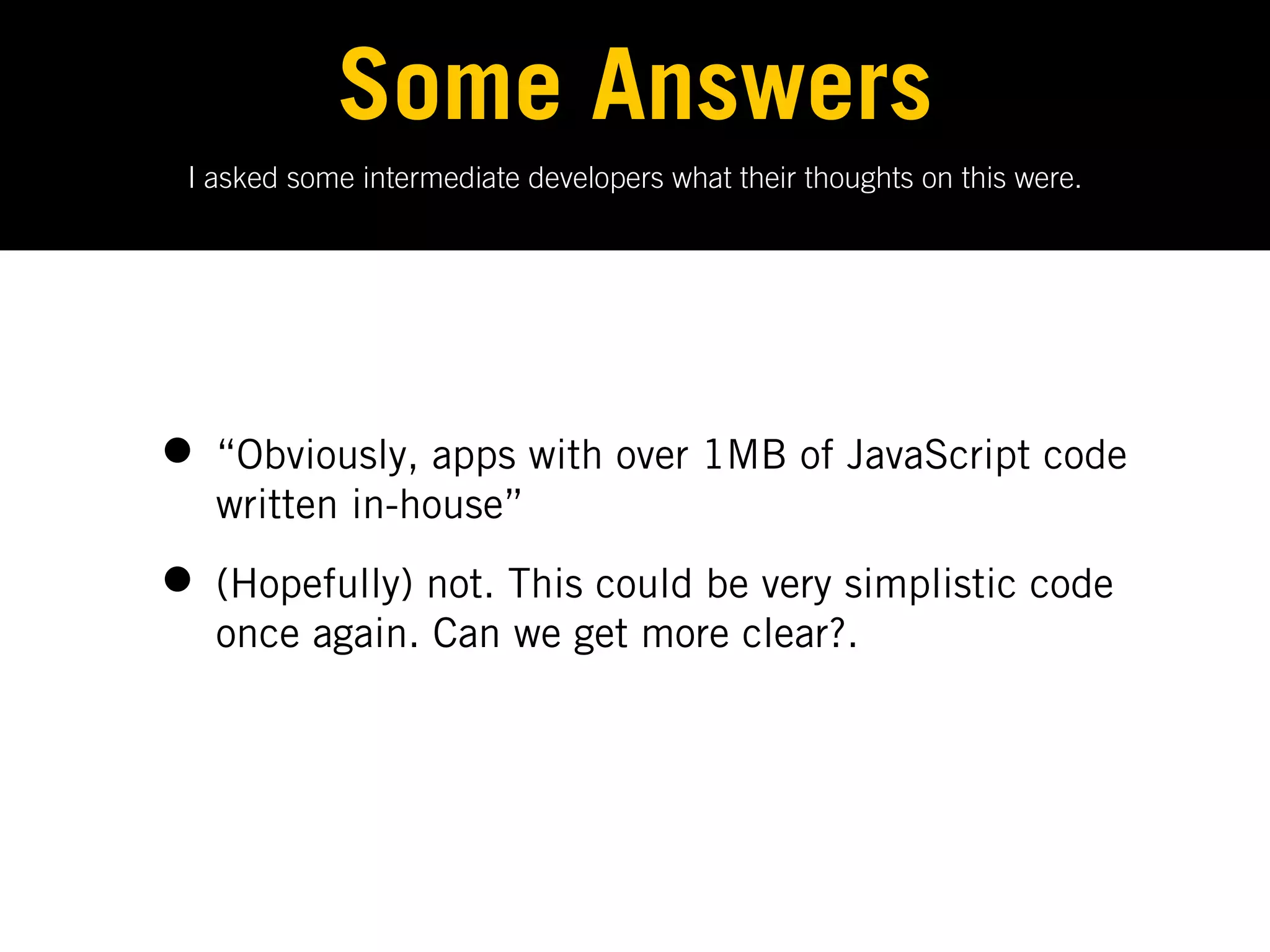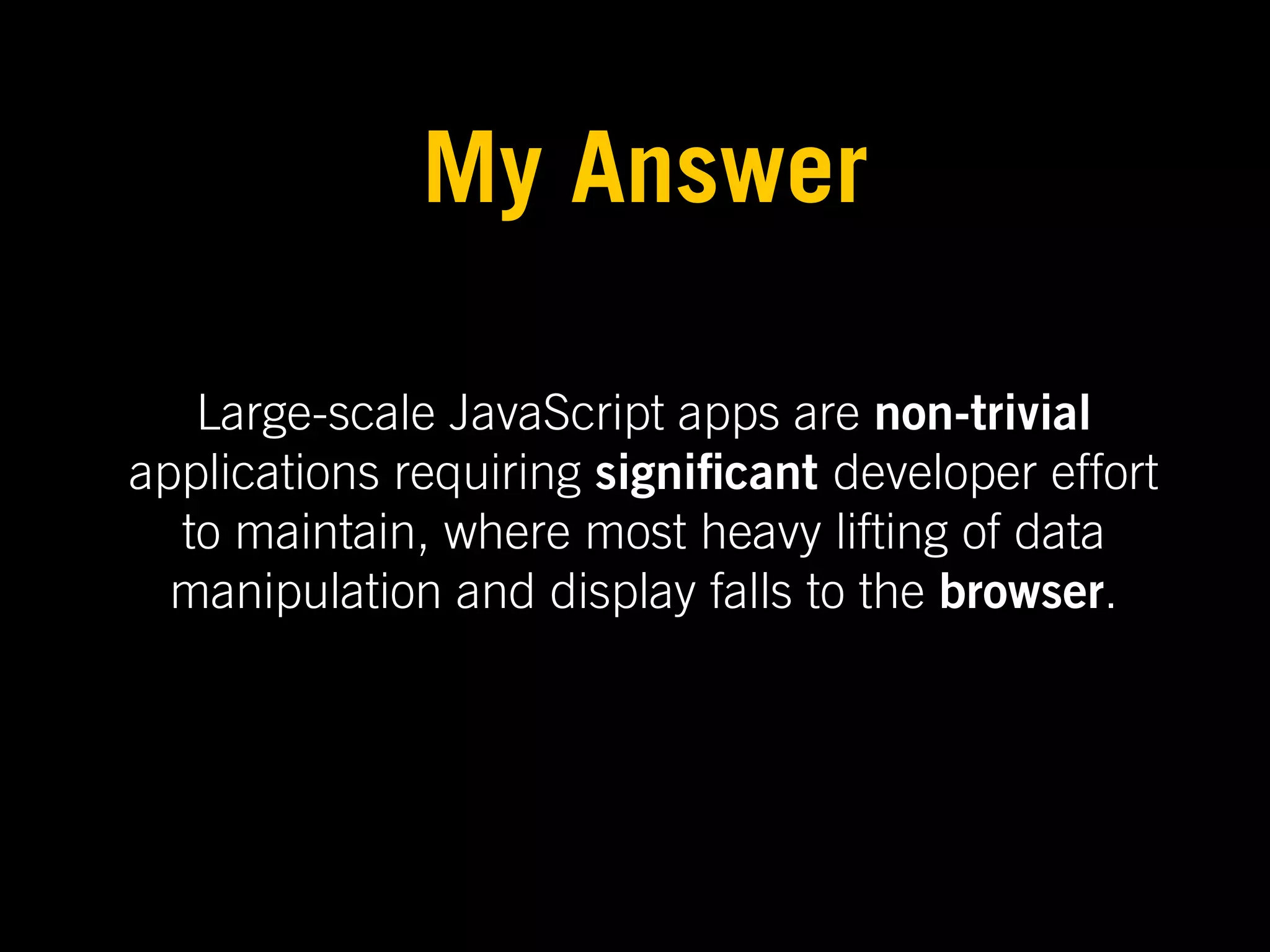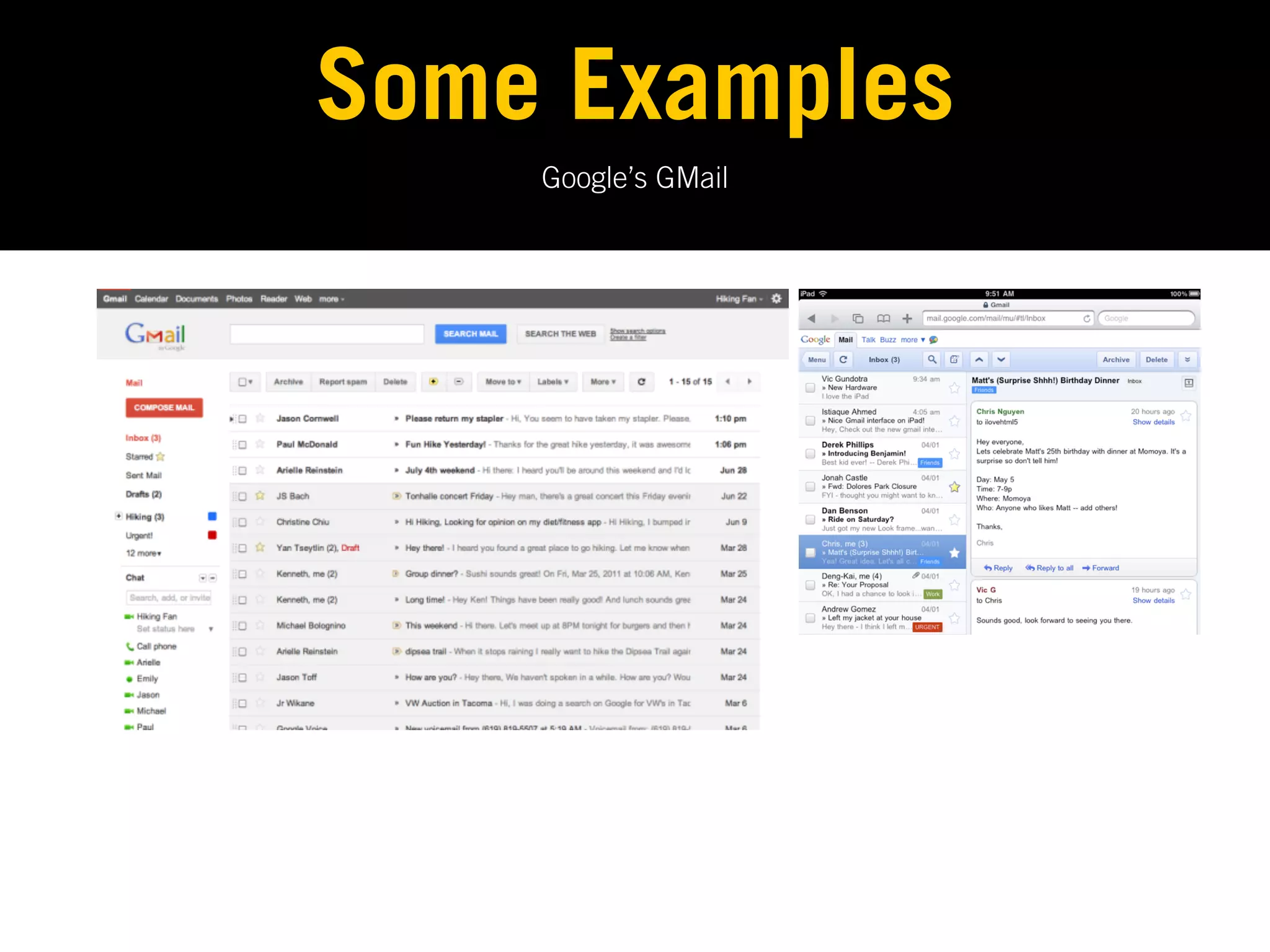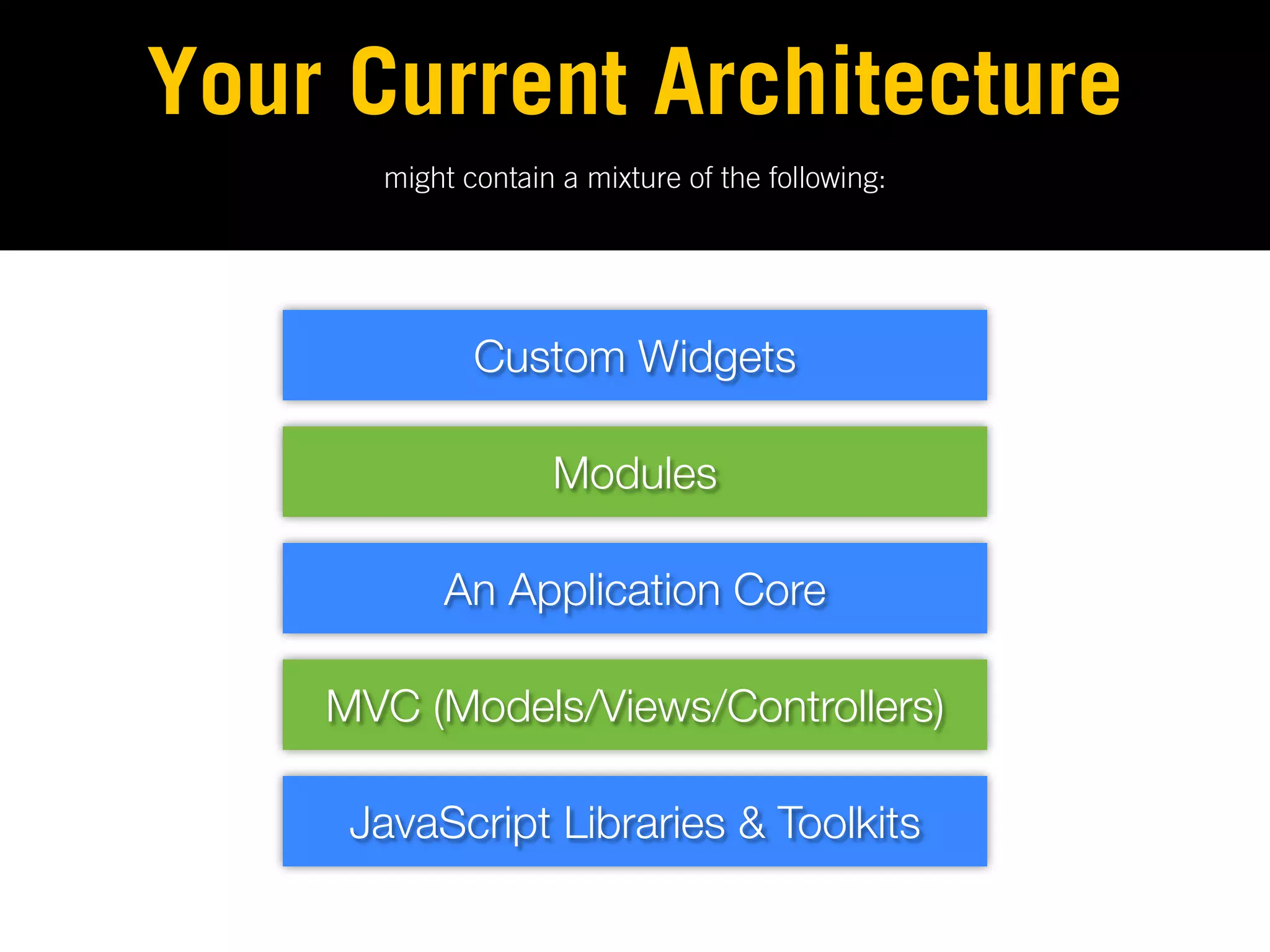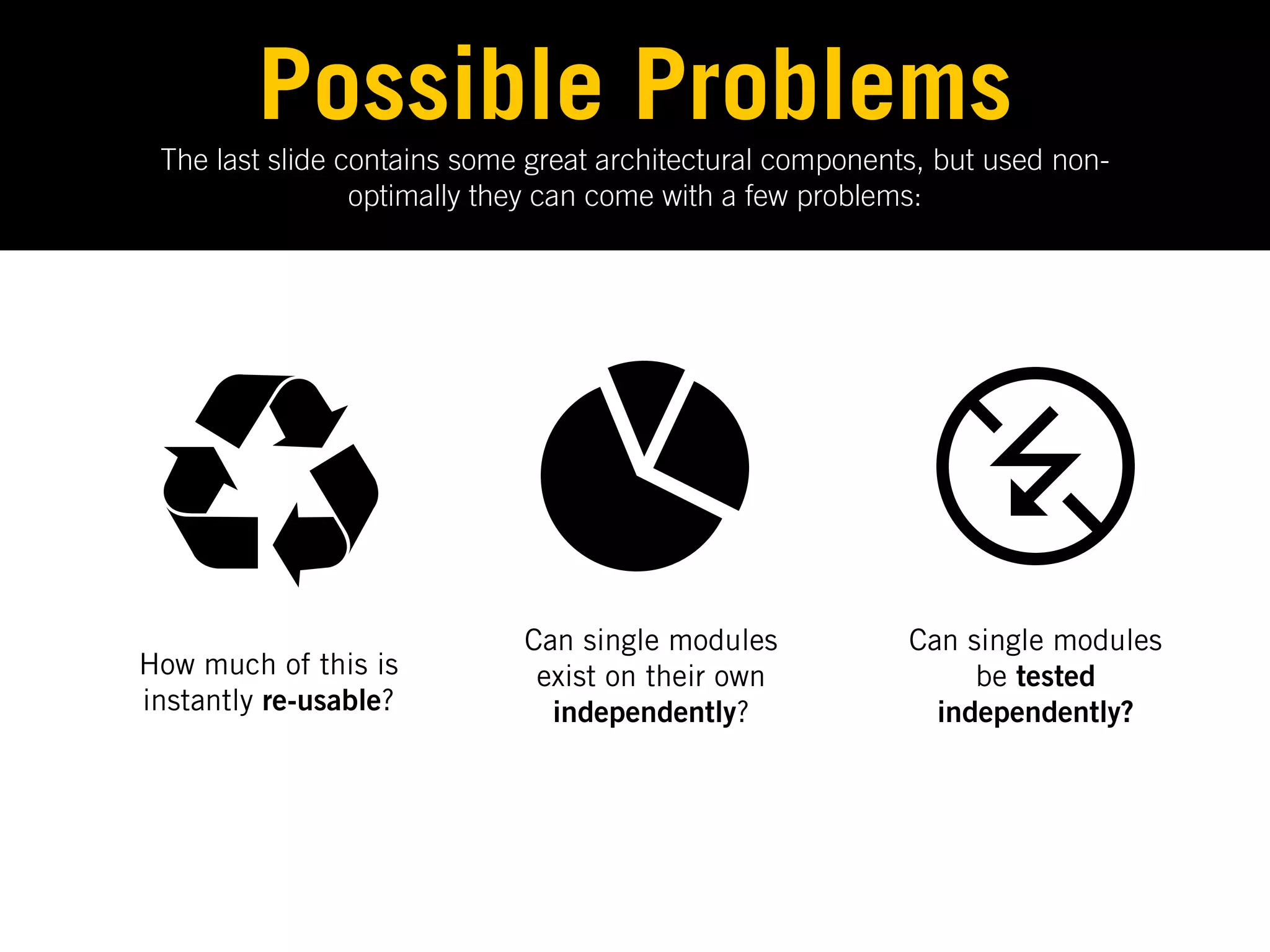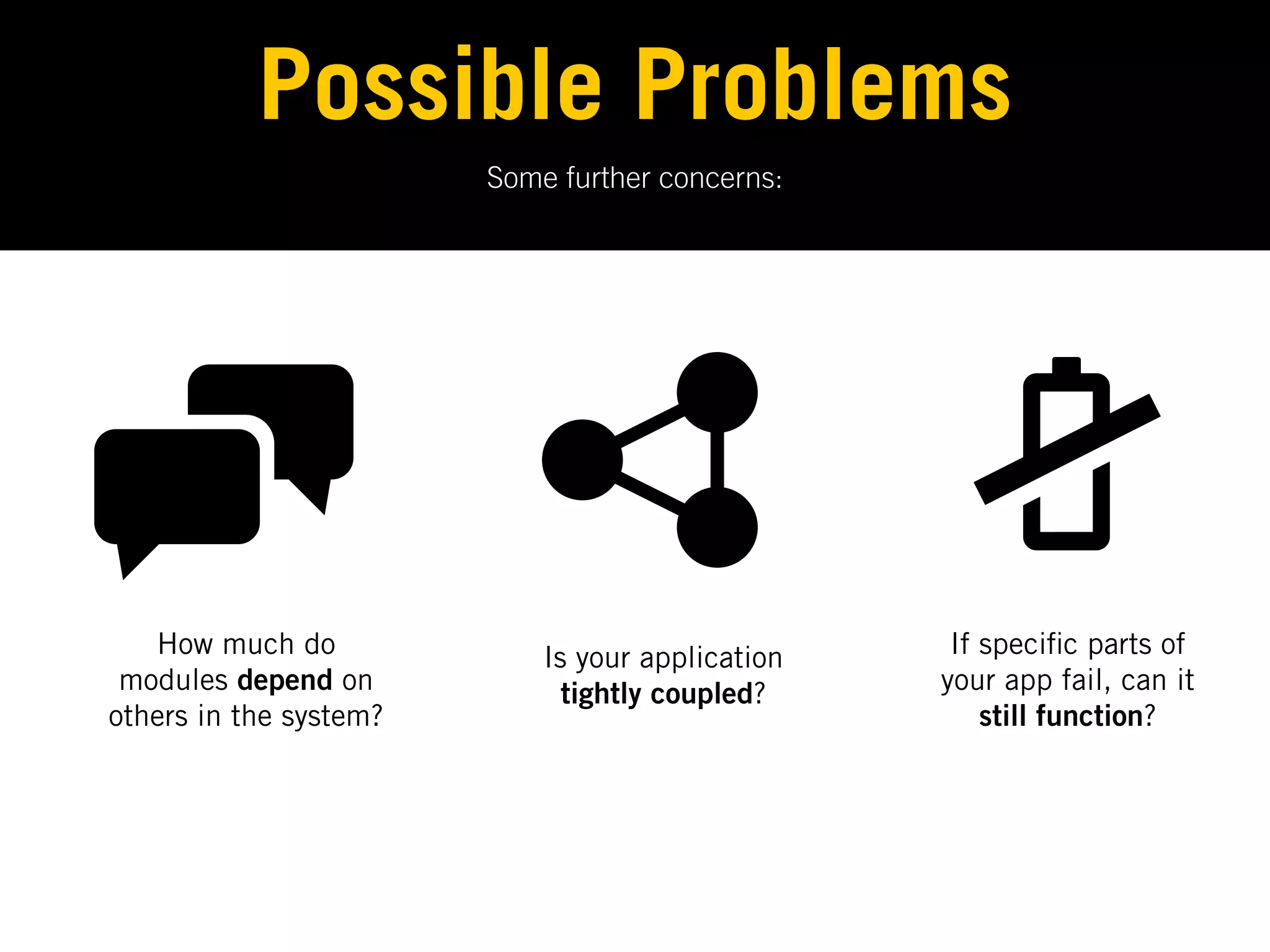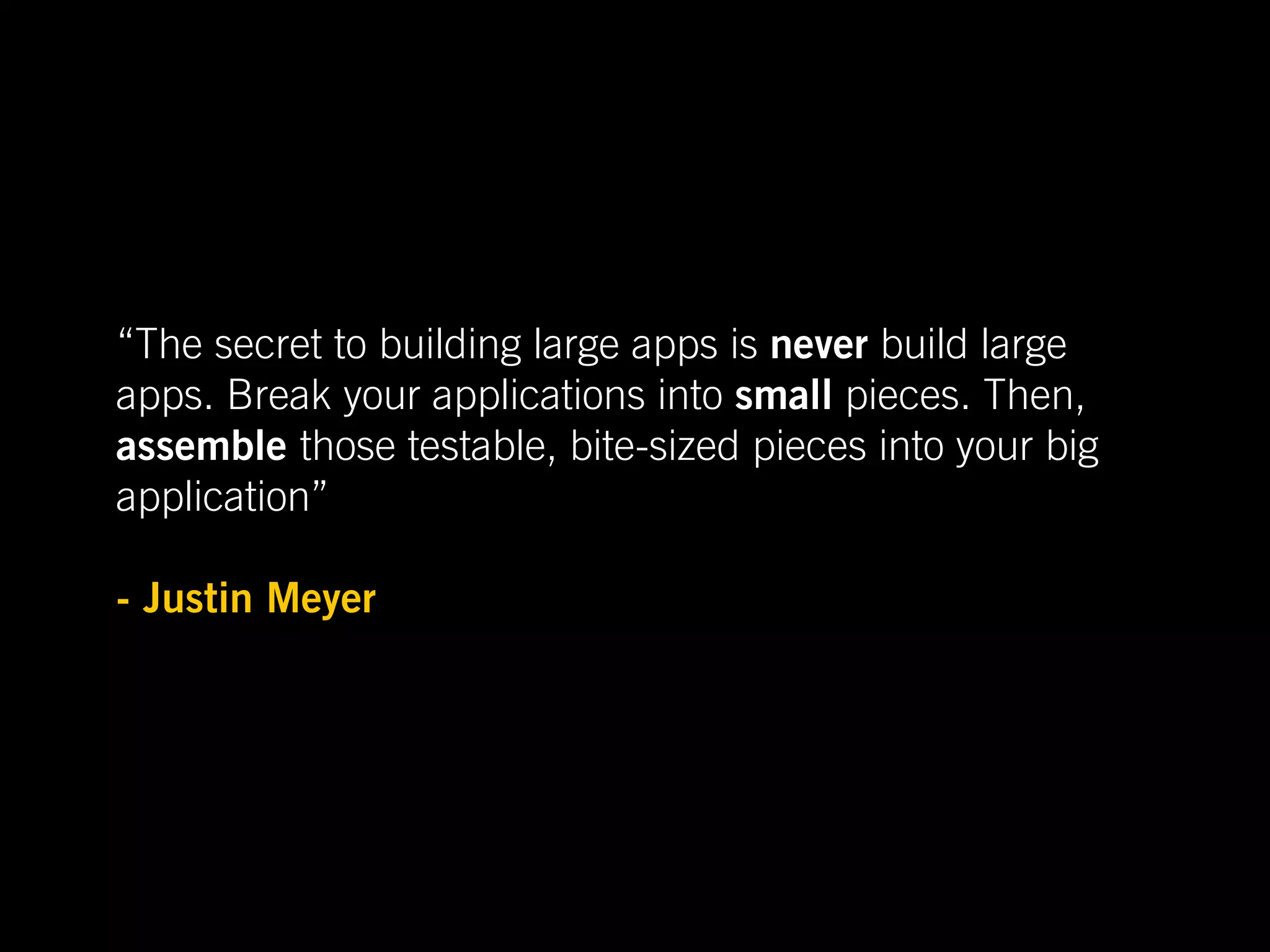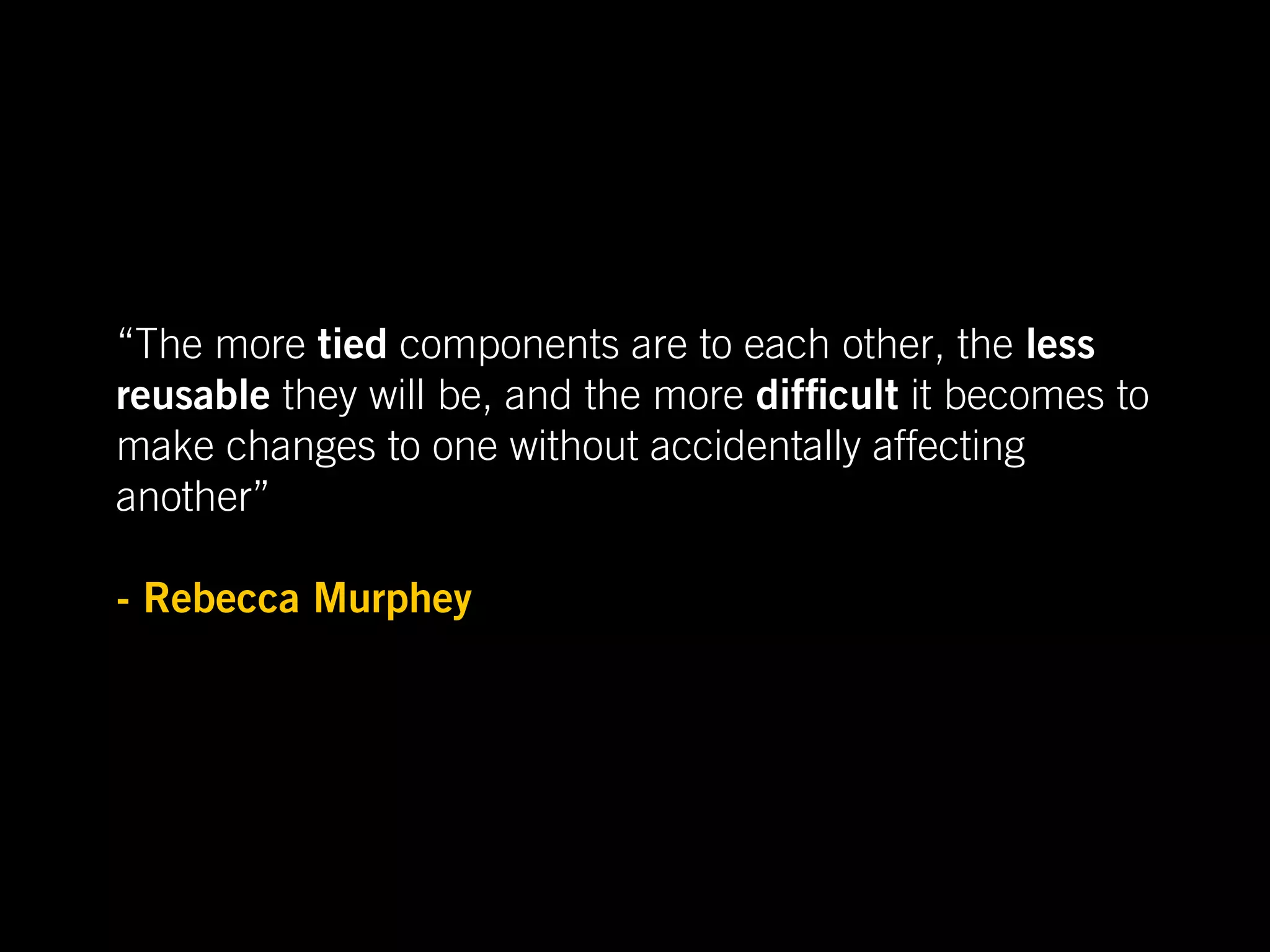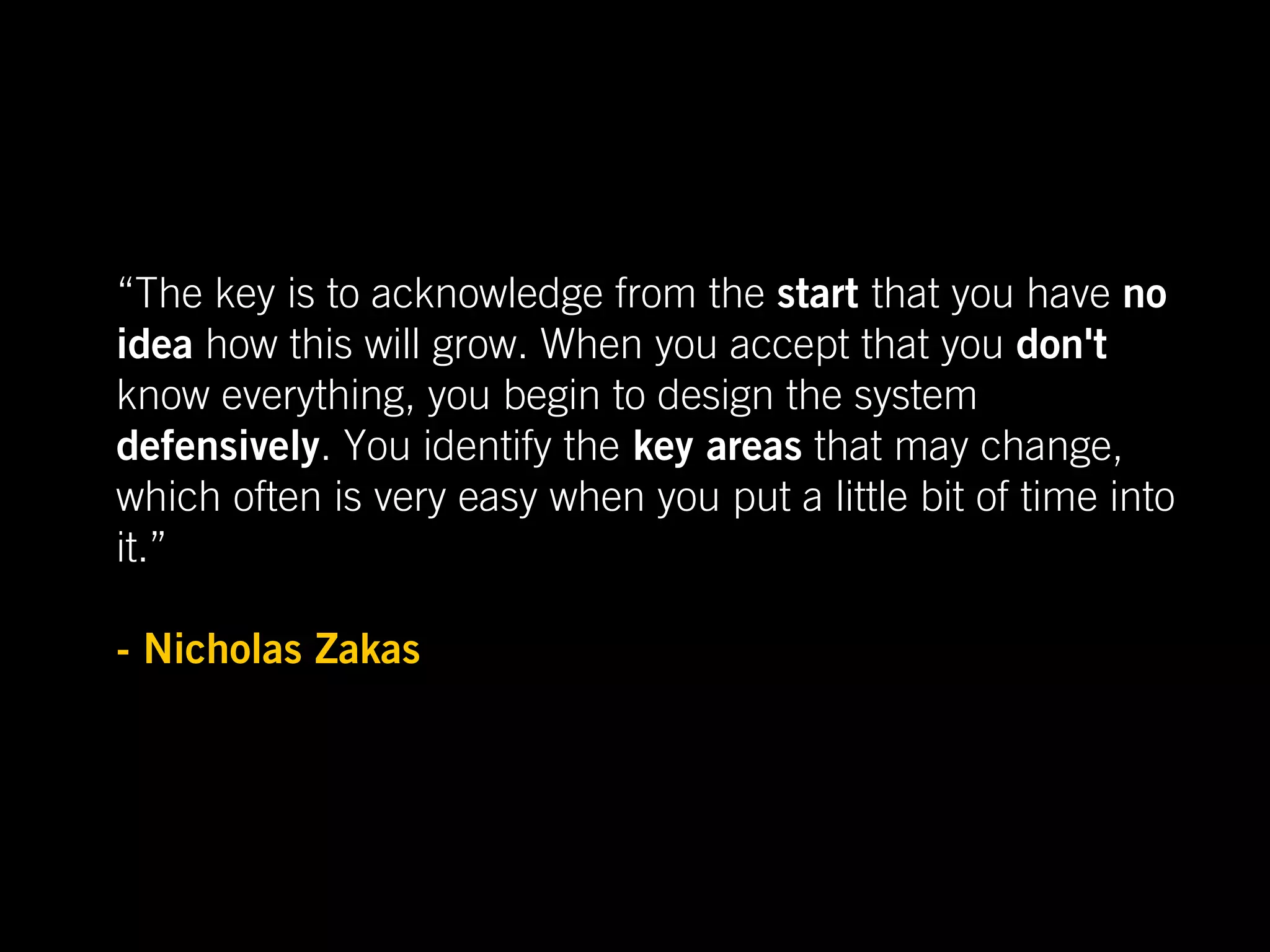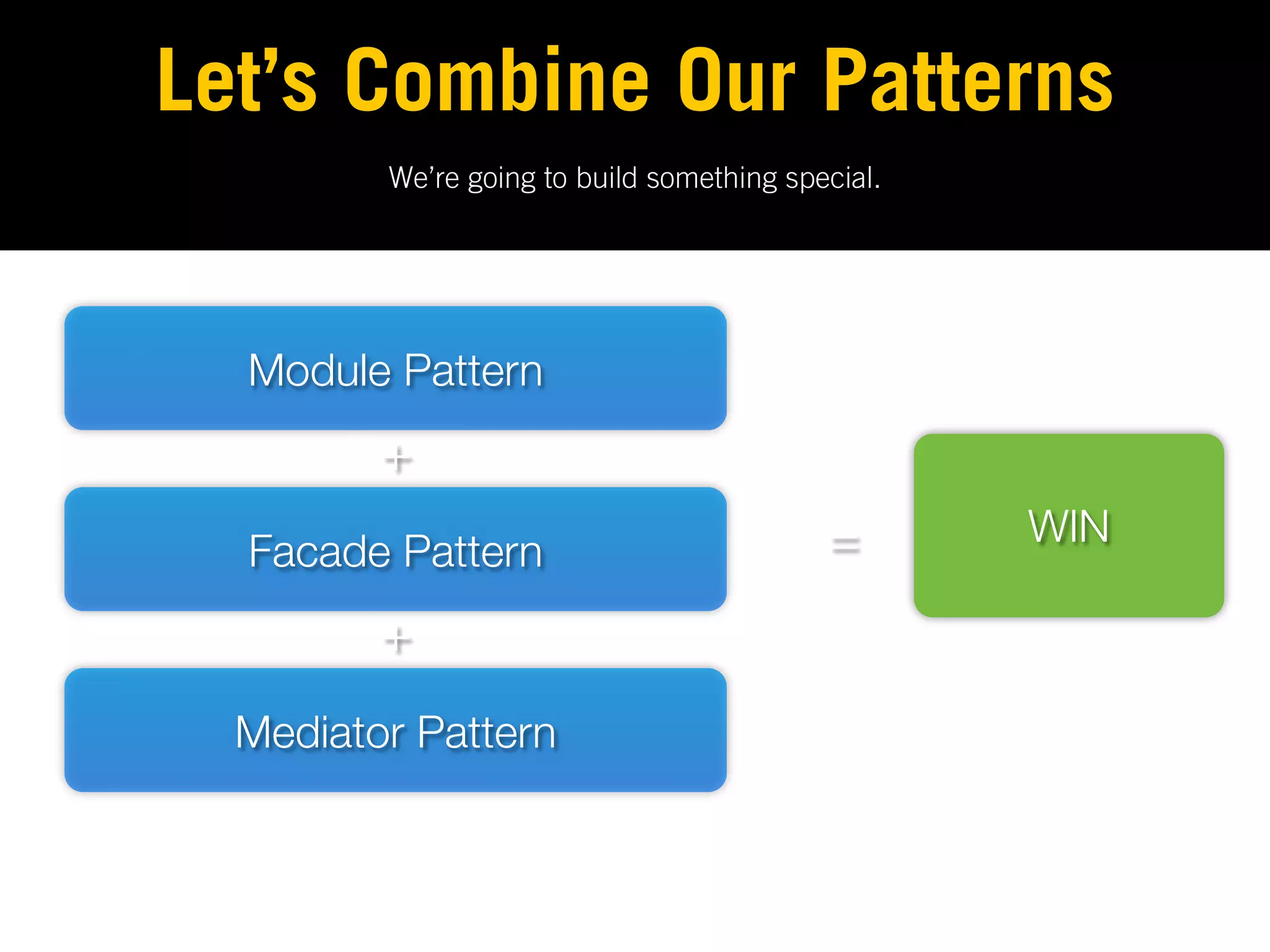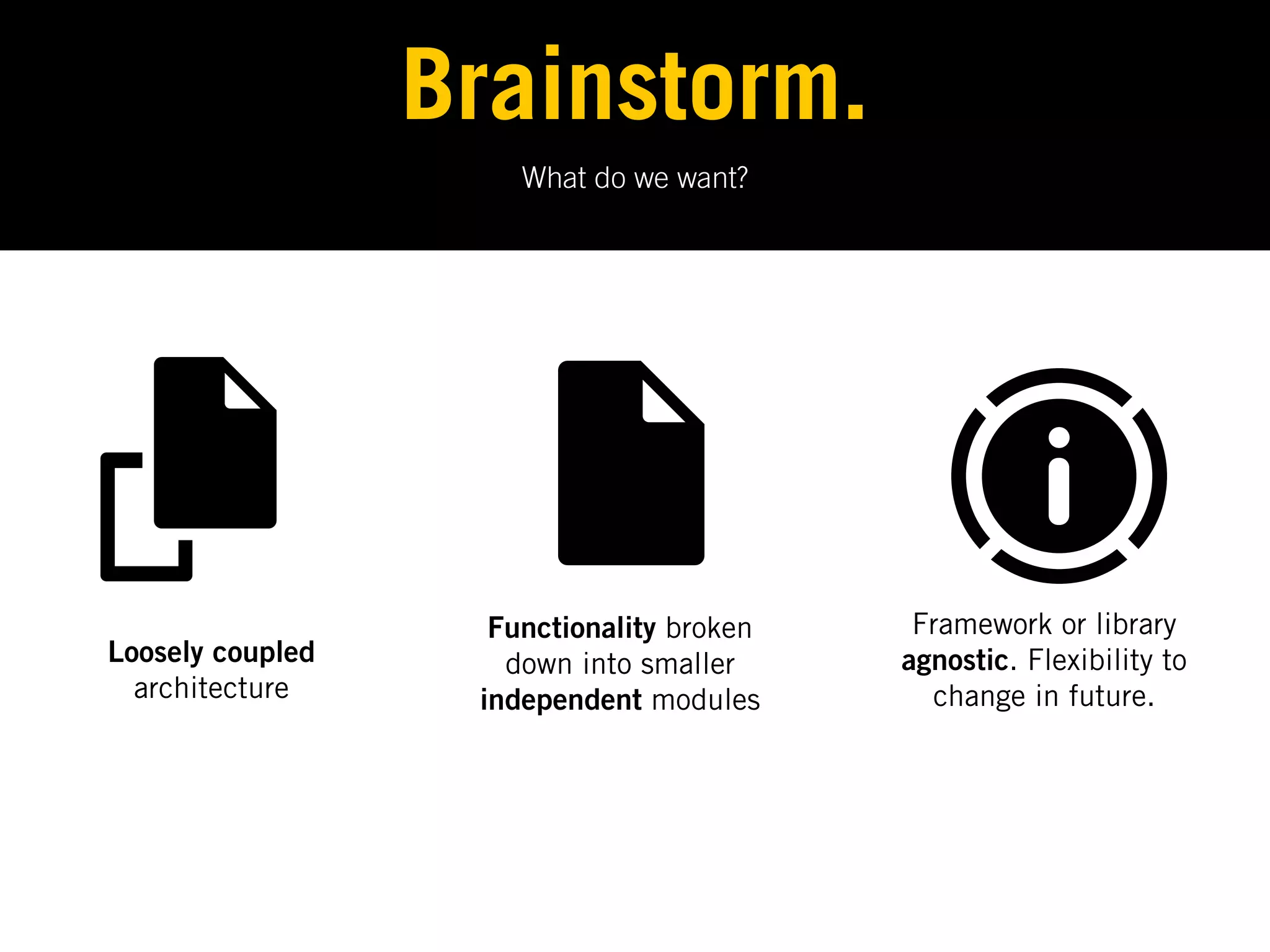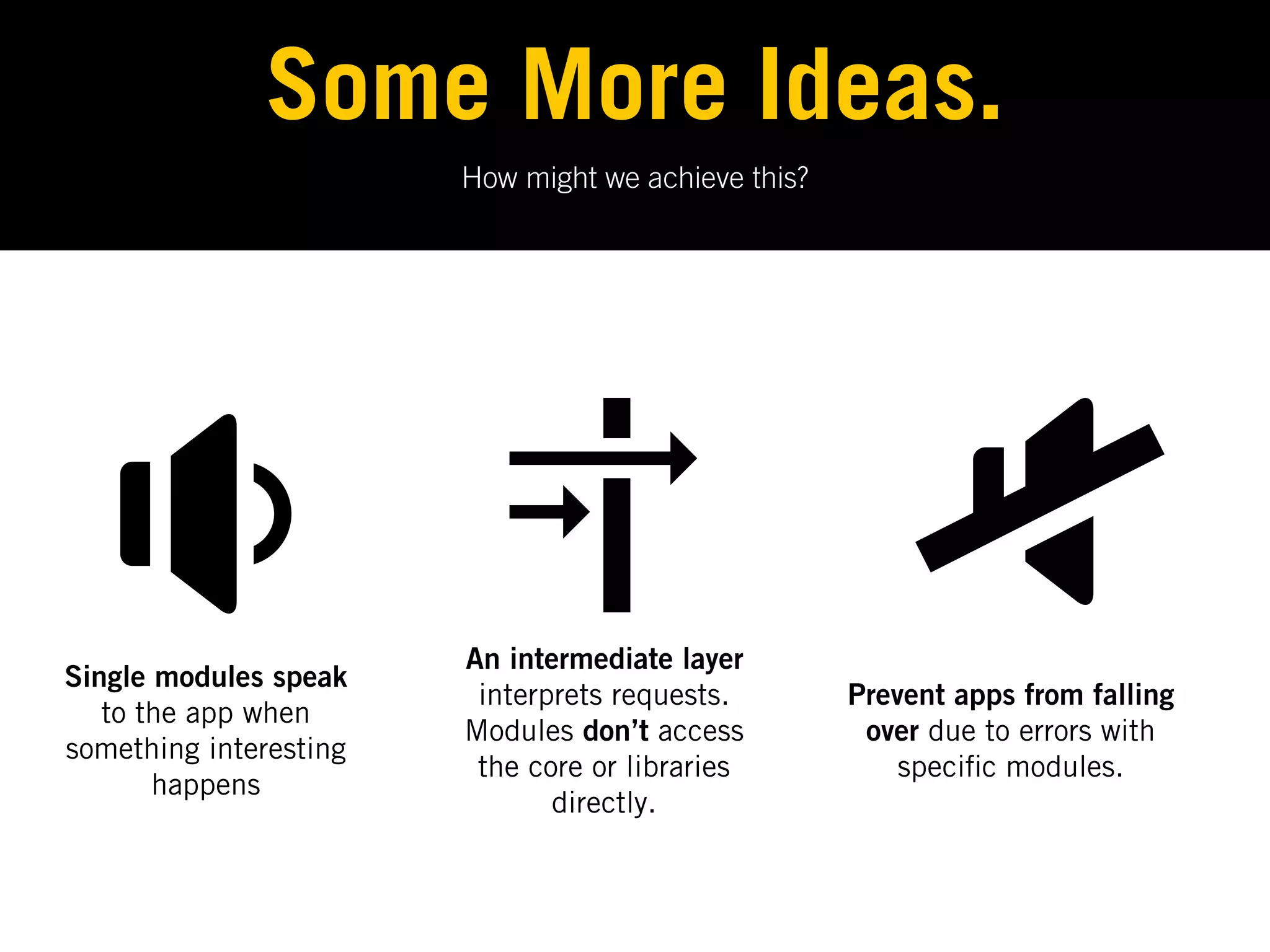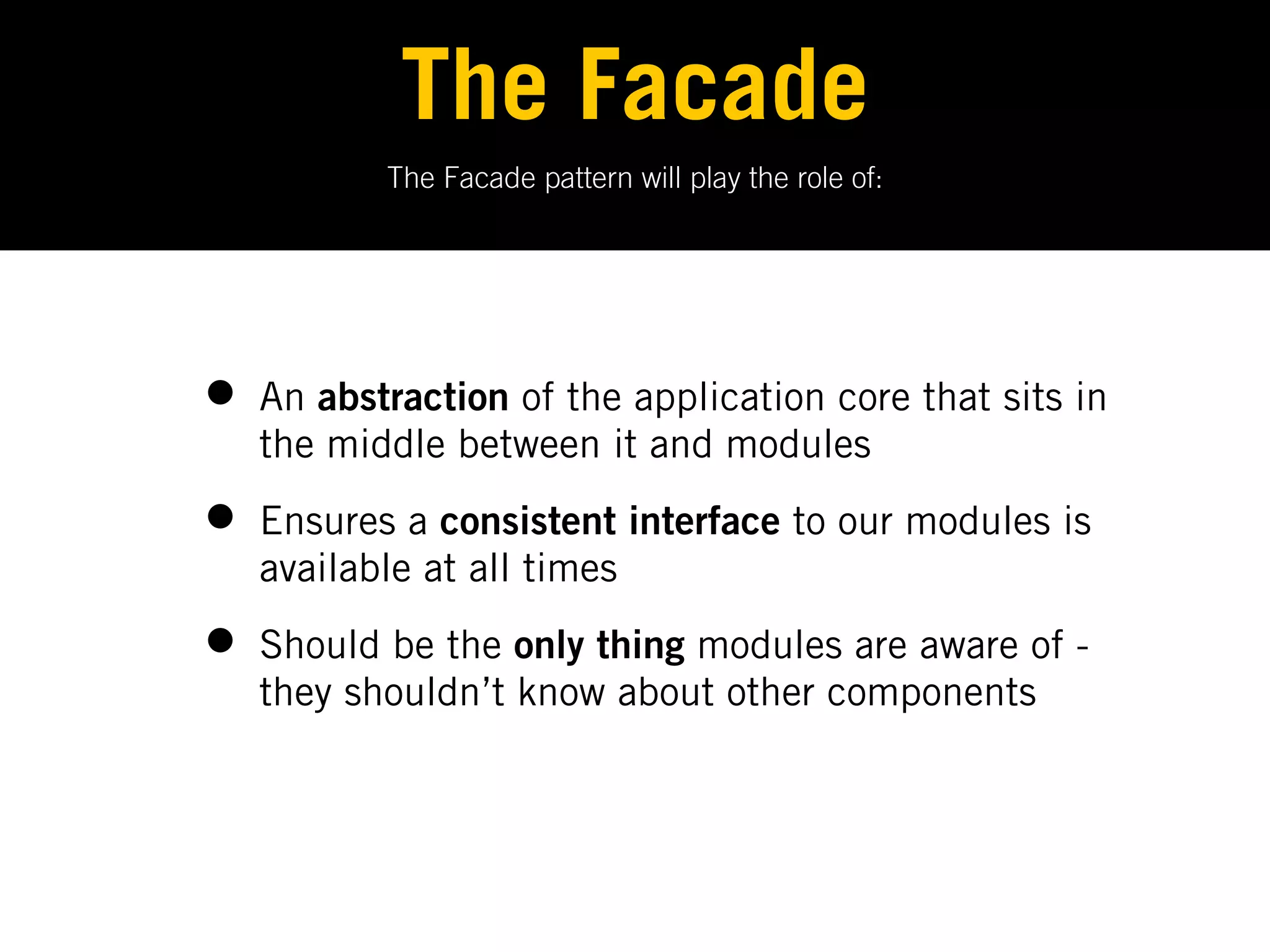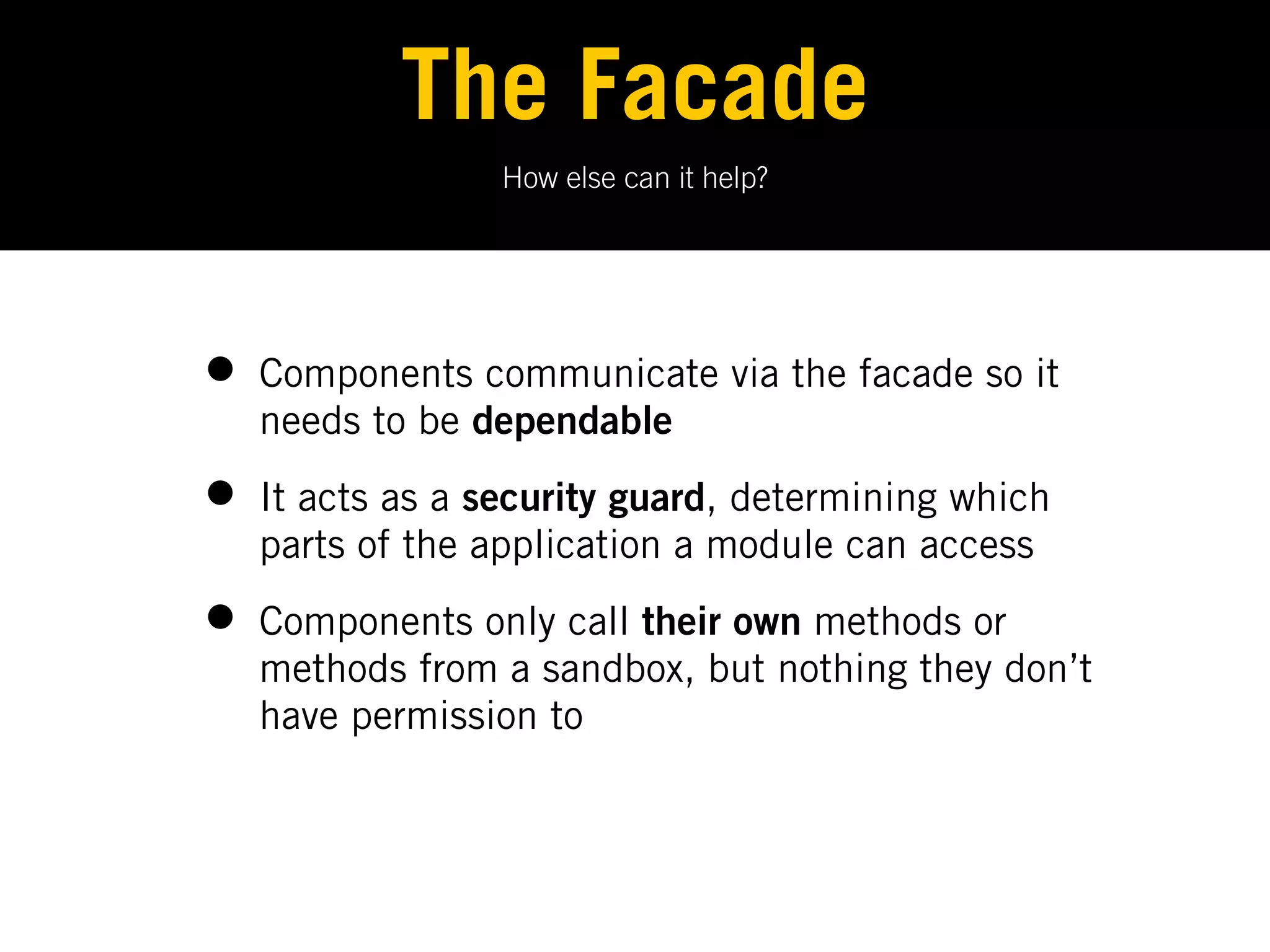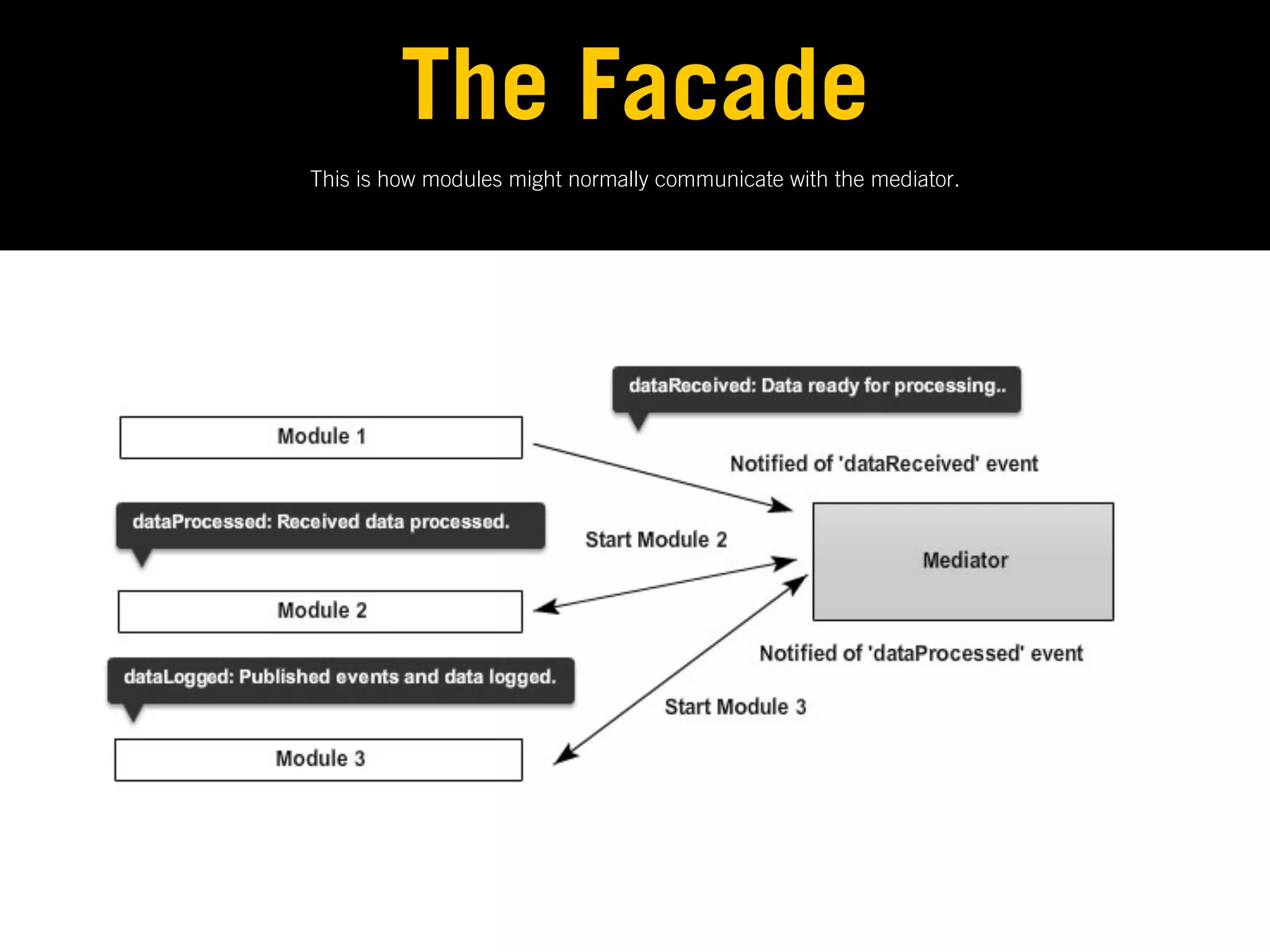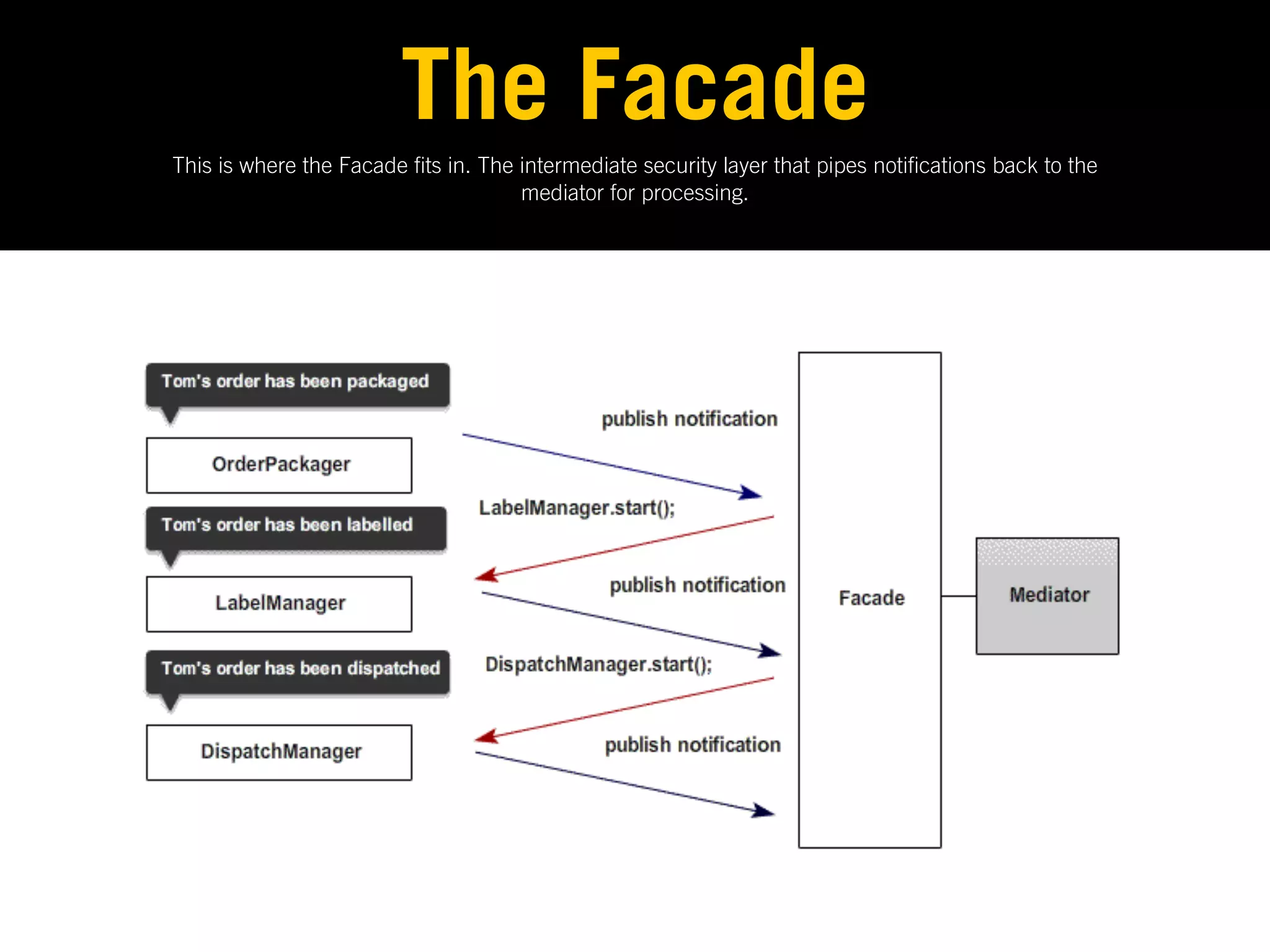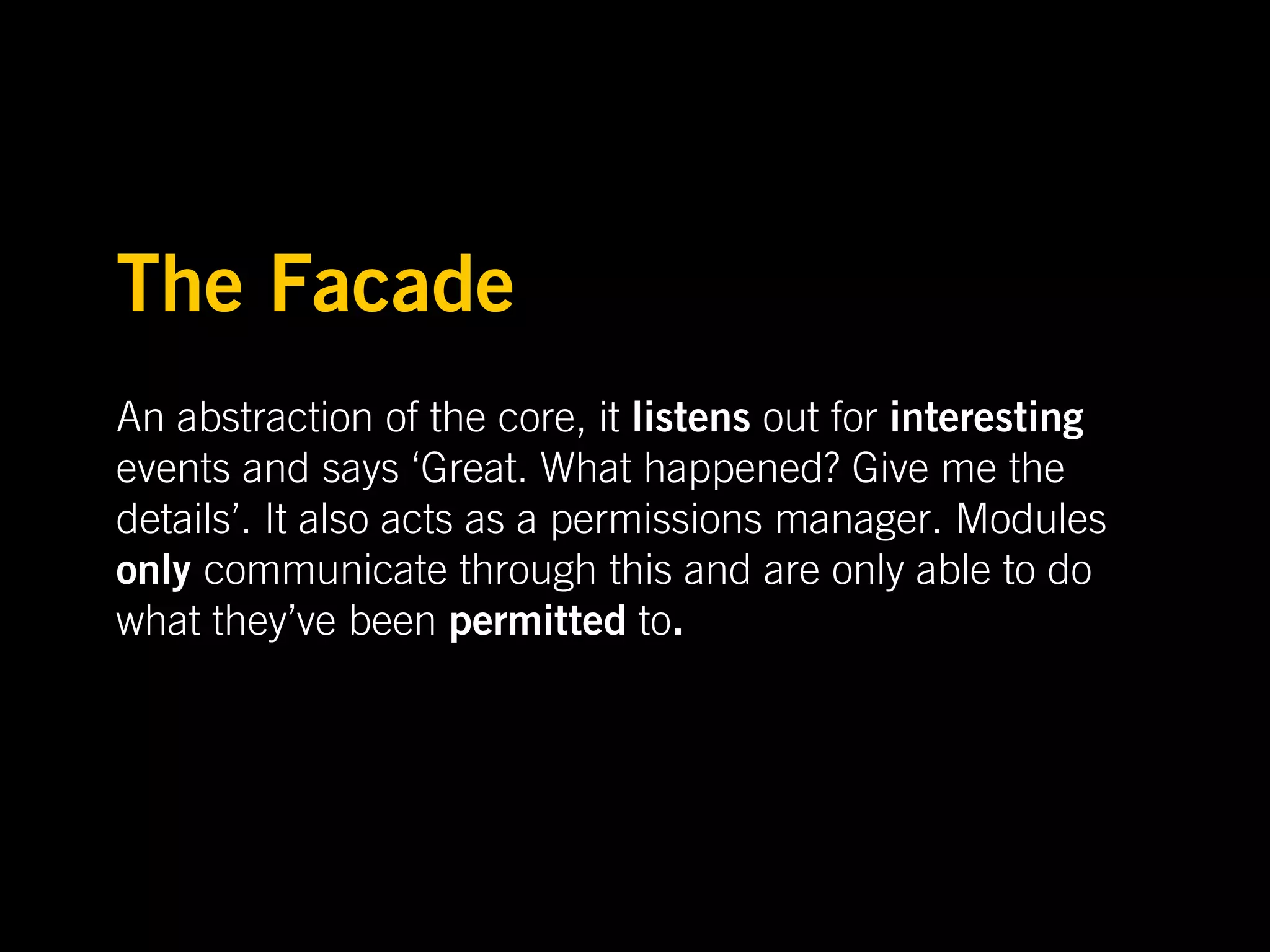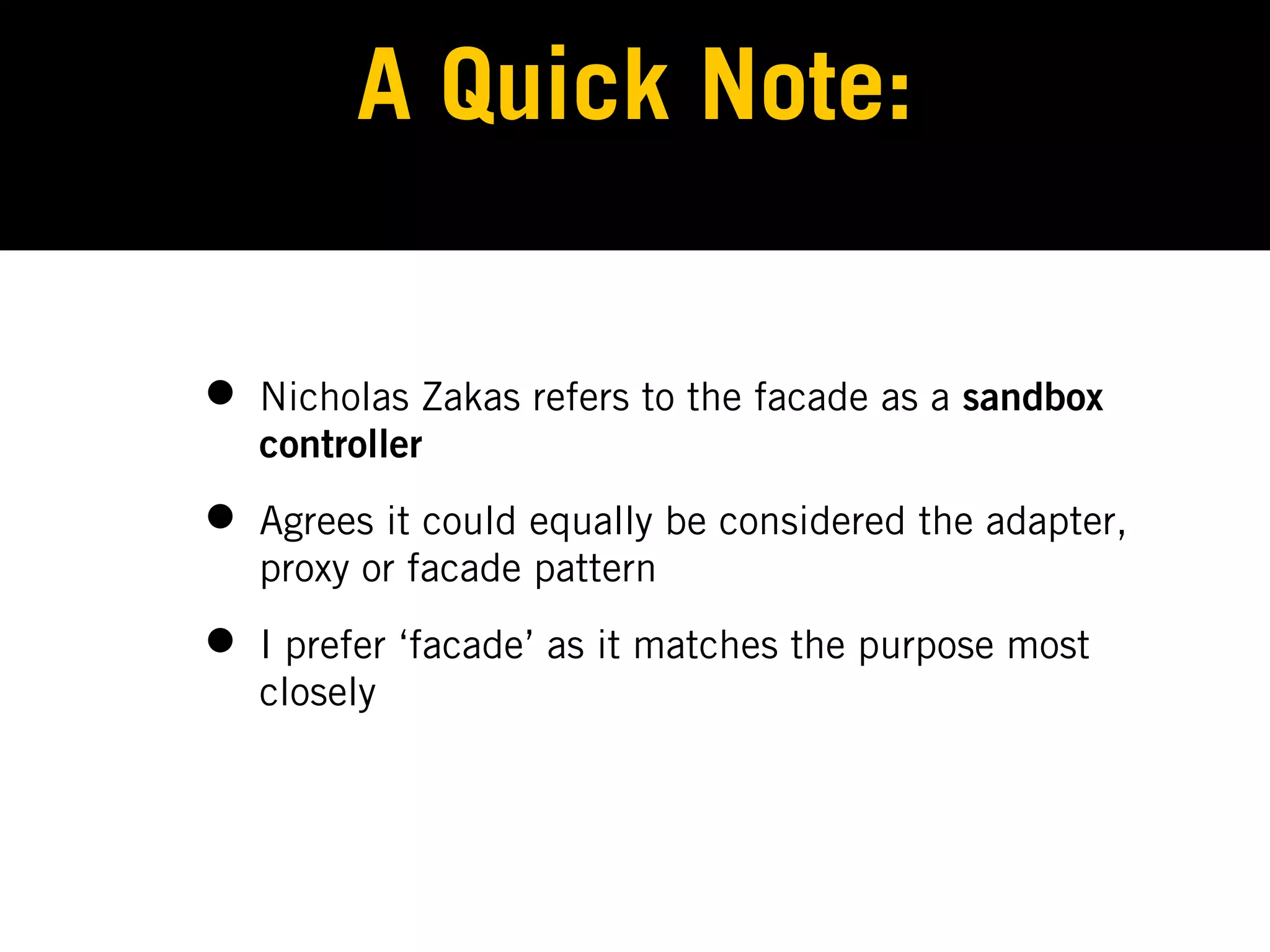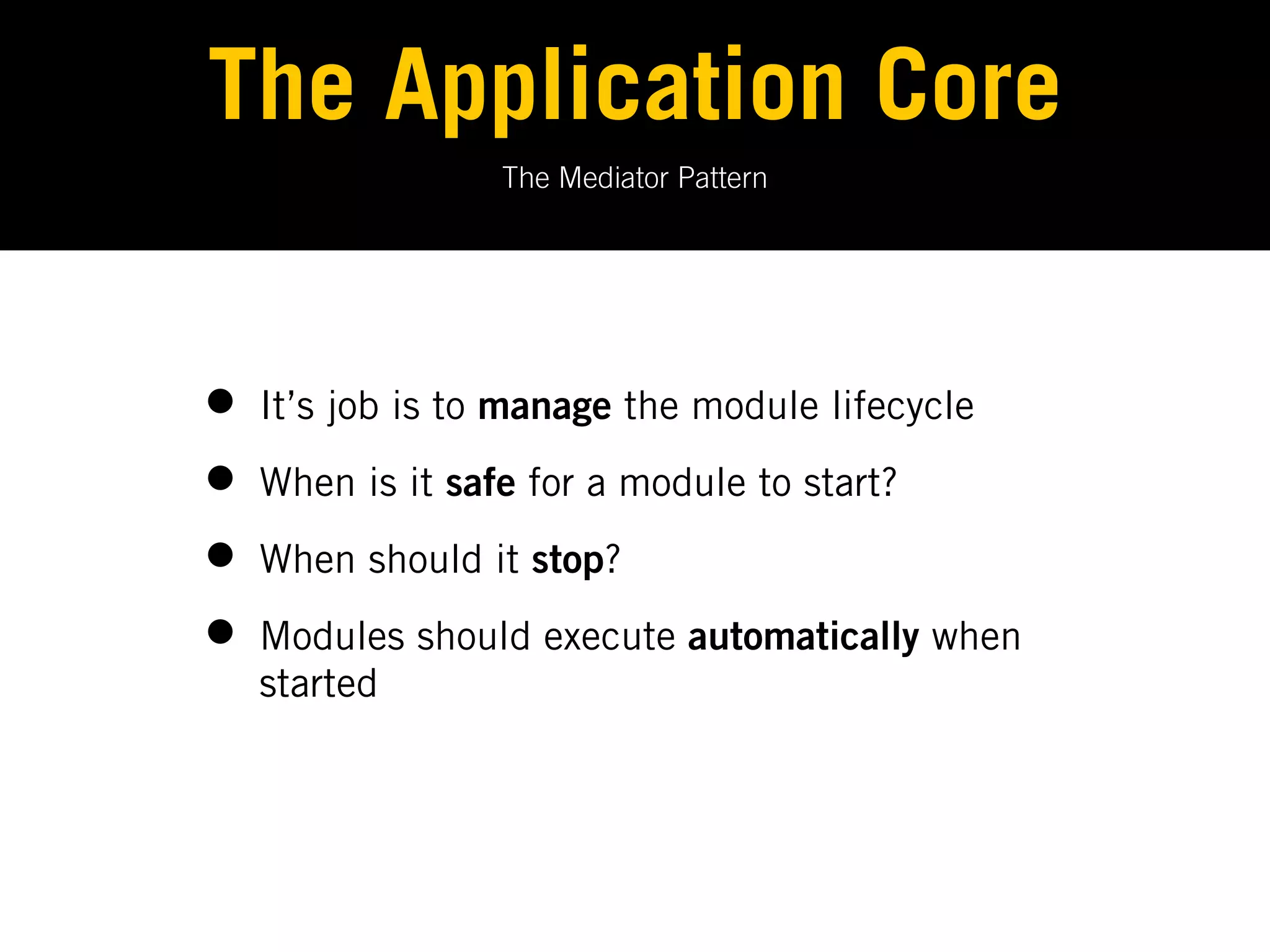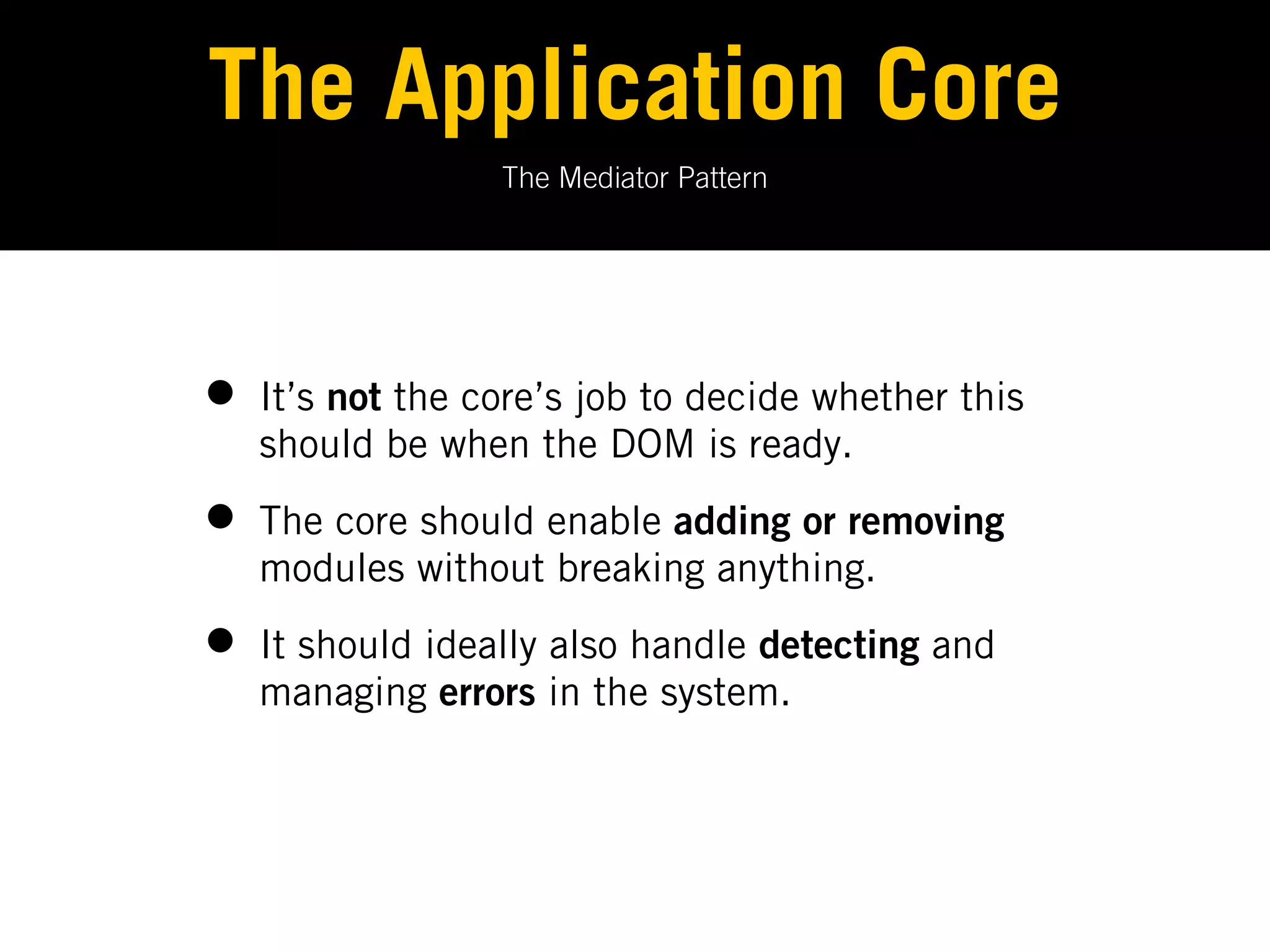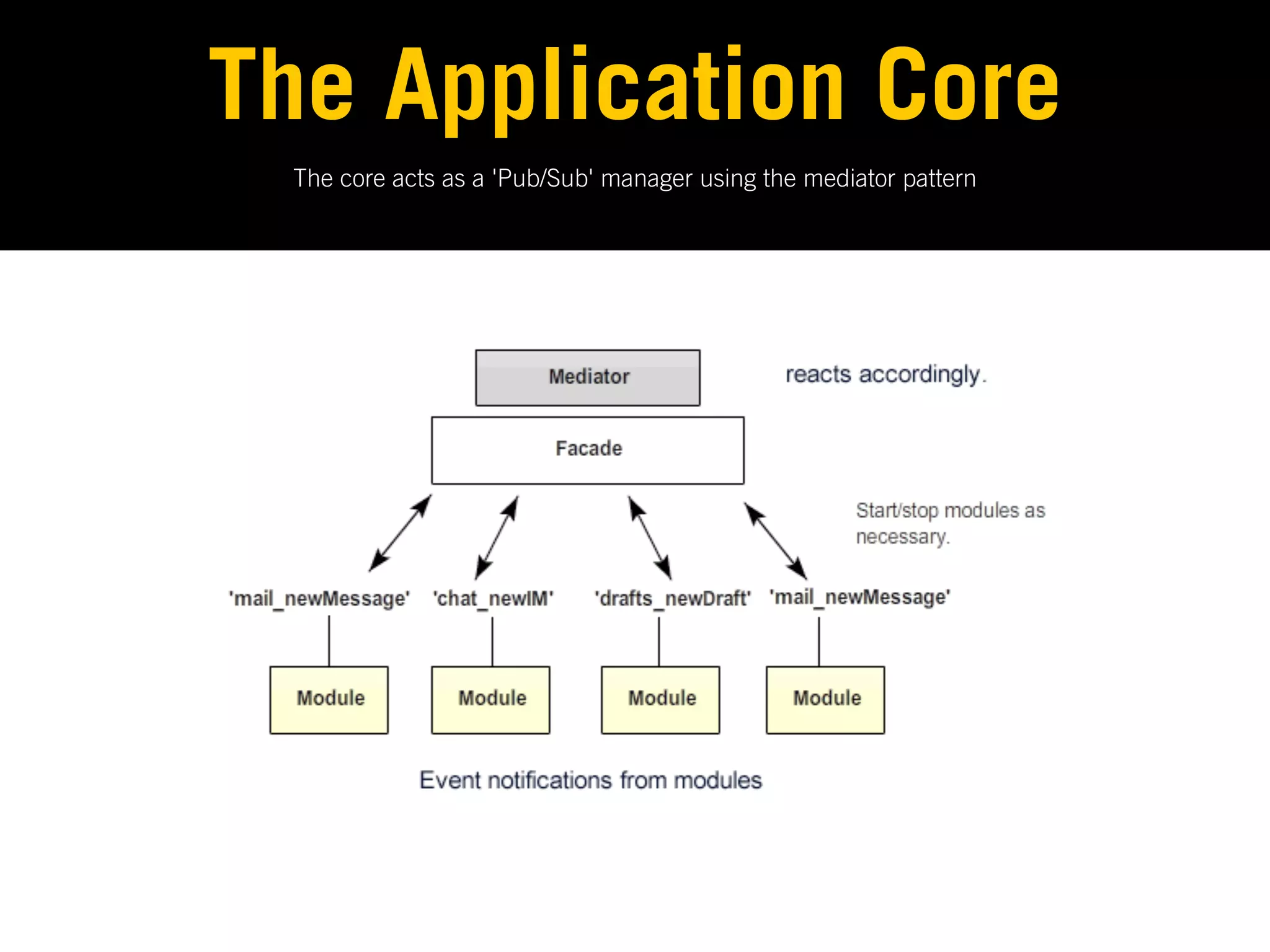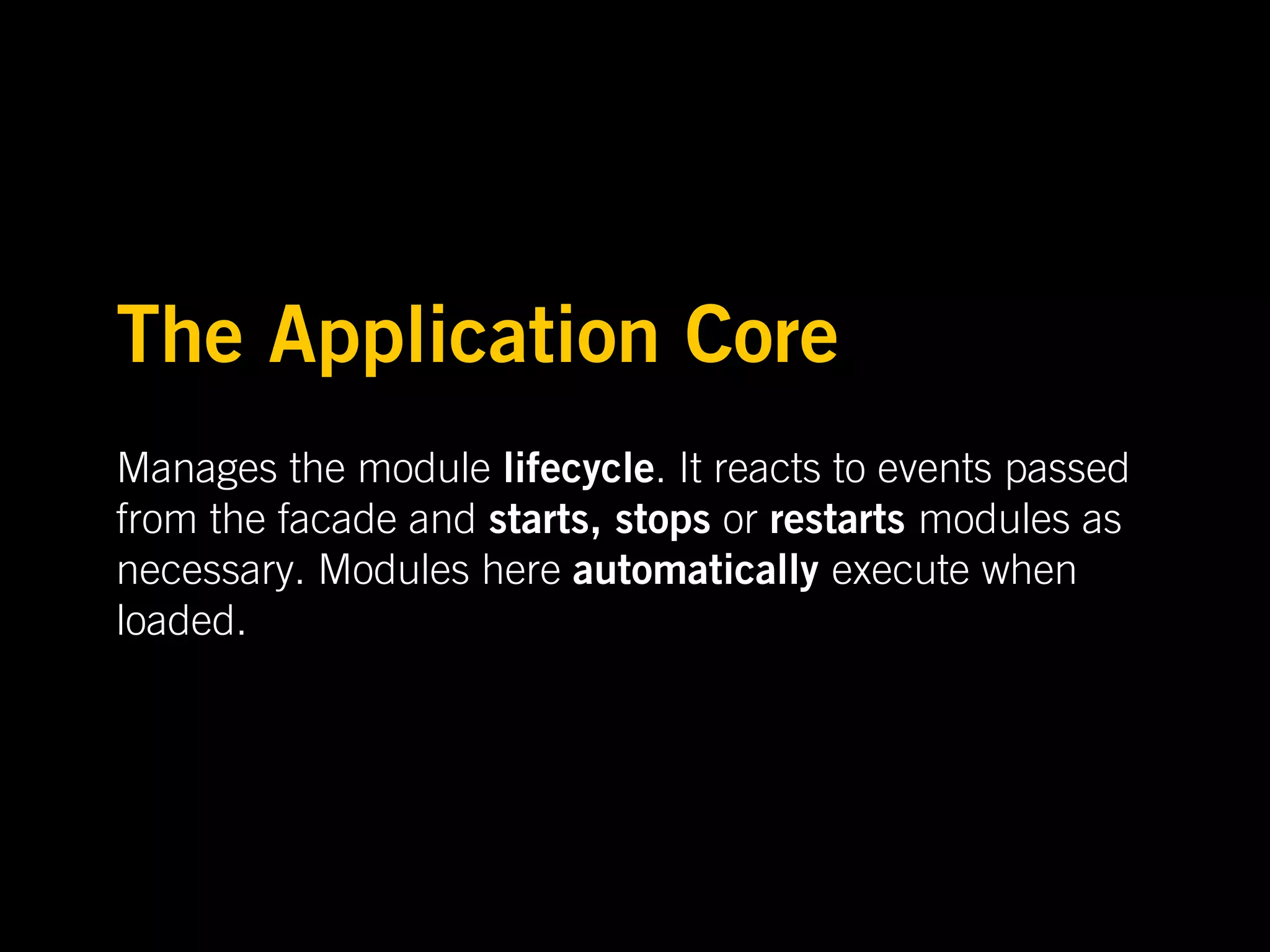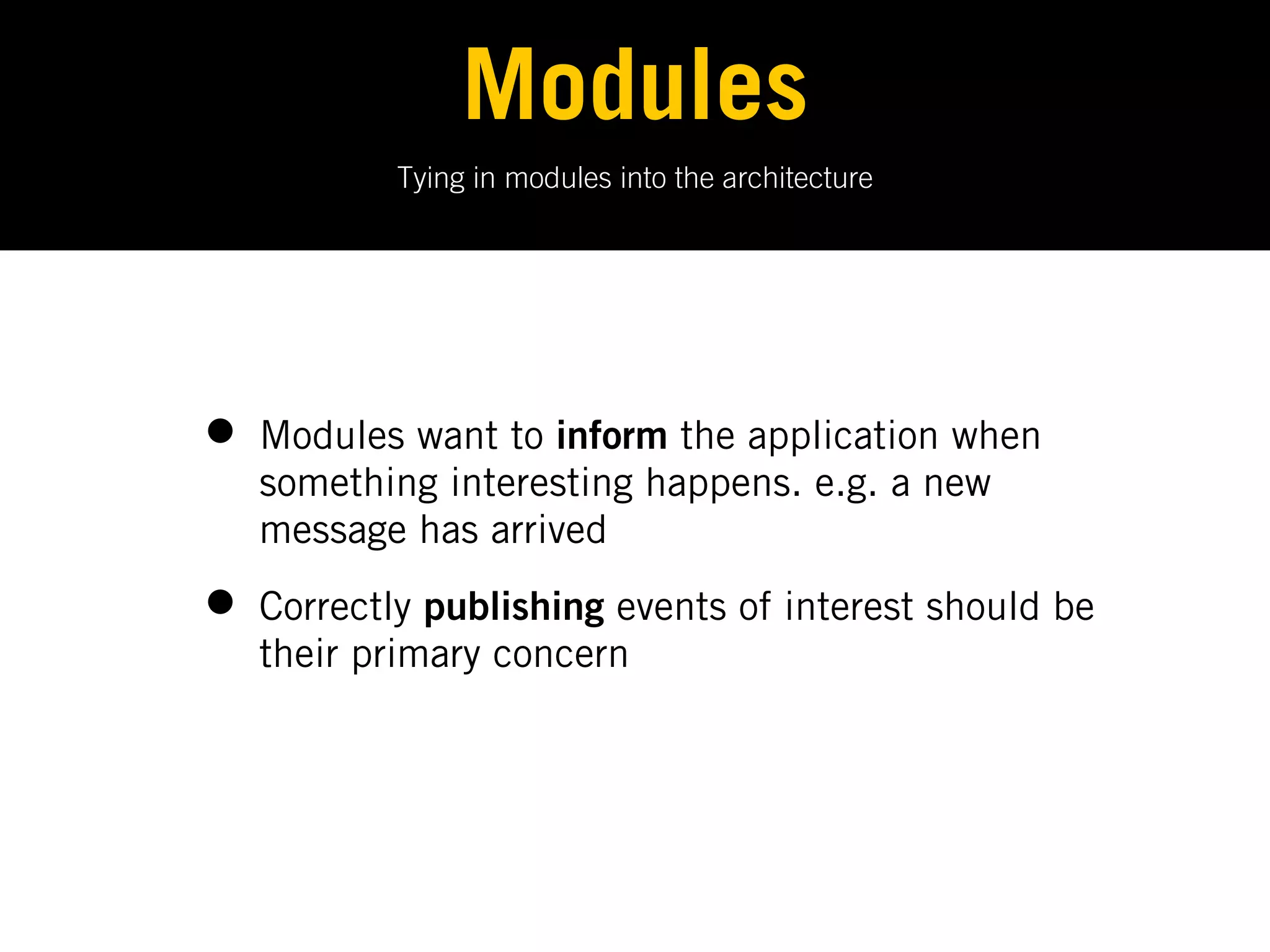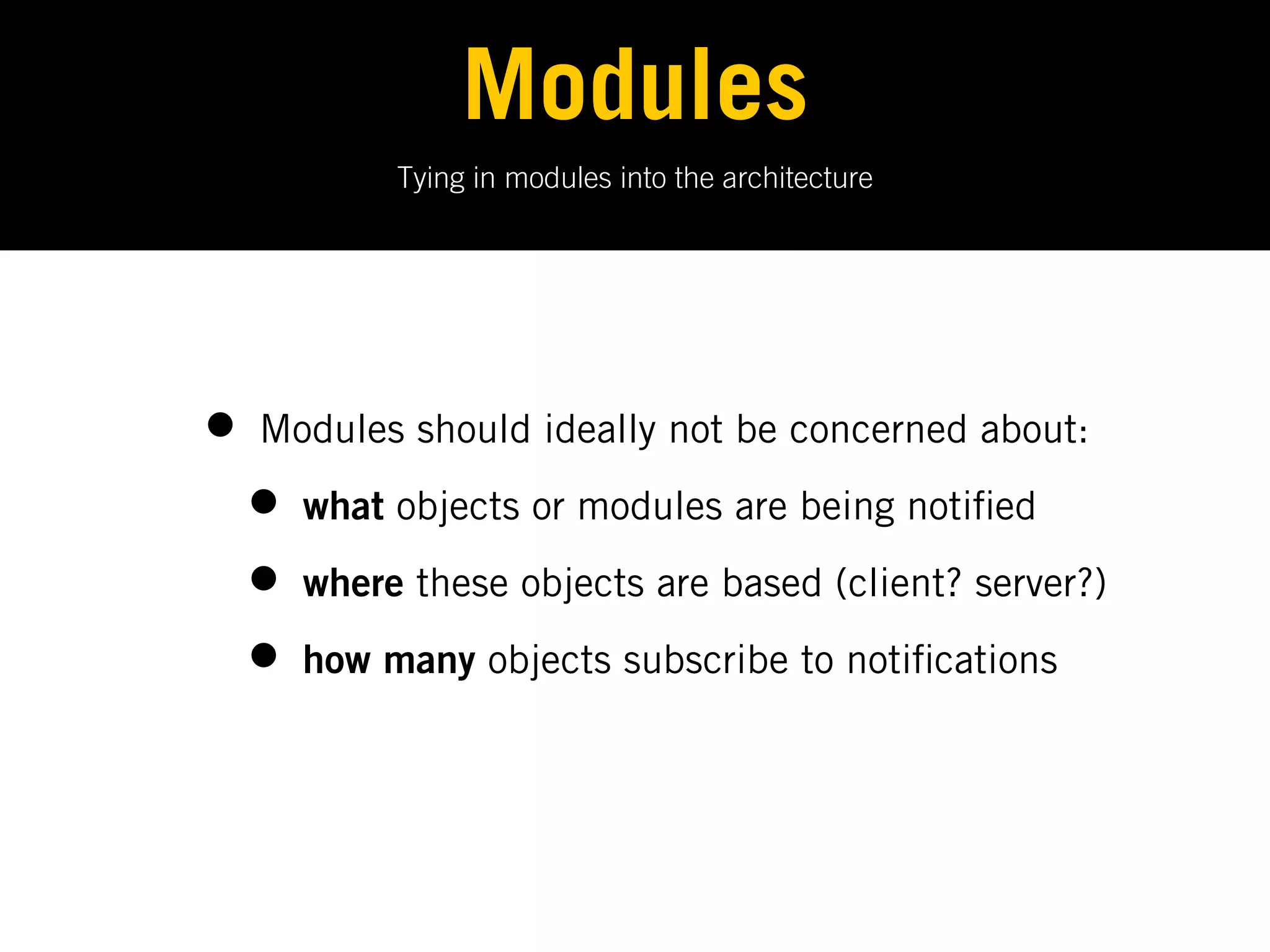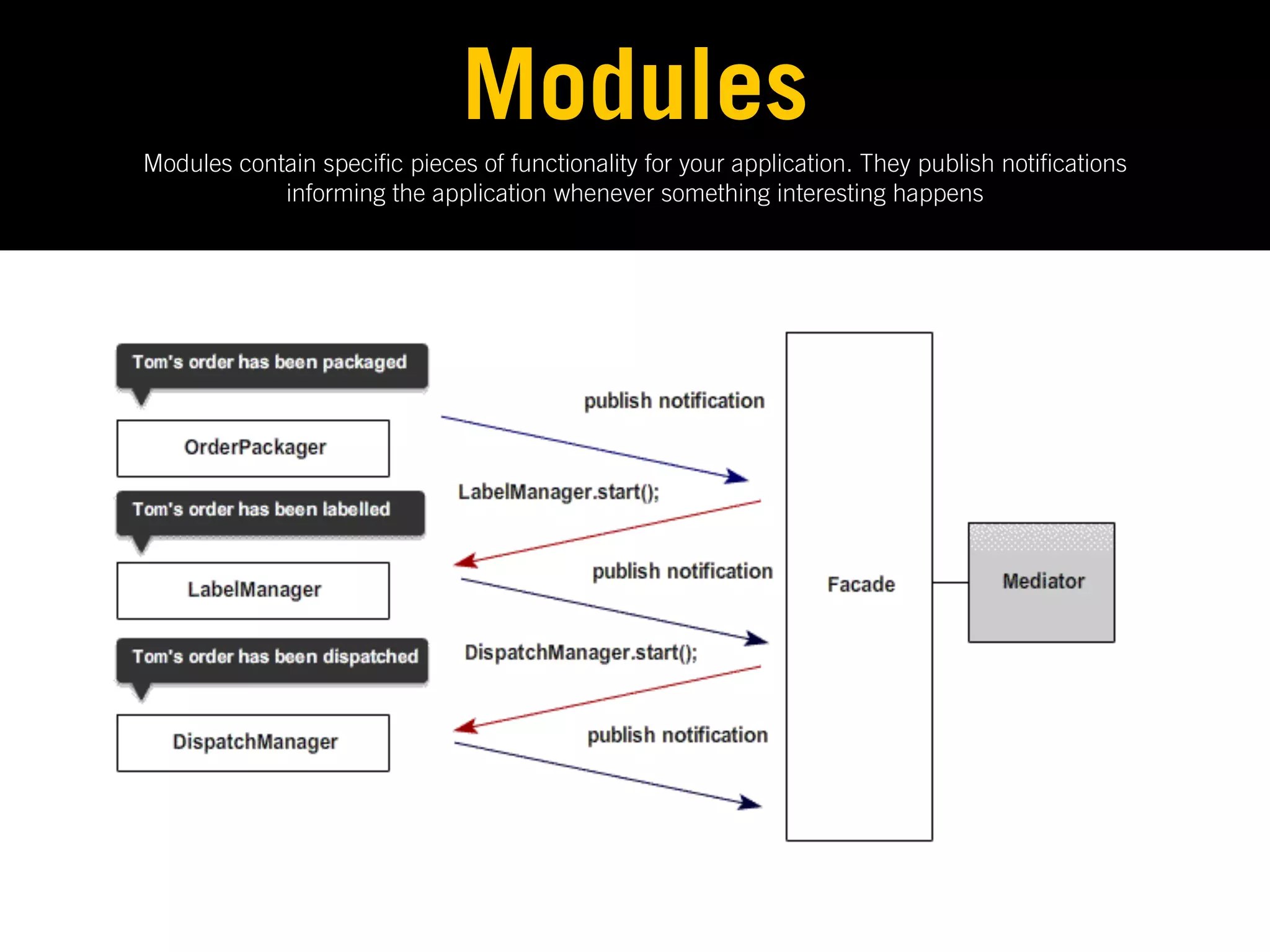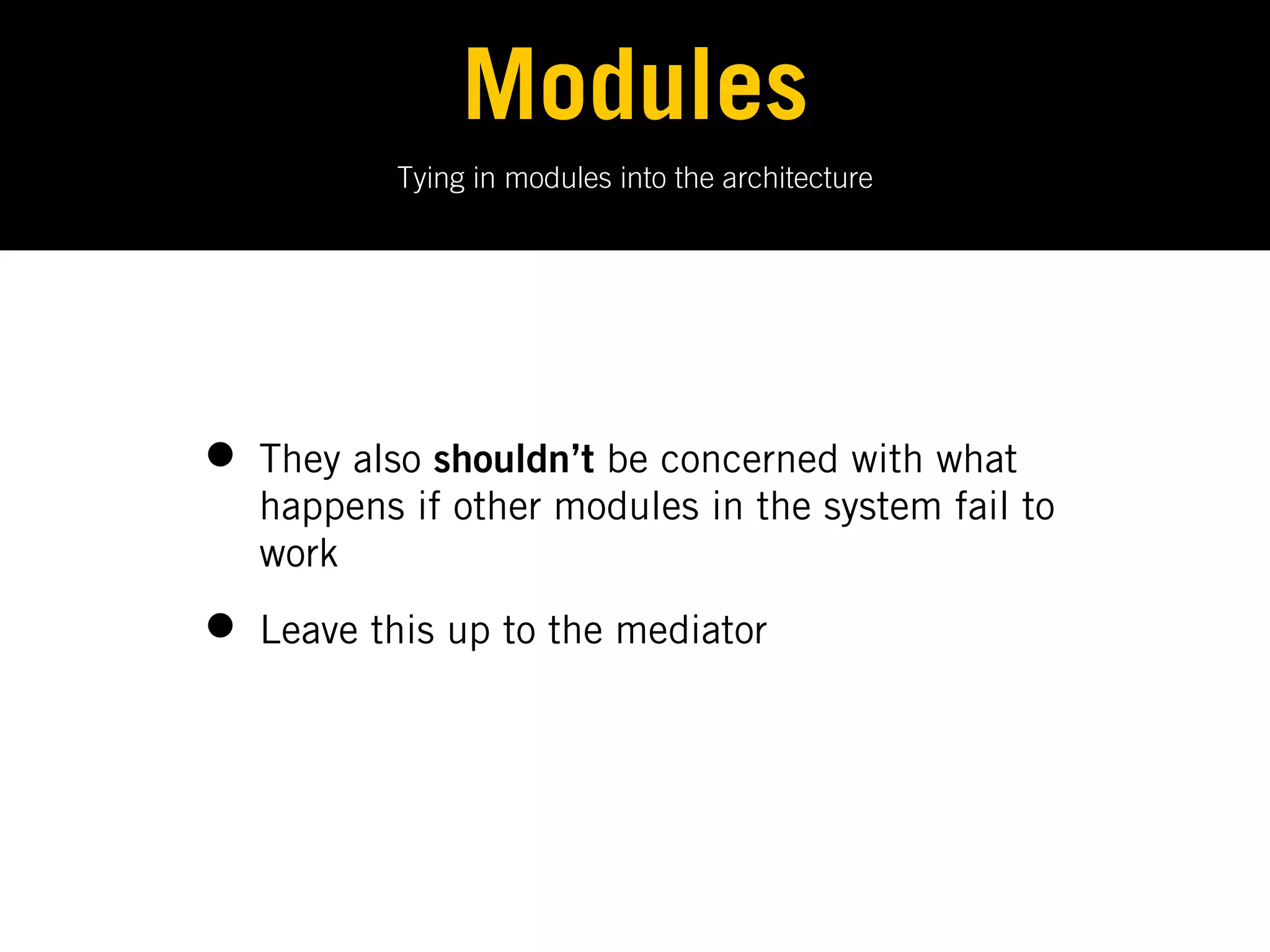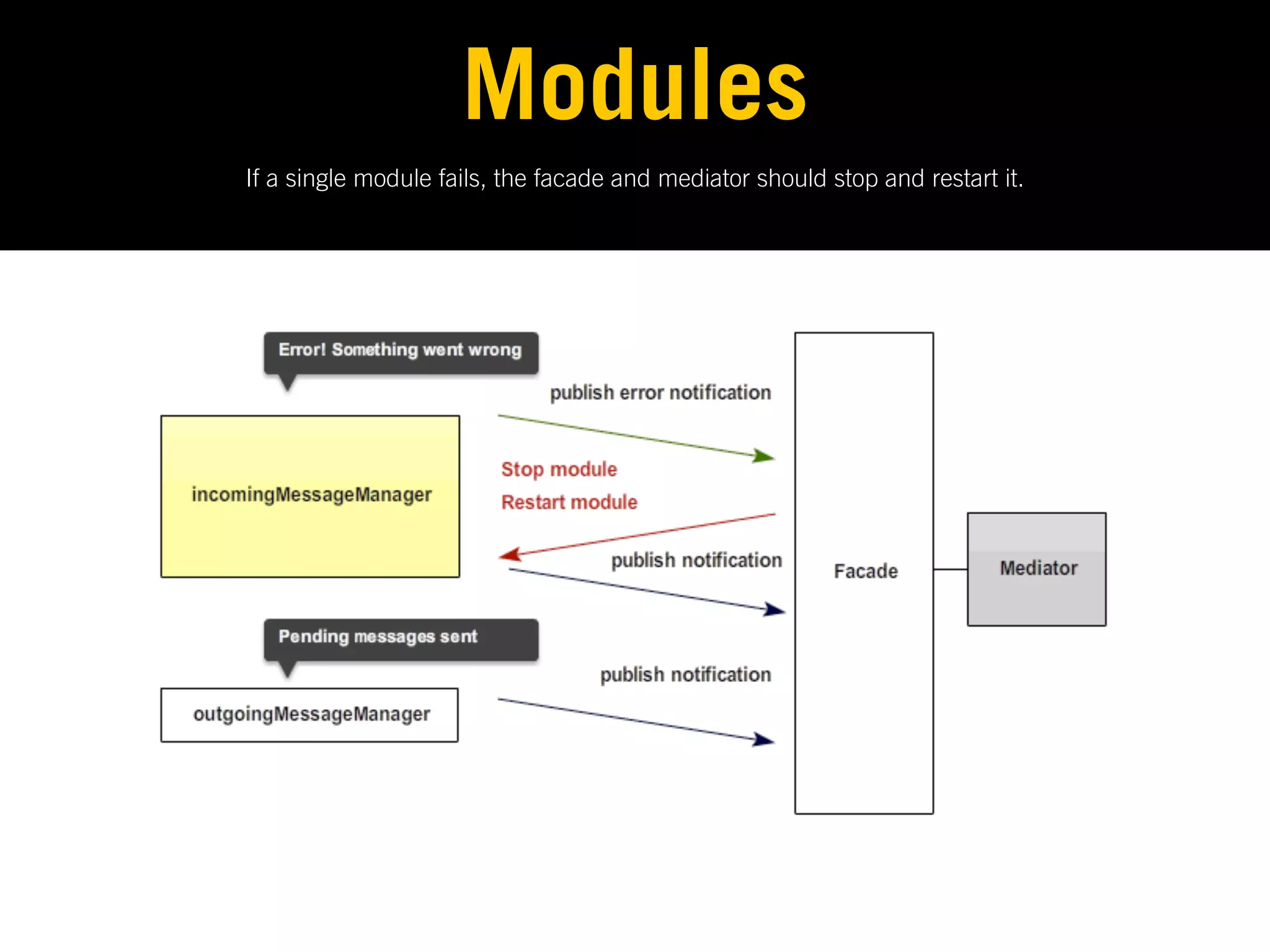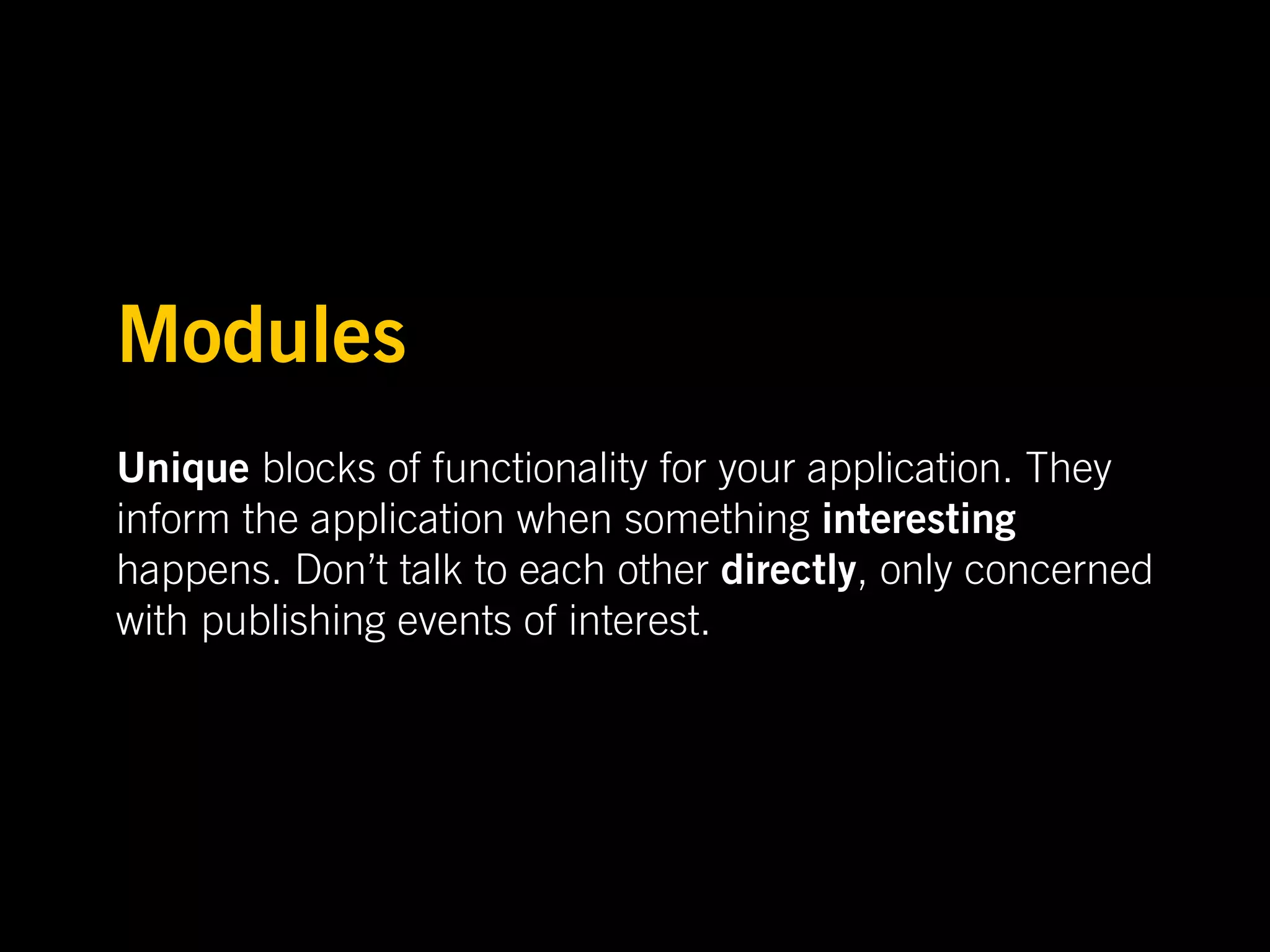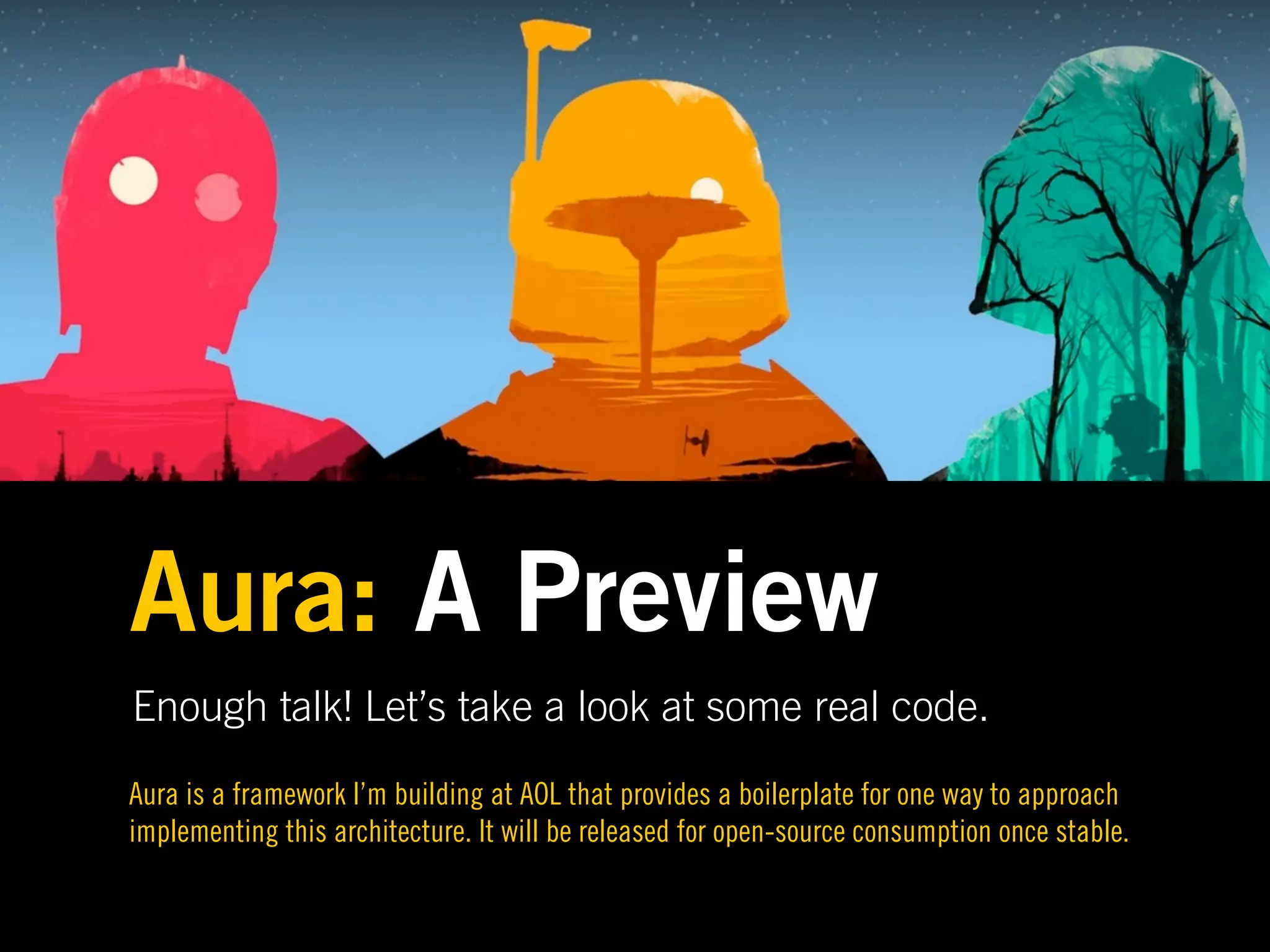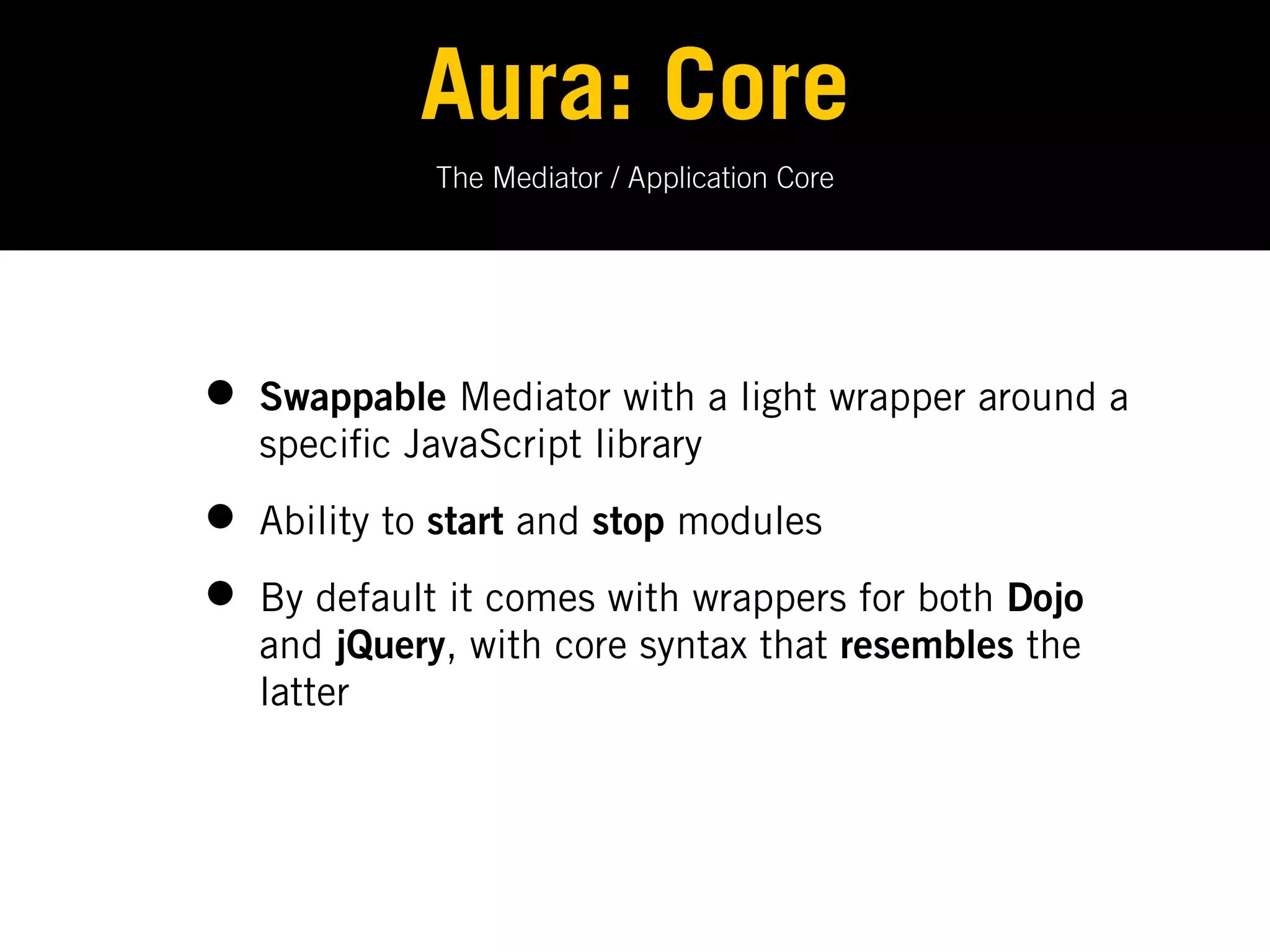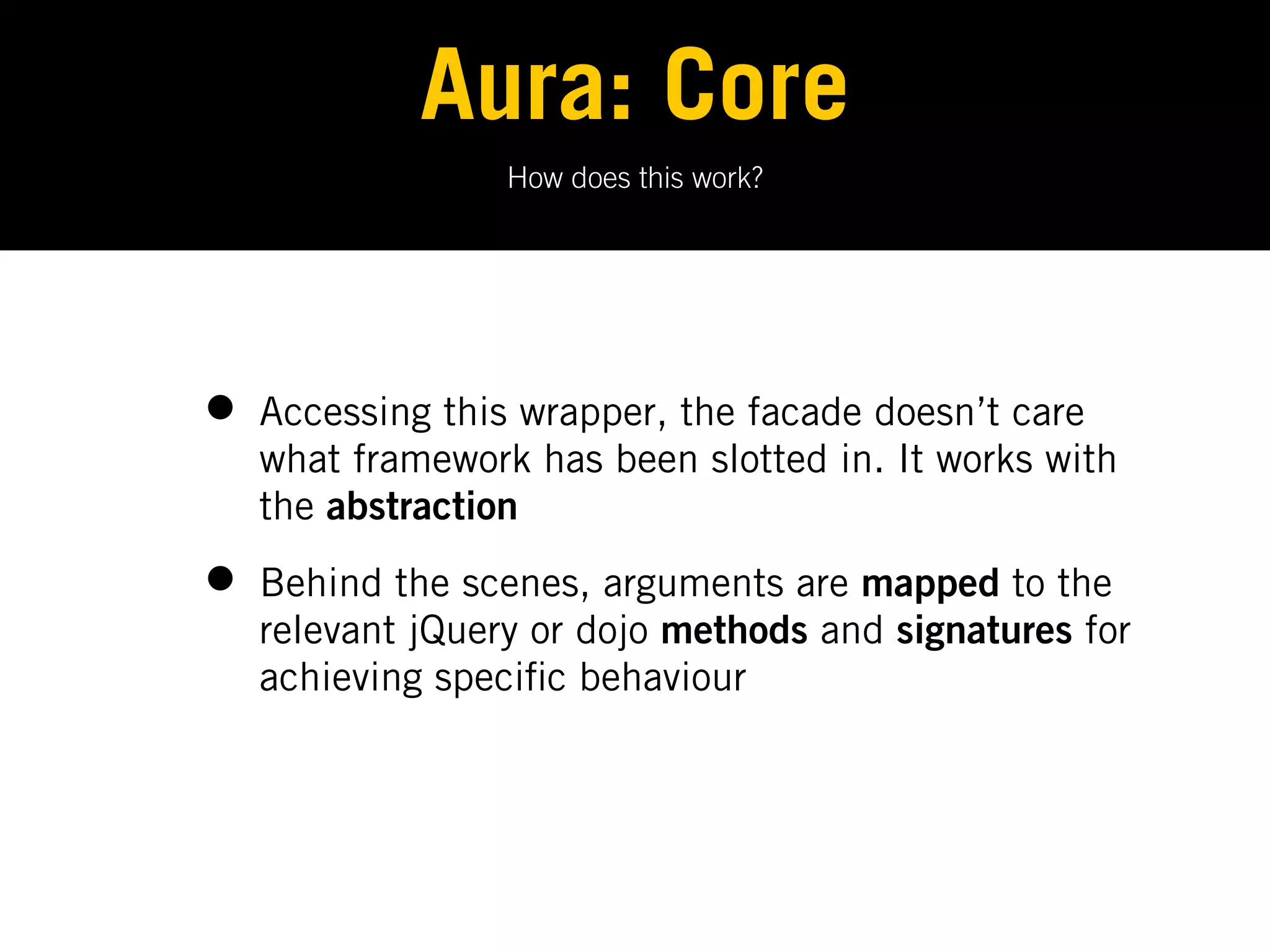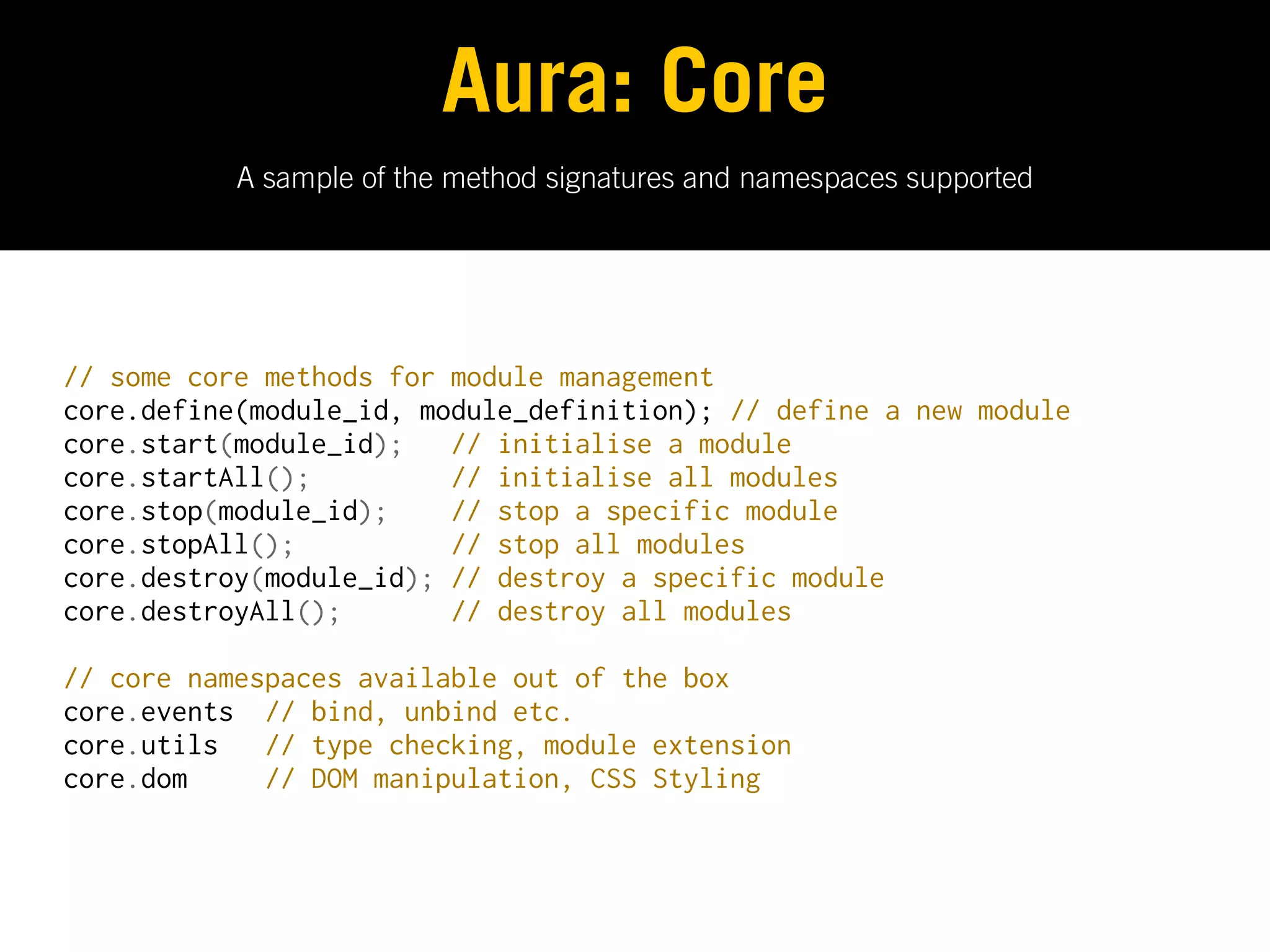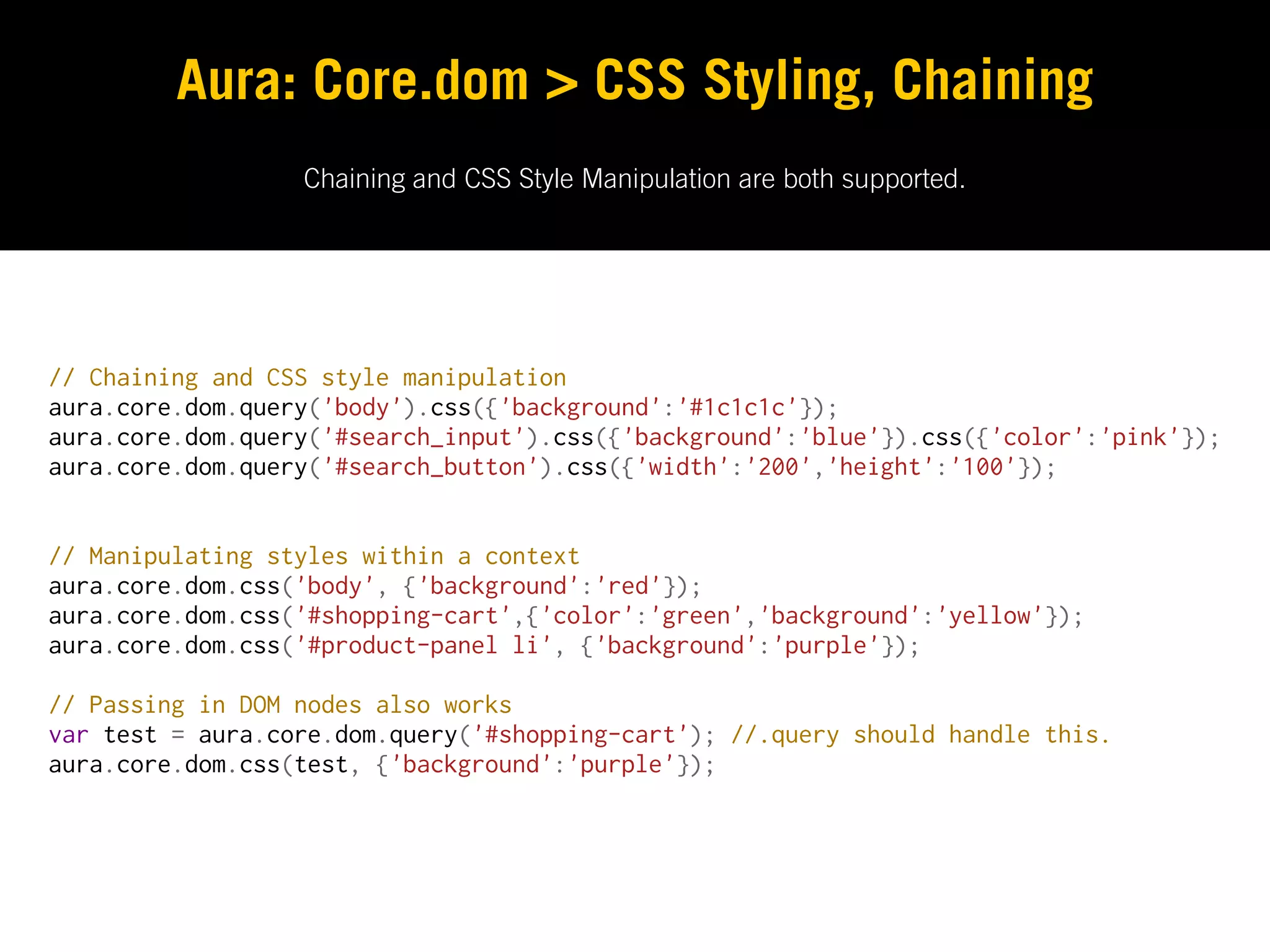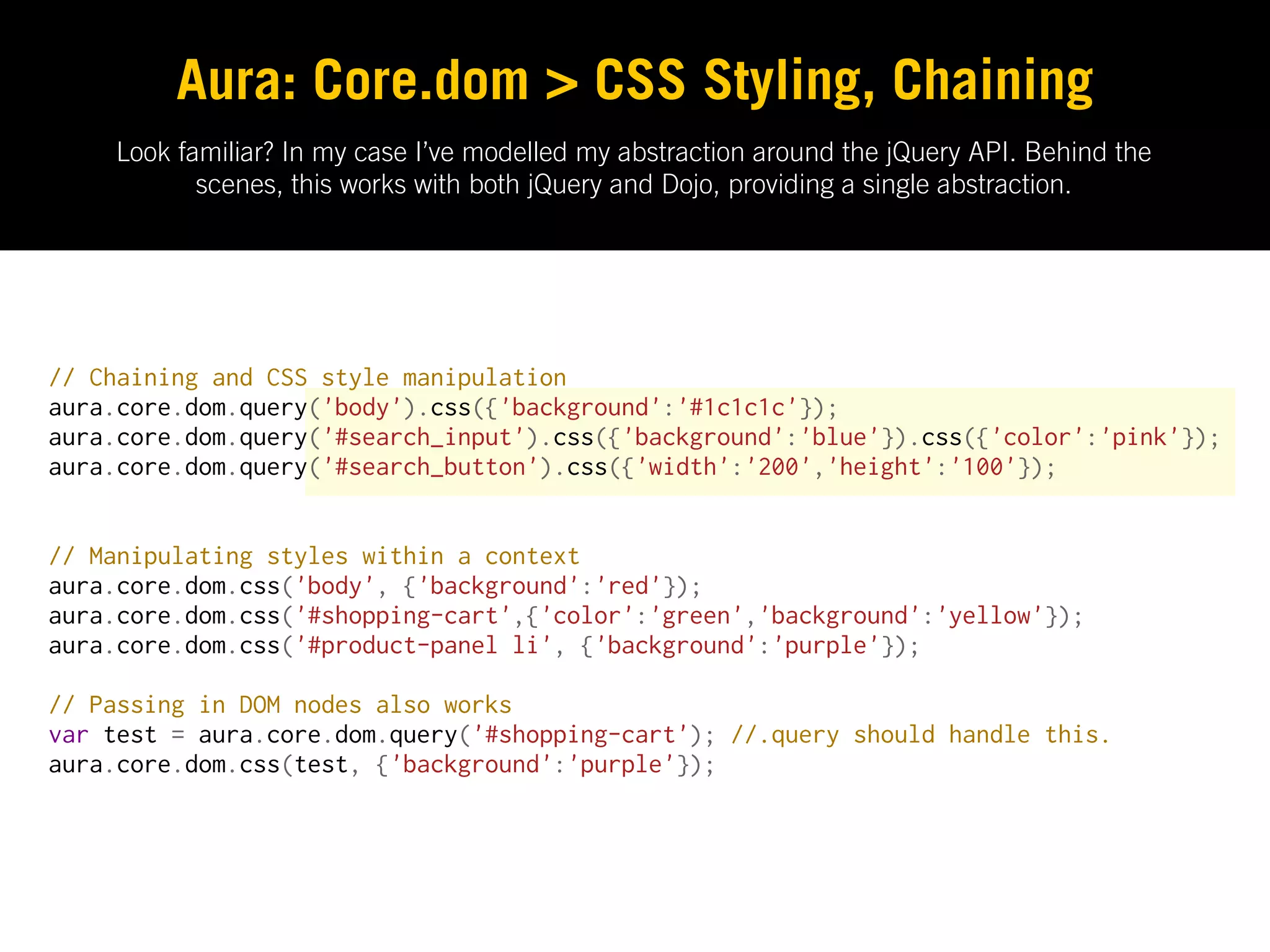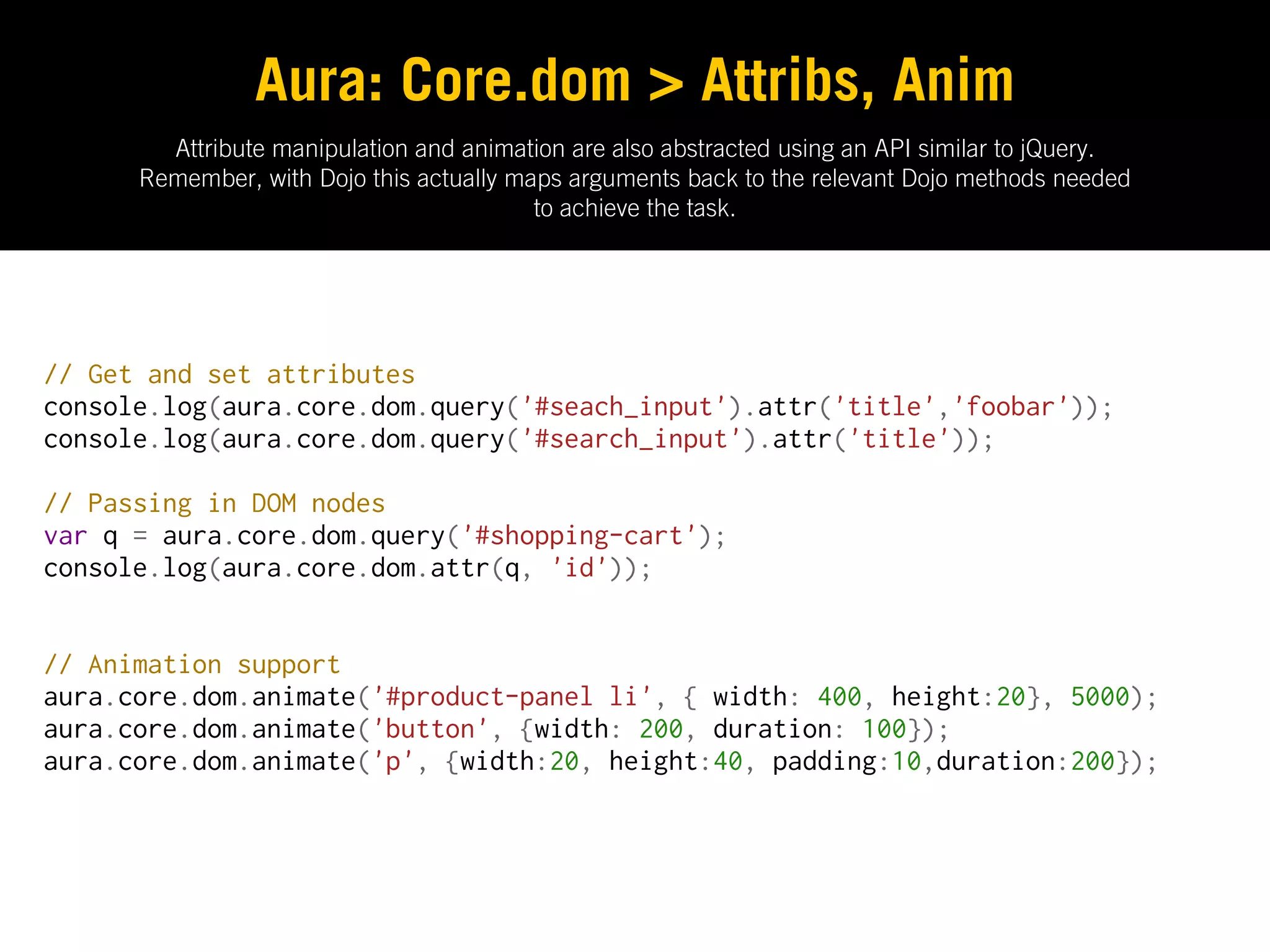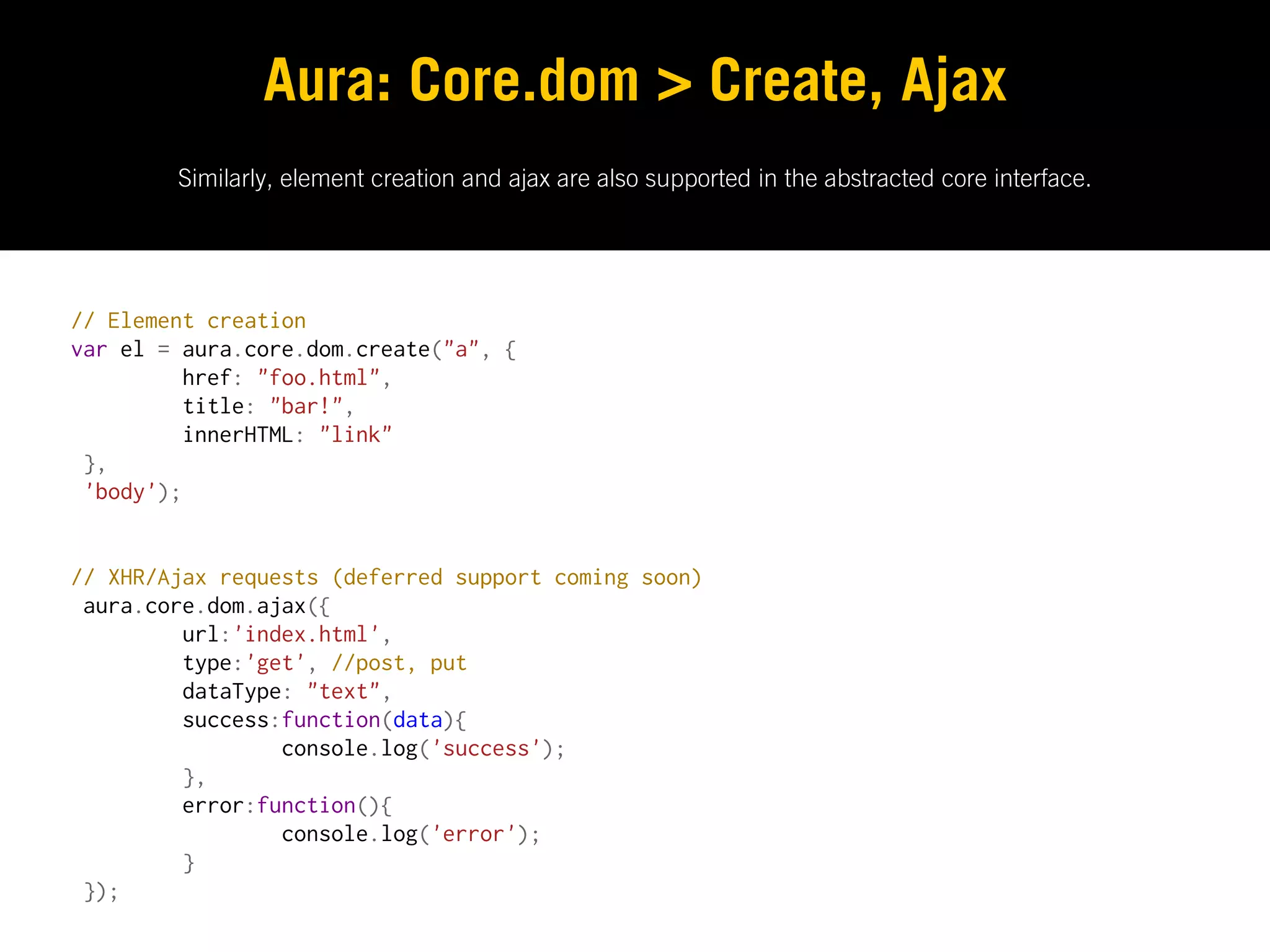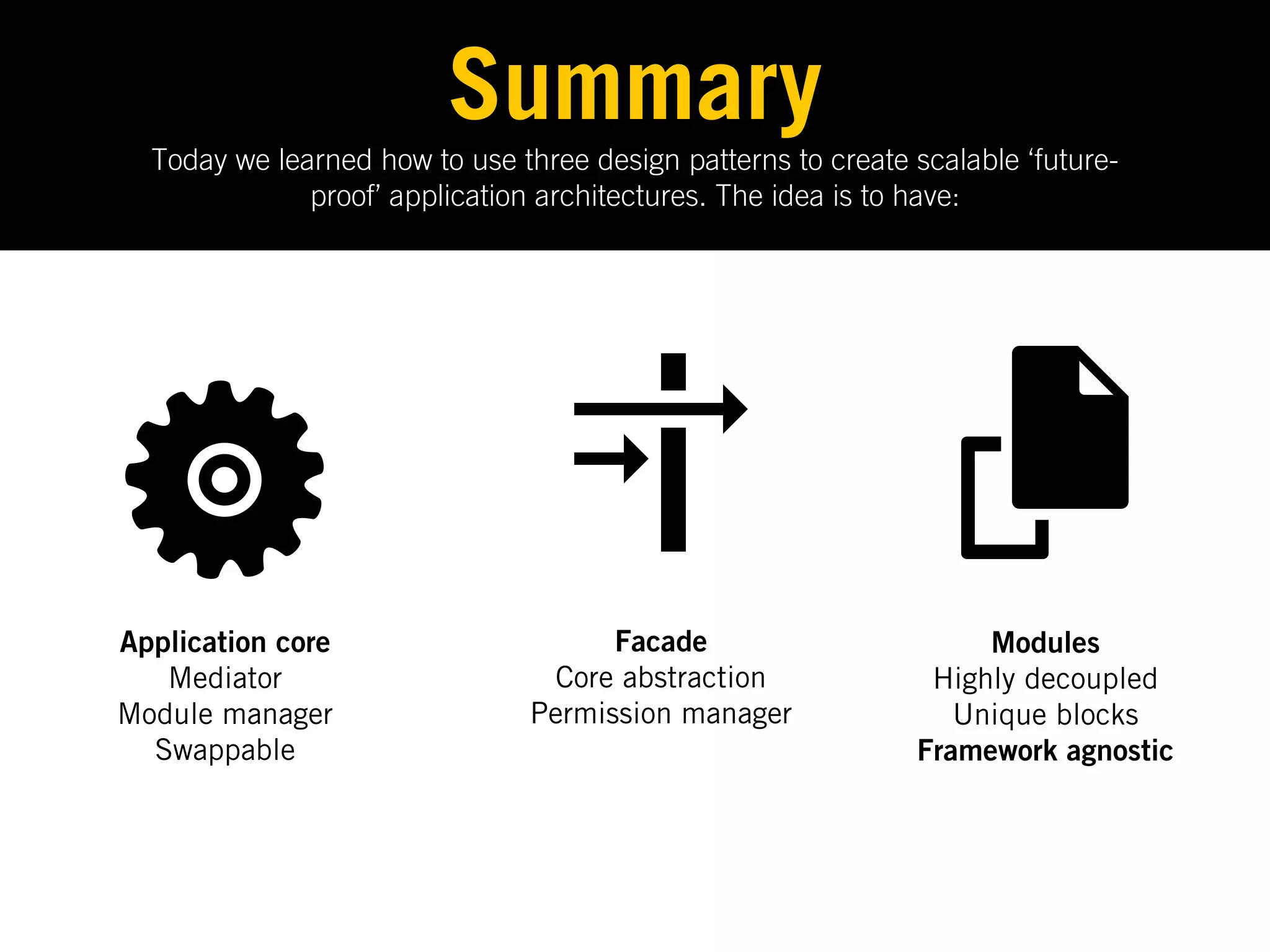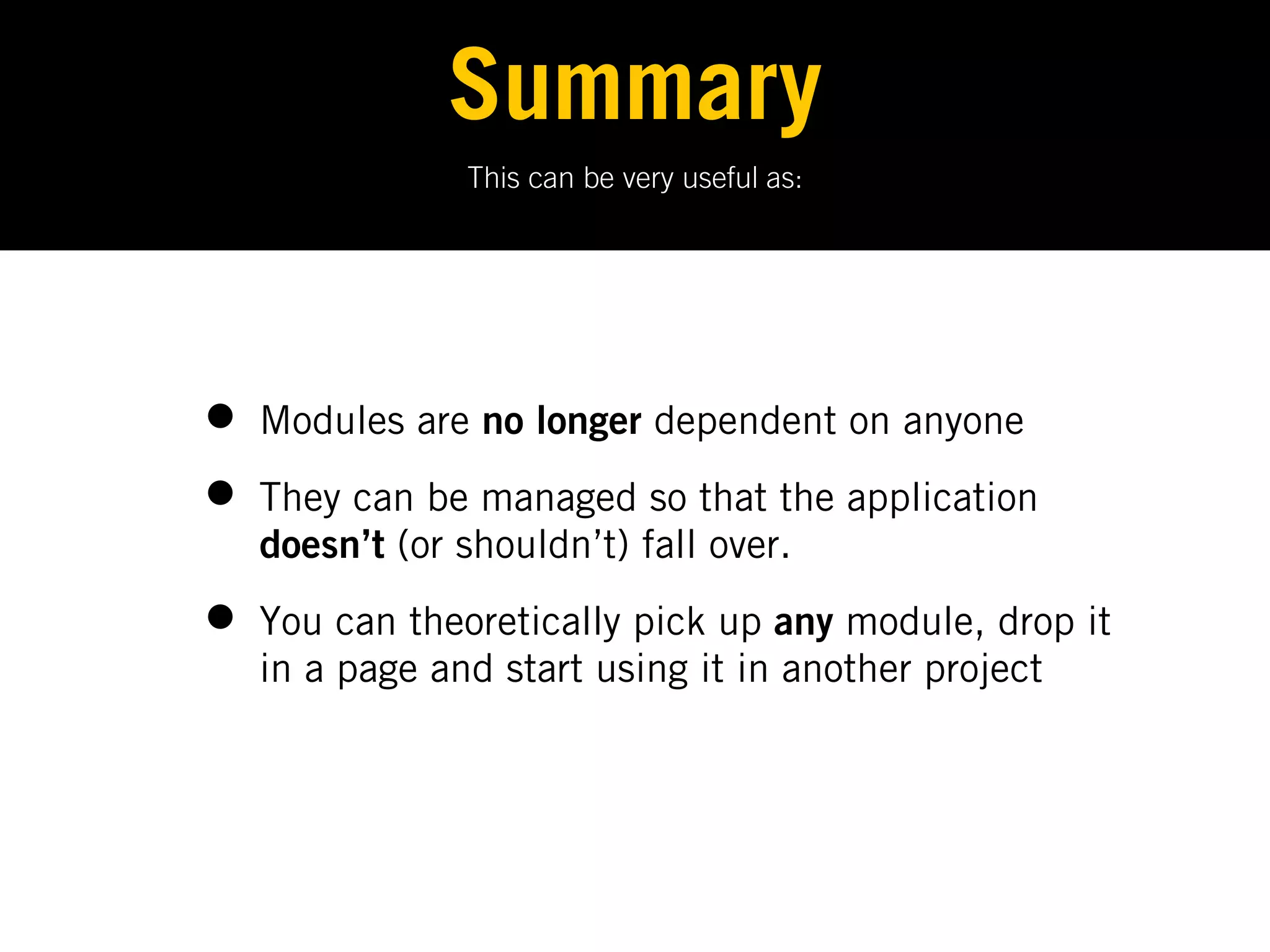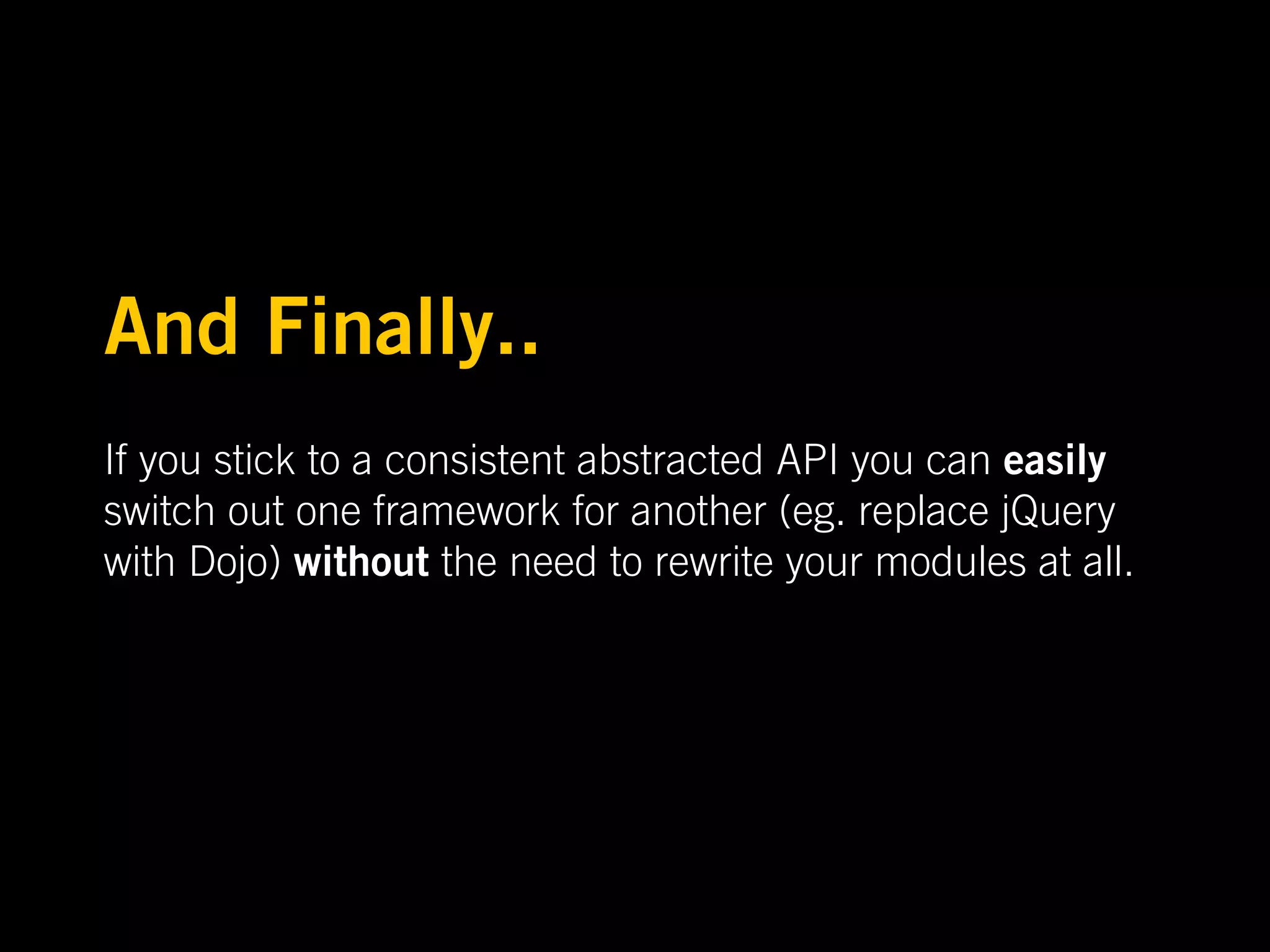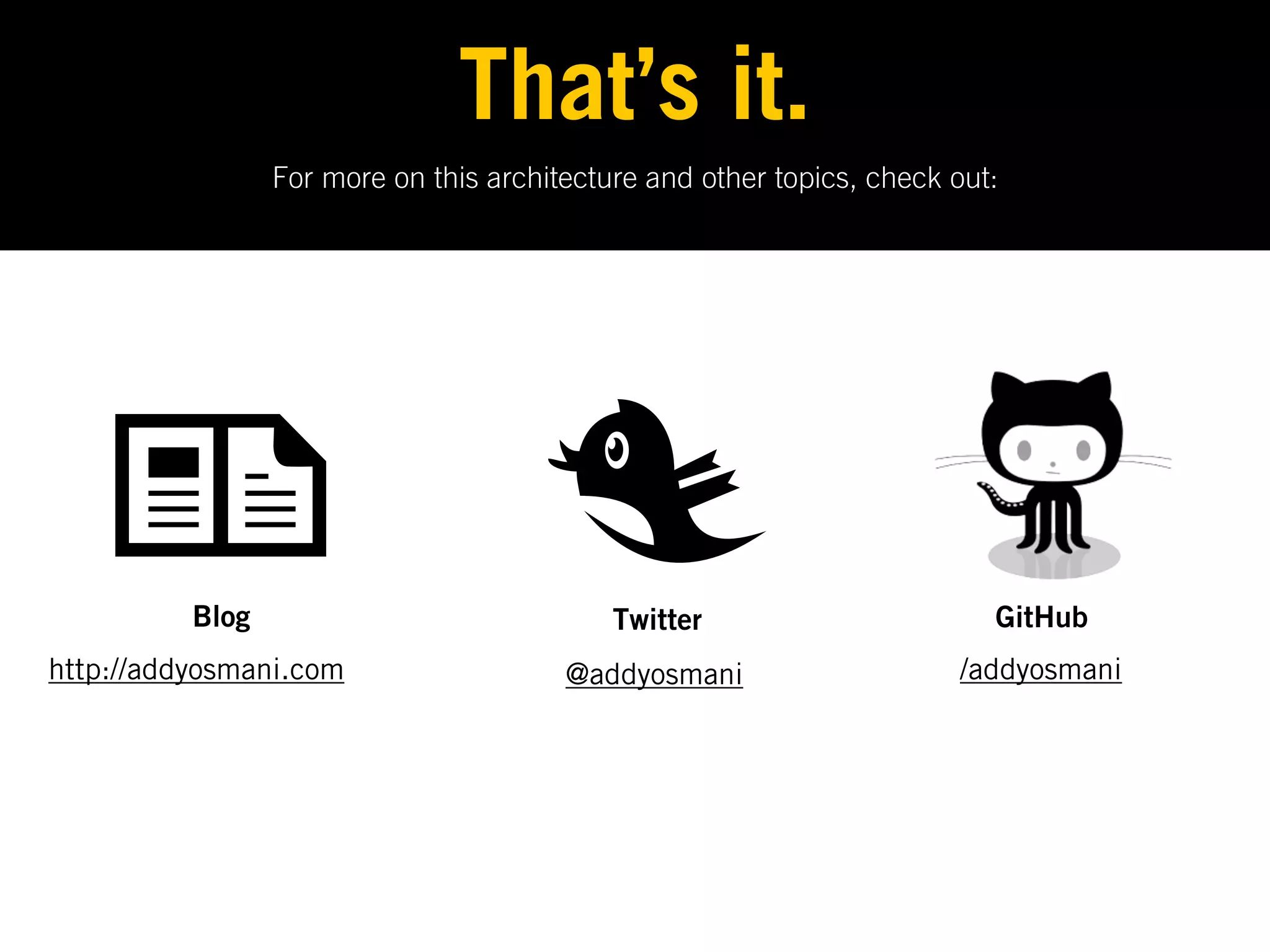The document discusses the module pattern, a design pattern for creating reusable components in JavaScript. It describes how the module pattern allows simulating privacy by wrapping code in immediately invoked function expressions (IIFEs) and returning objects instead of functions. This creates a private scope that is not accessible globally while exposing public APIs. Several examples are given of how different libraries like Dojo, jQuery, YUI, and ExtJS implement the module pattern.




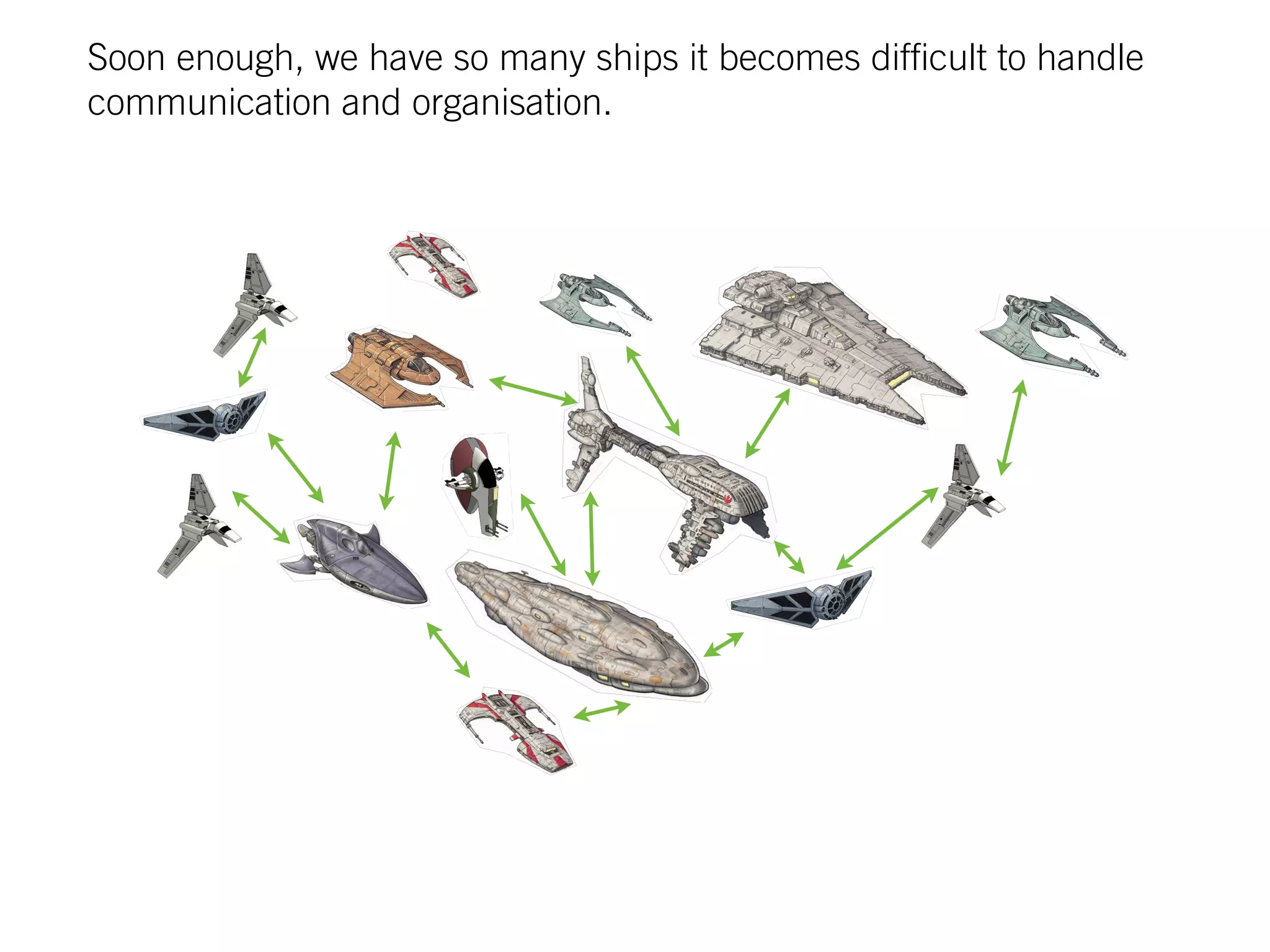
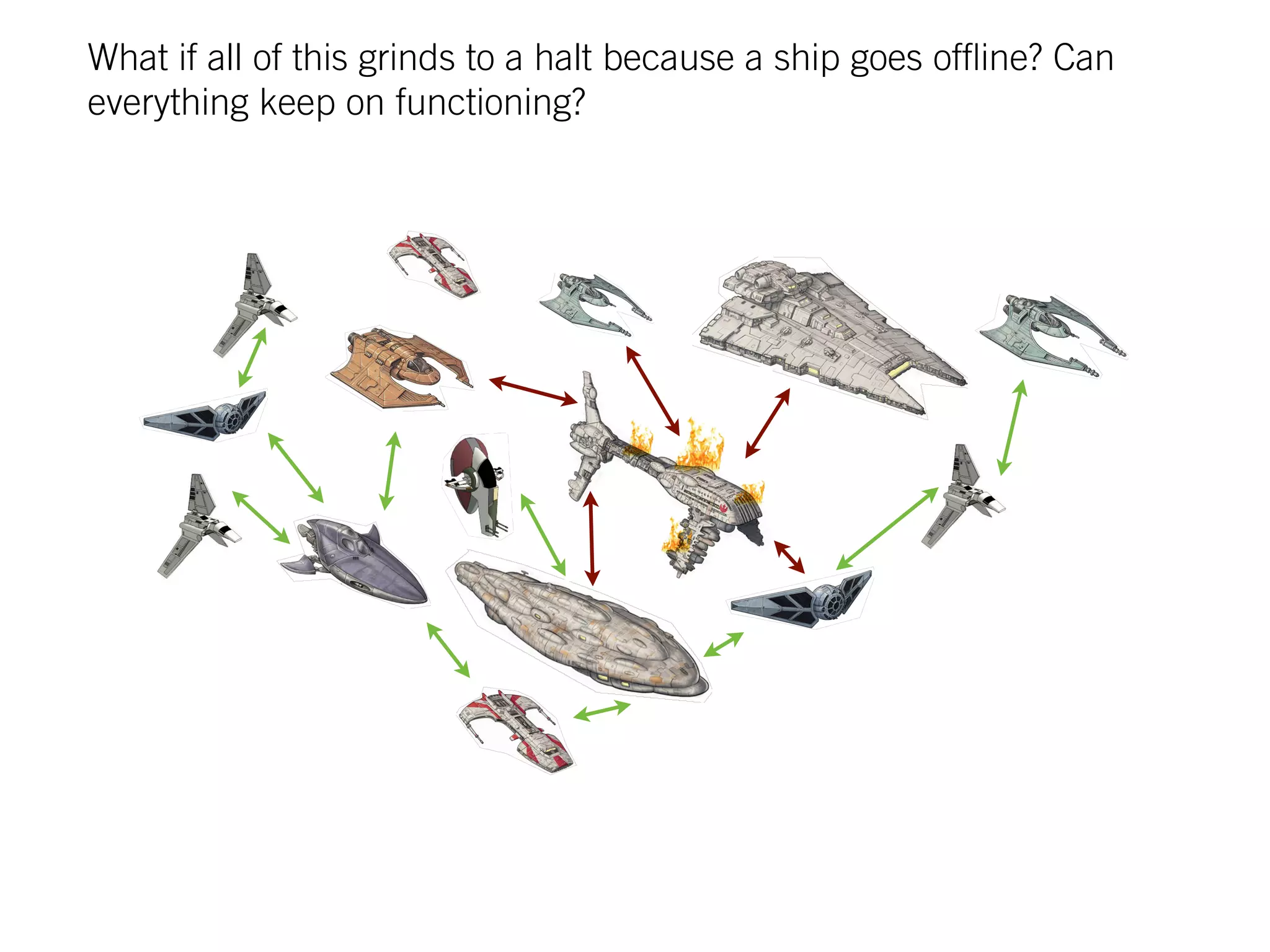

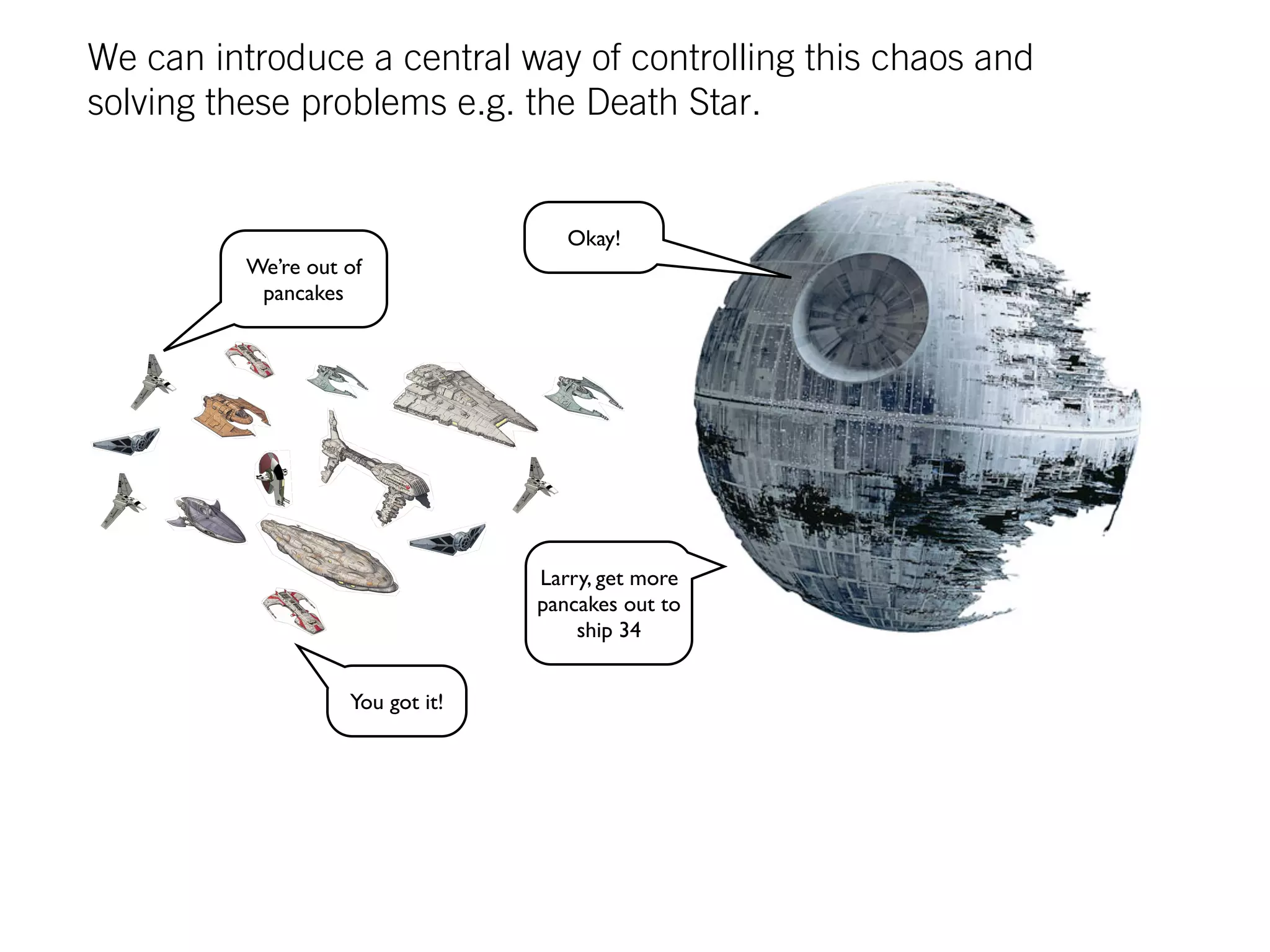
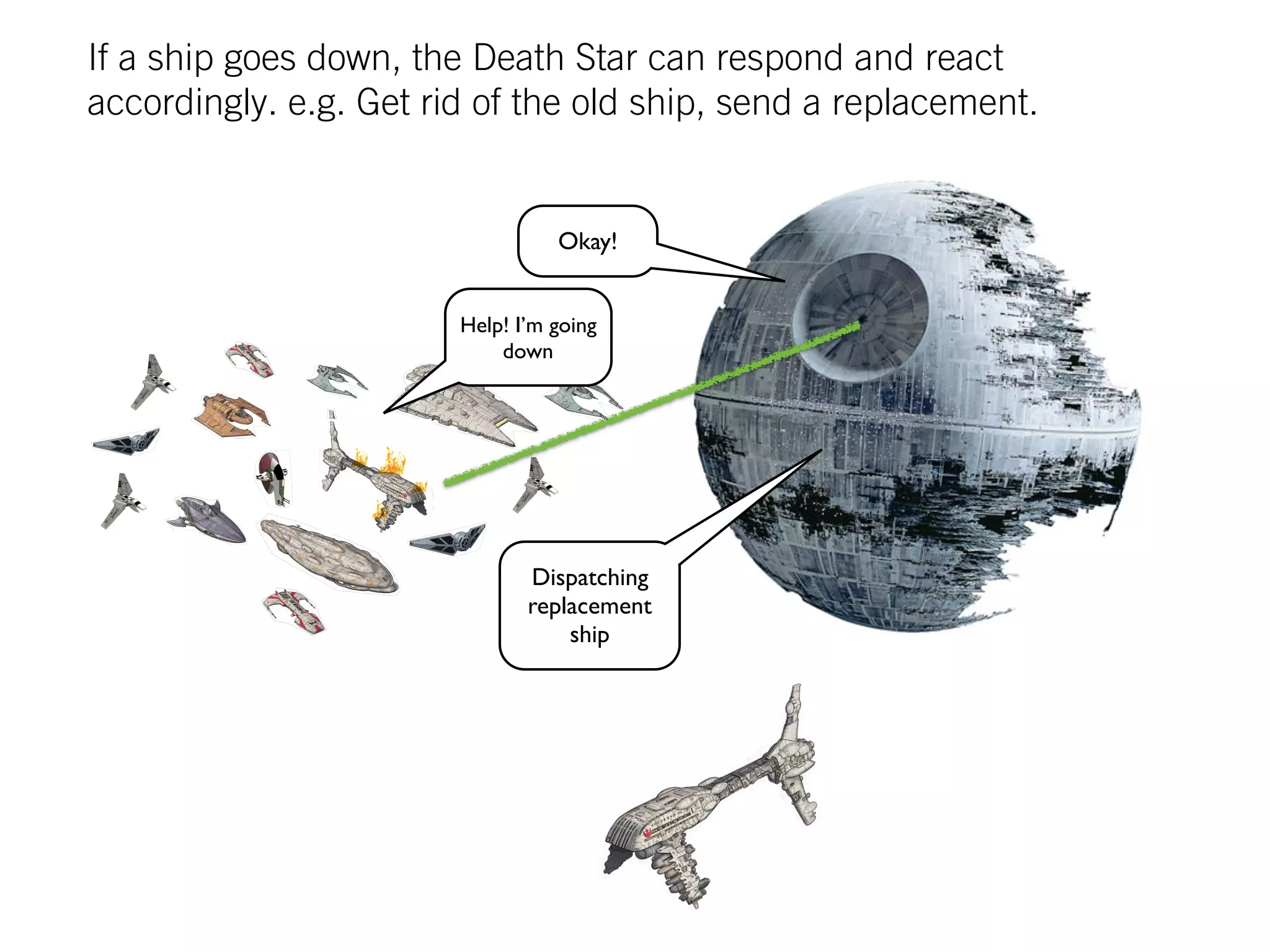
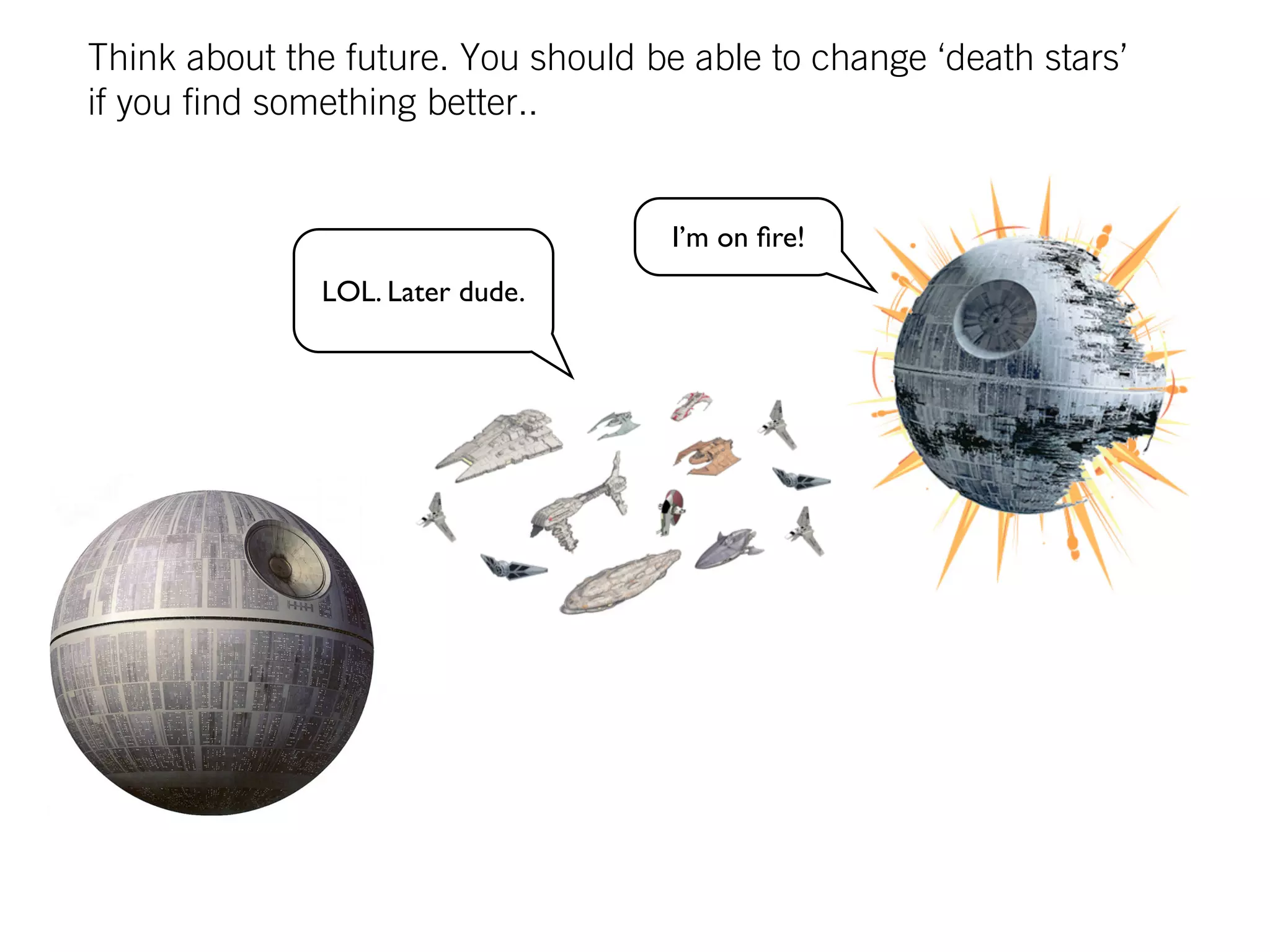


![About Me Some quick info. • JavaScript & UI Developer @AOL • Member of the jQuery core [Bugs/Docs/ Learning] teams • Blogger [AddyOsmani.com/ScriptJunkie] • Author ‘Essential JavaScript Design Patterns’](https://image.slidesharecdn.com/webdirections-111013072810-phpapp02/75/Scalable-JavaScript-Design-Patterns-13-2048.jpg)
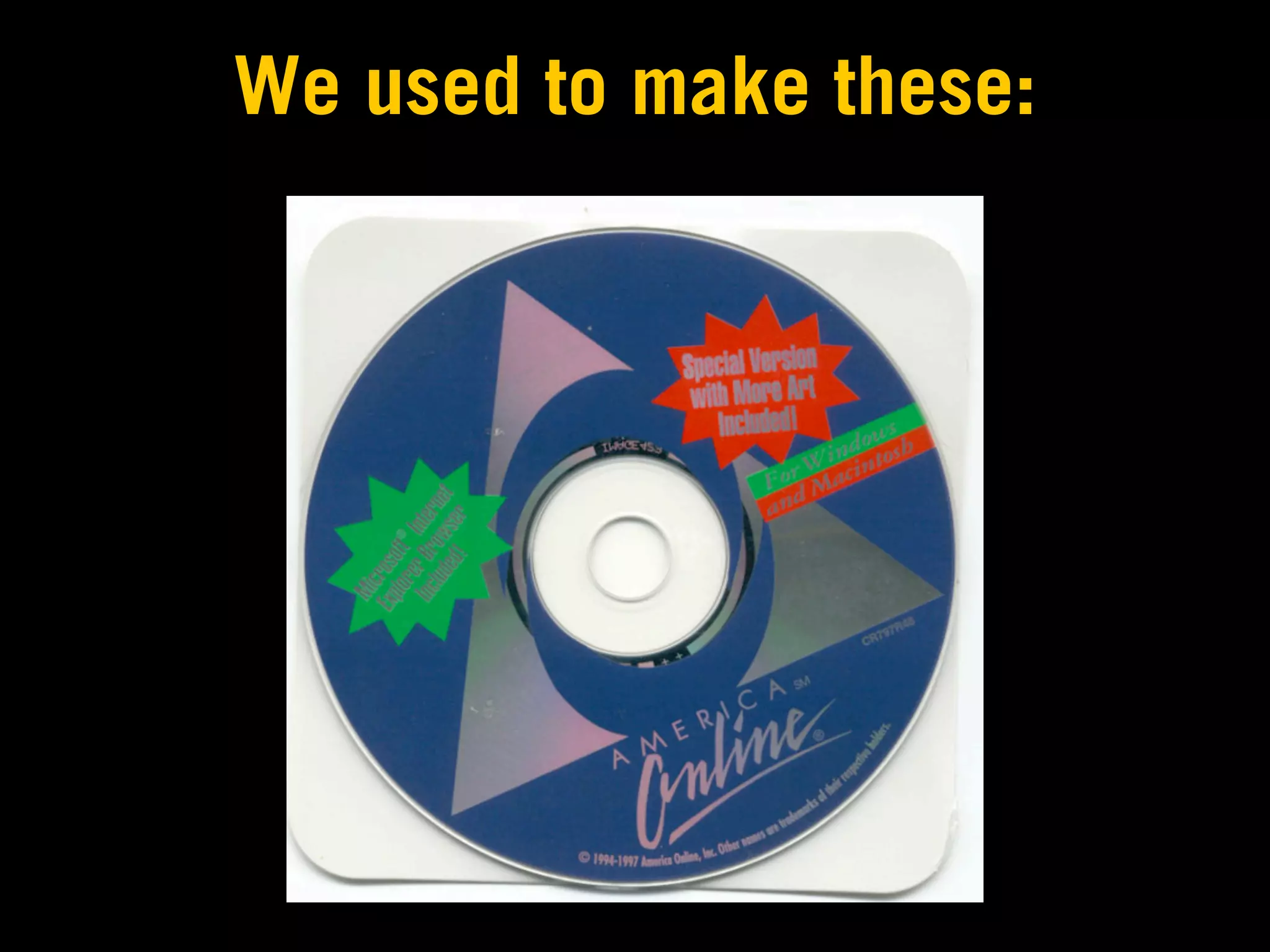




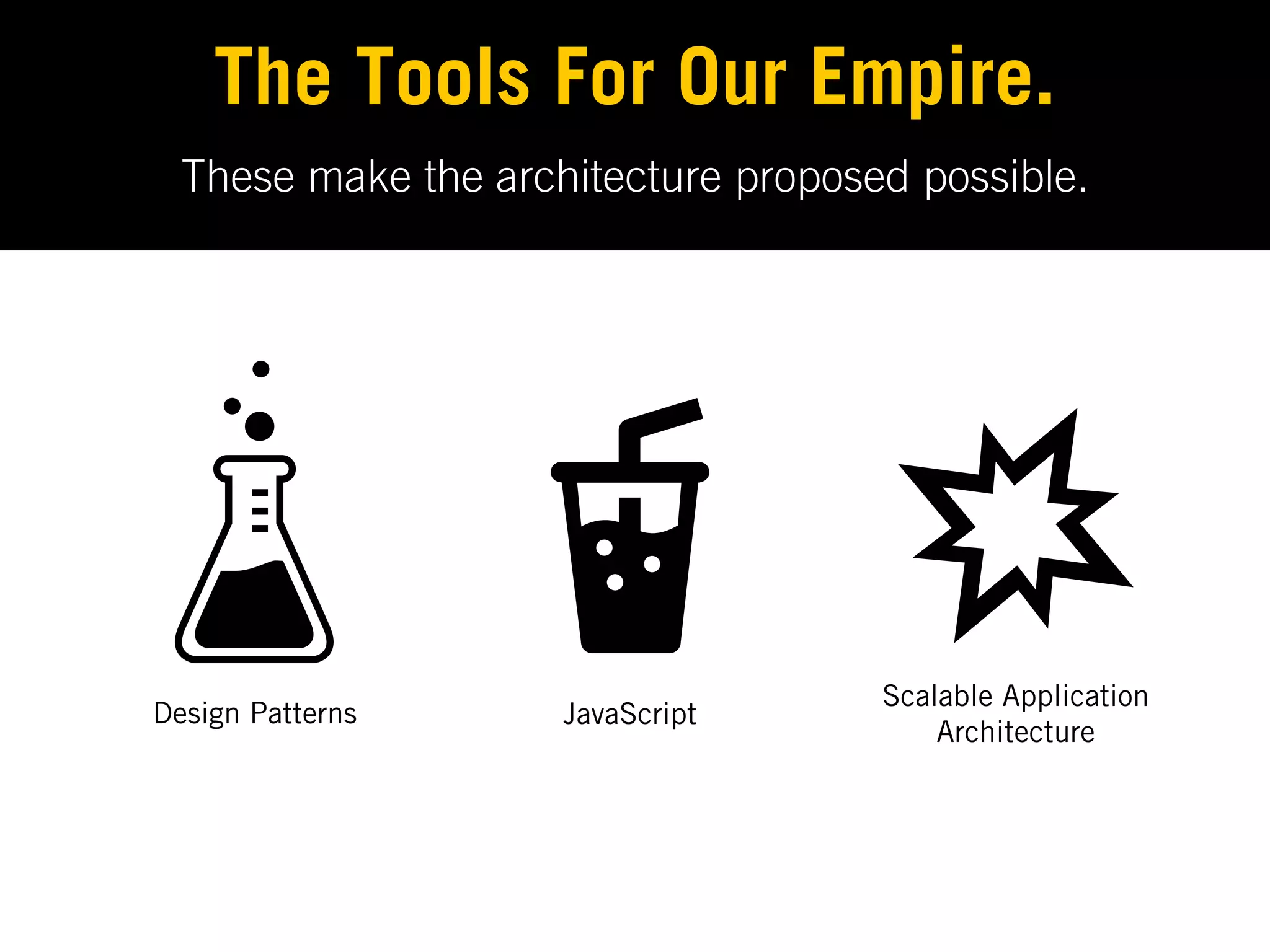

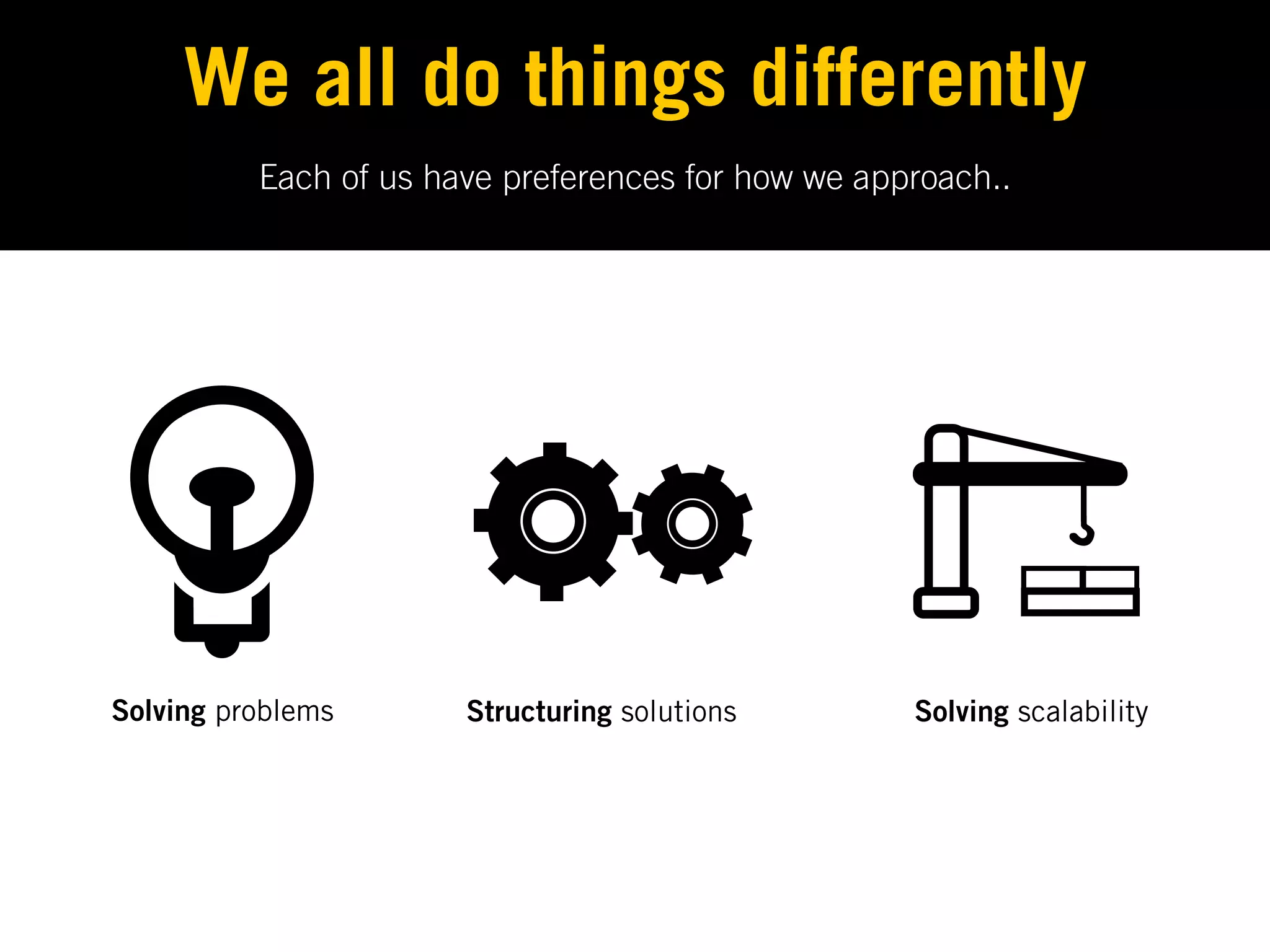
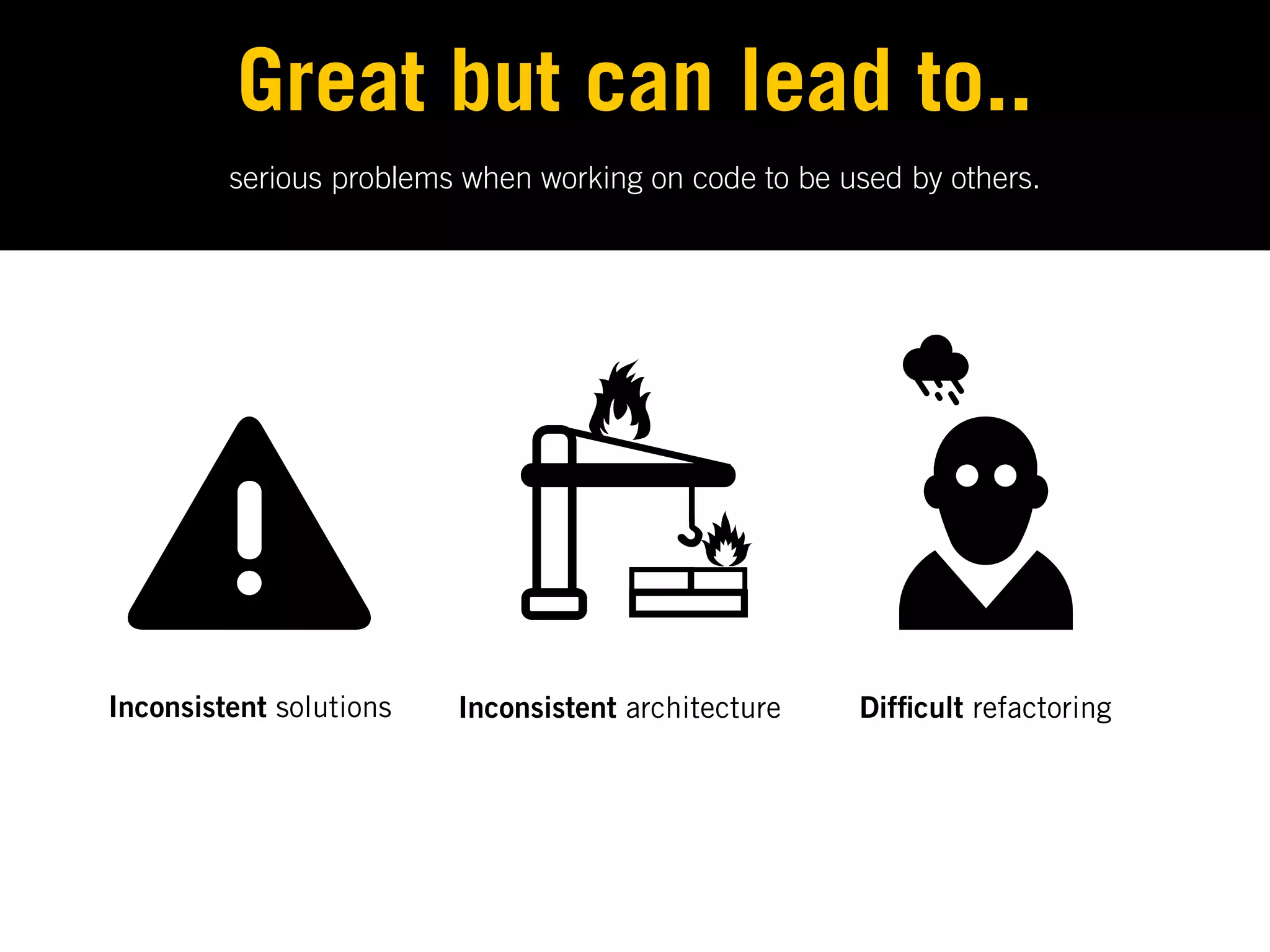



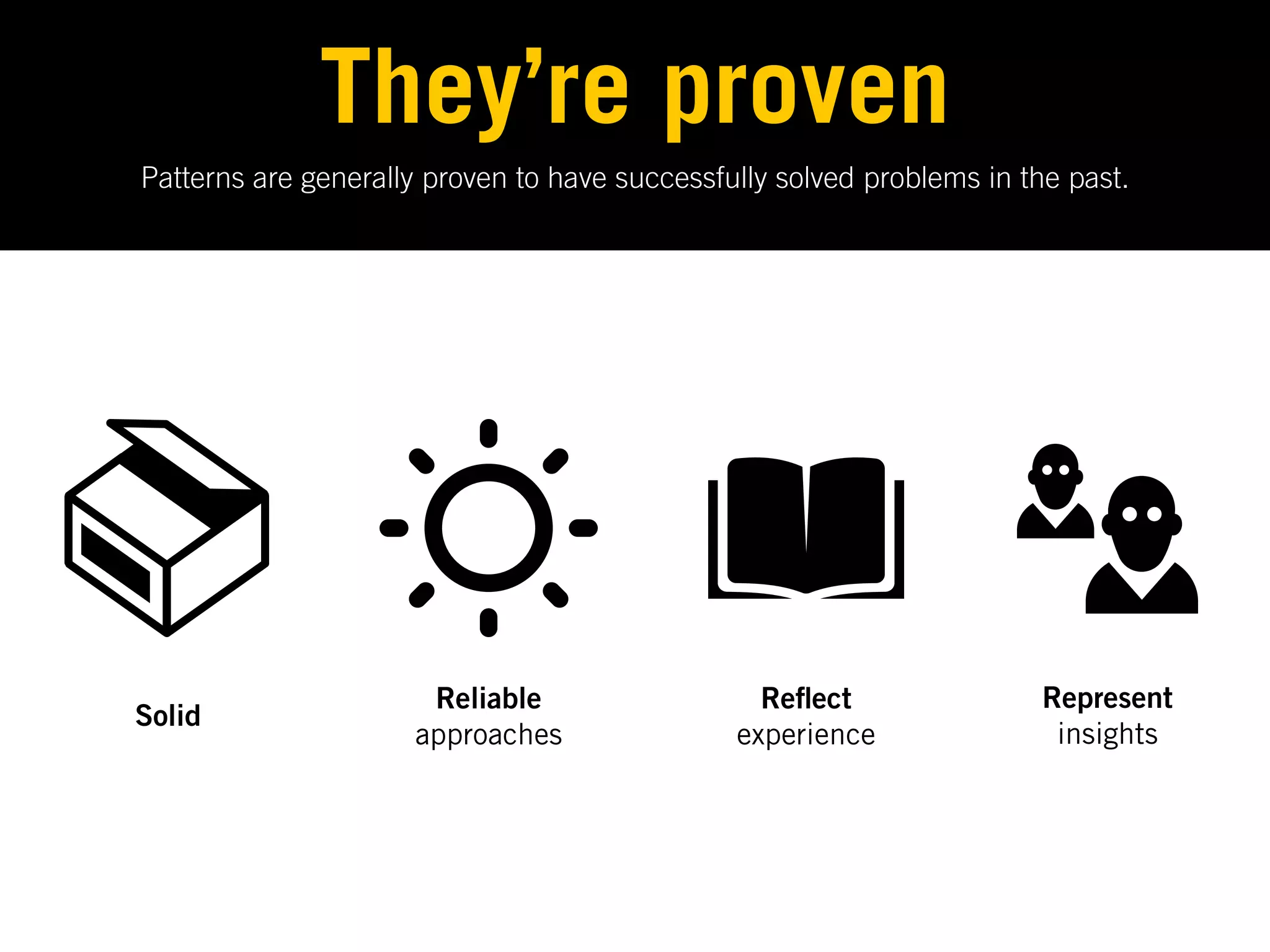
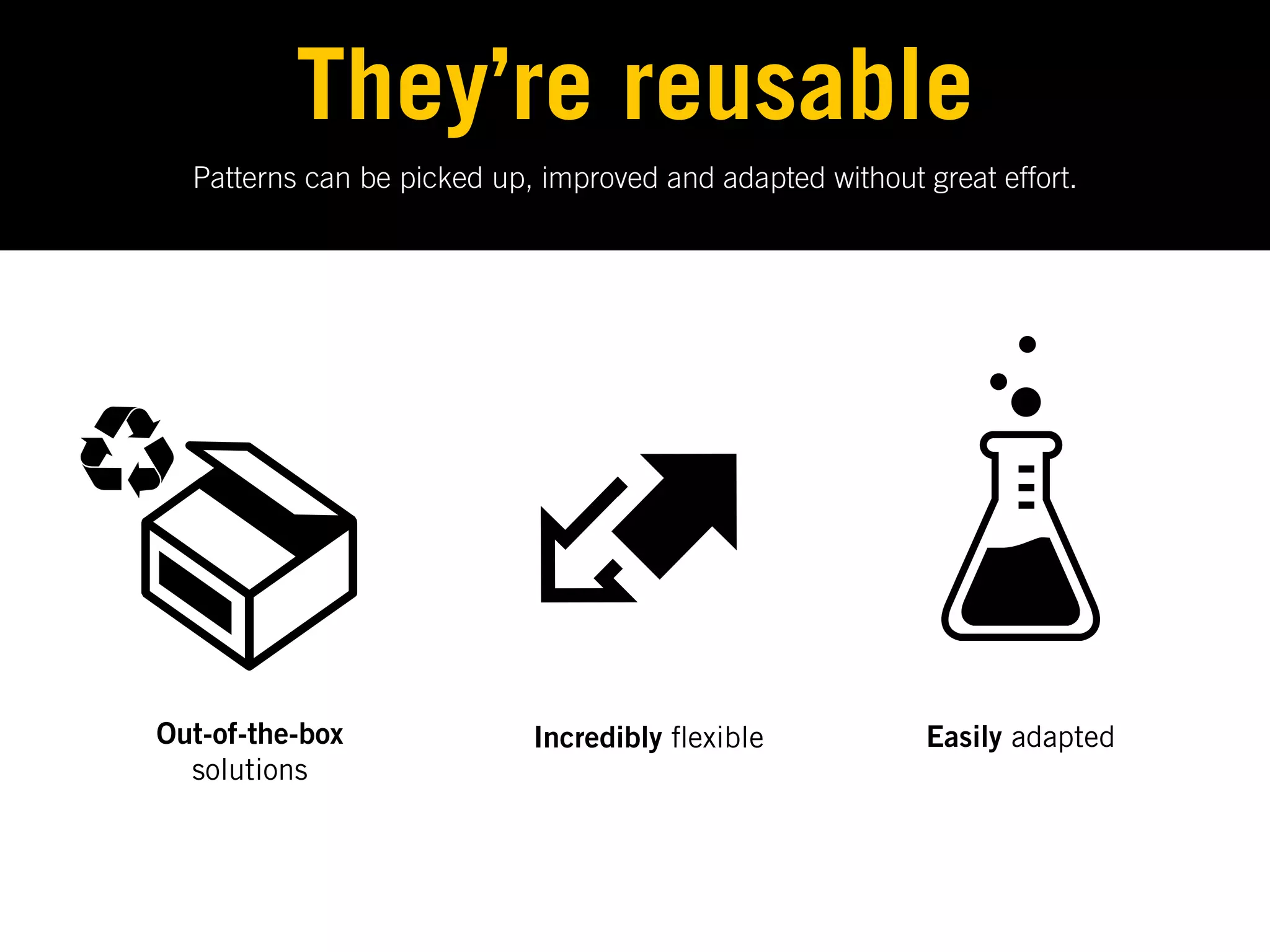

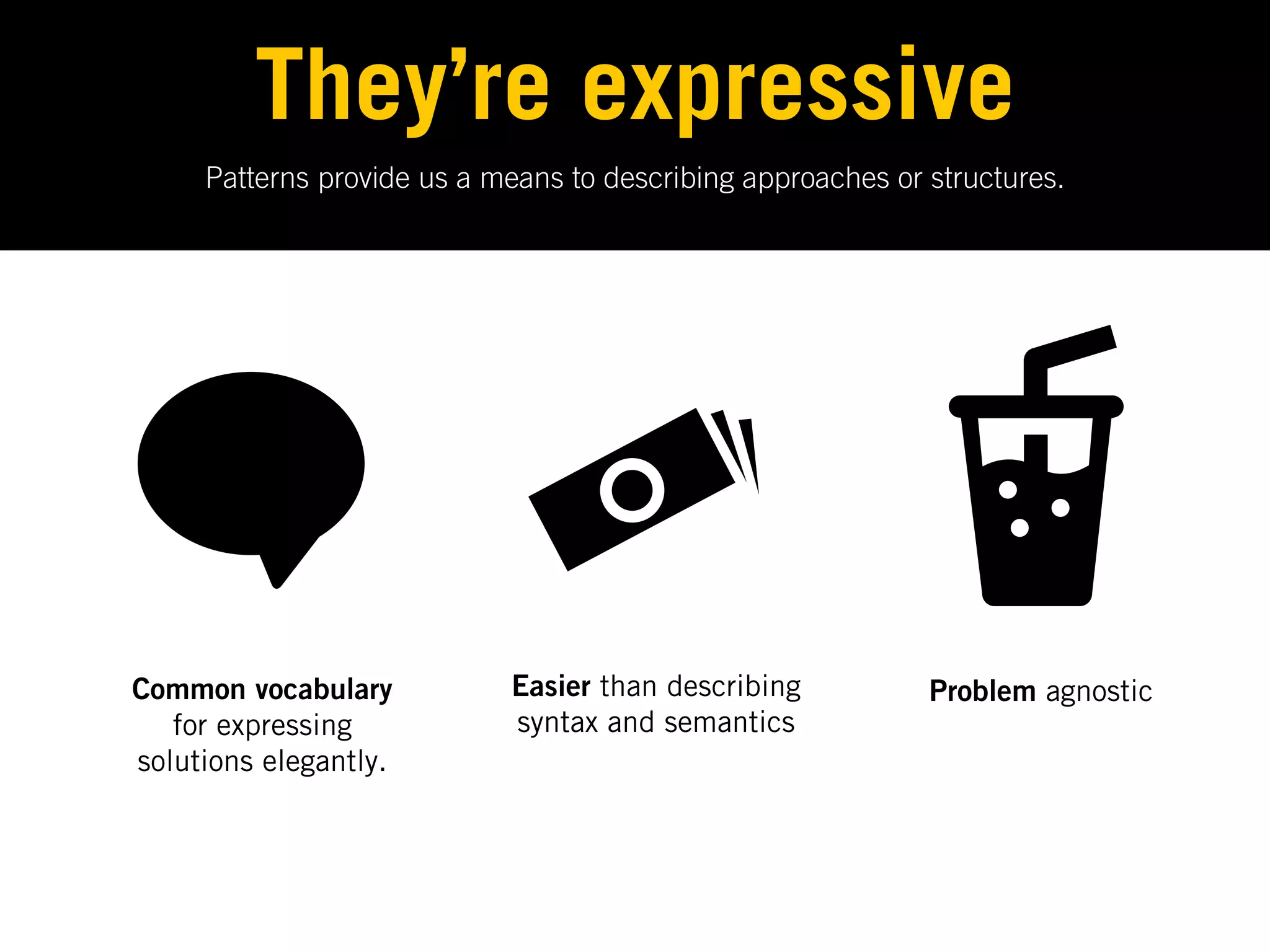
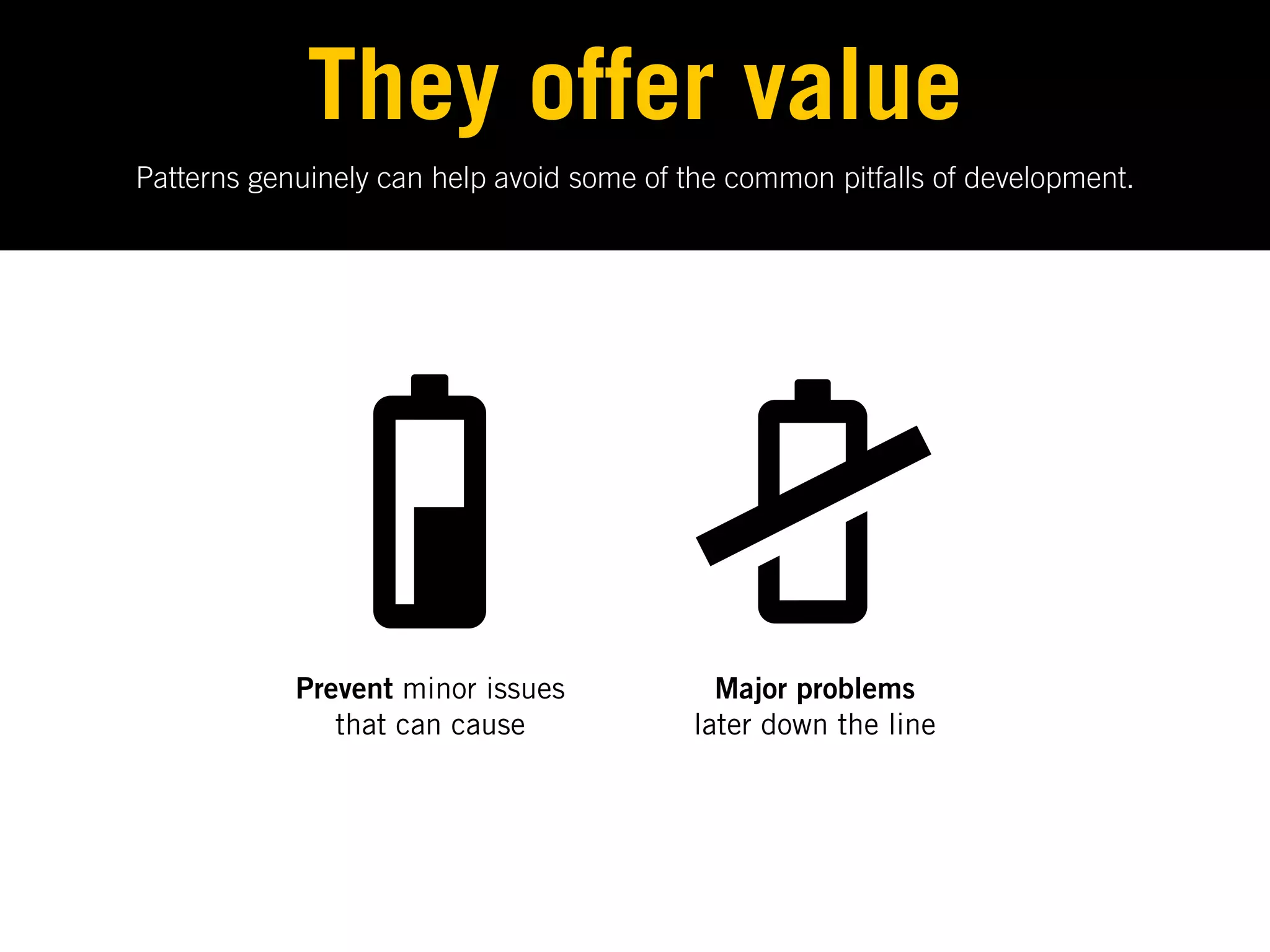

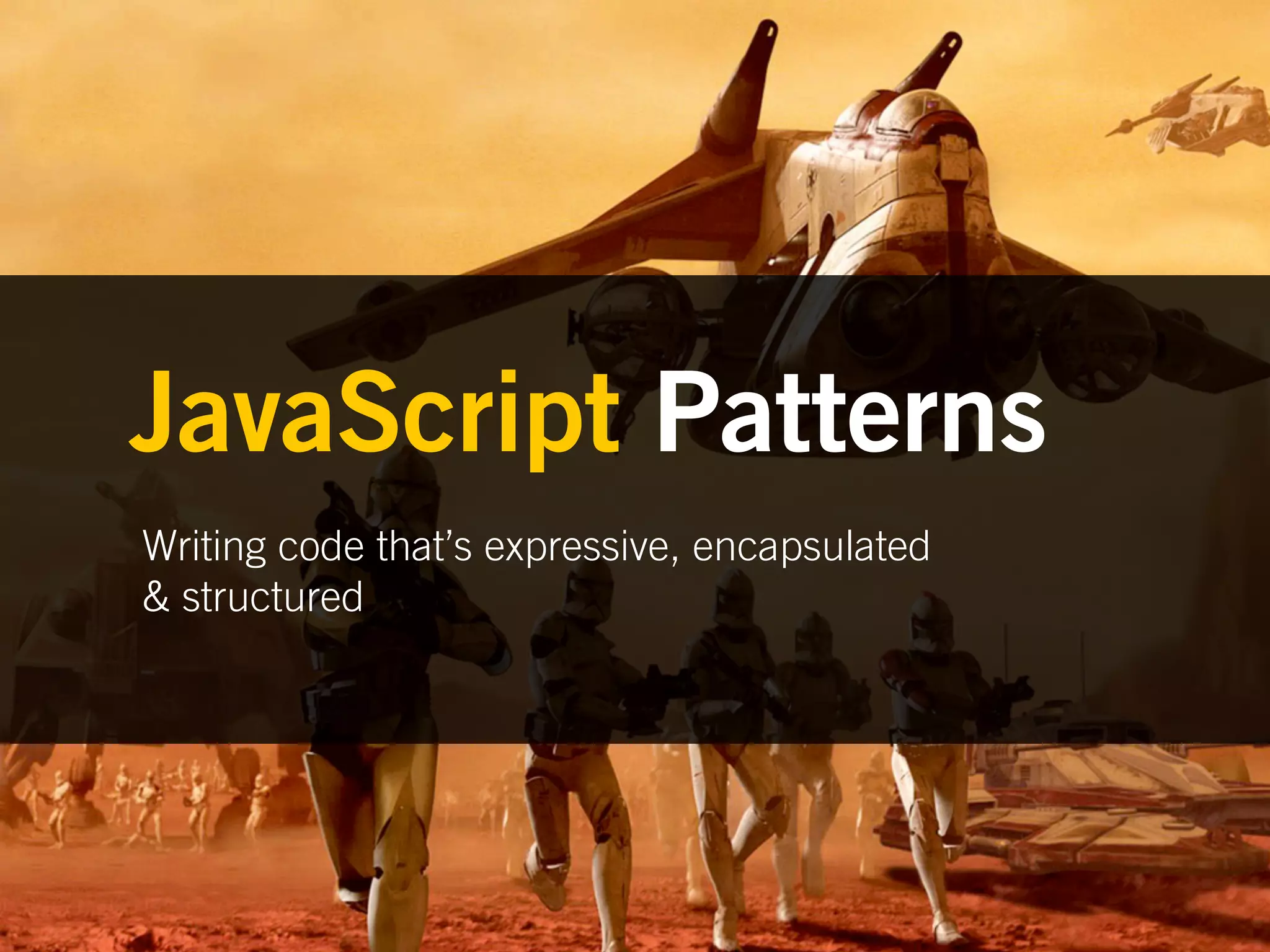
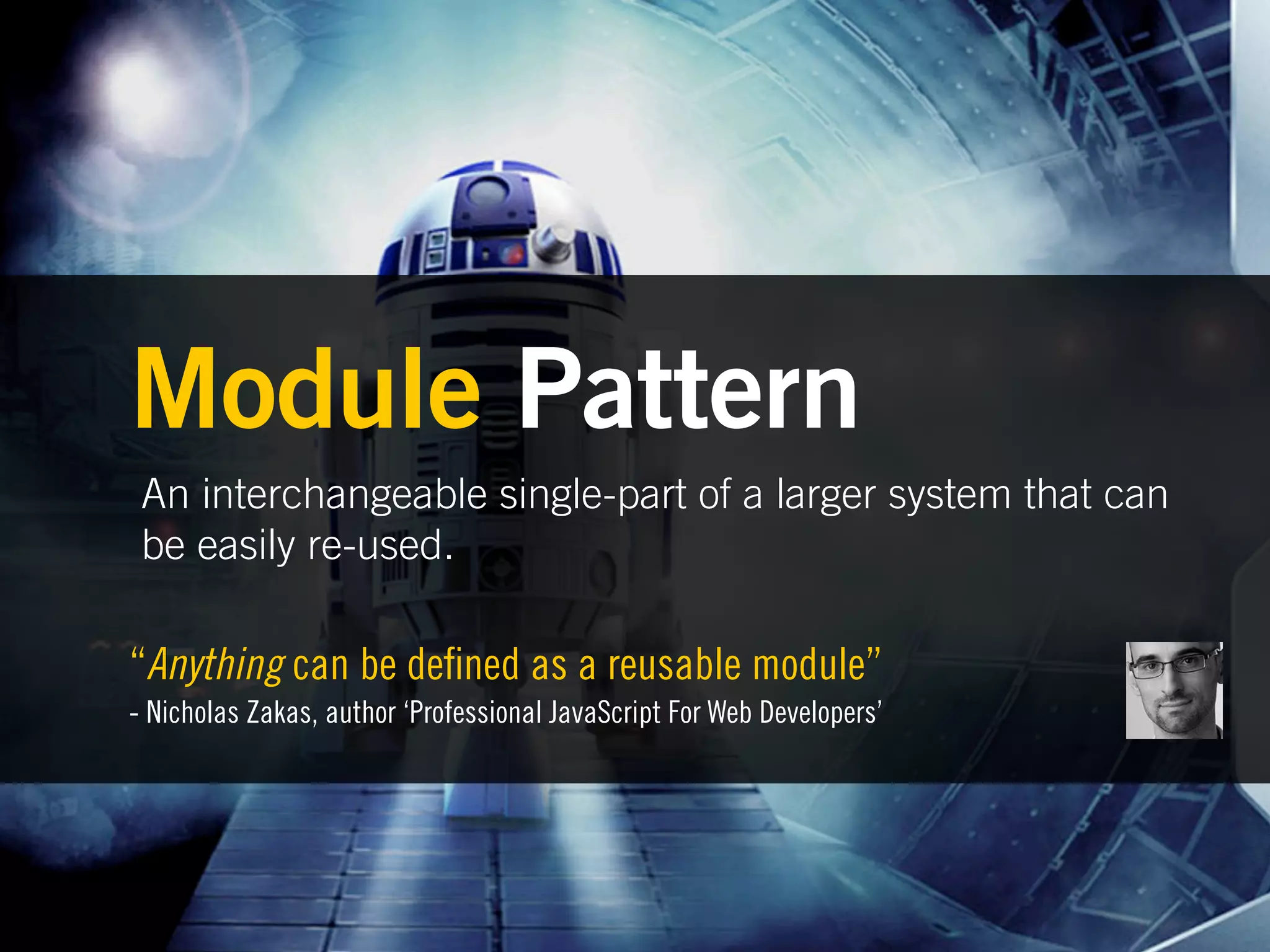
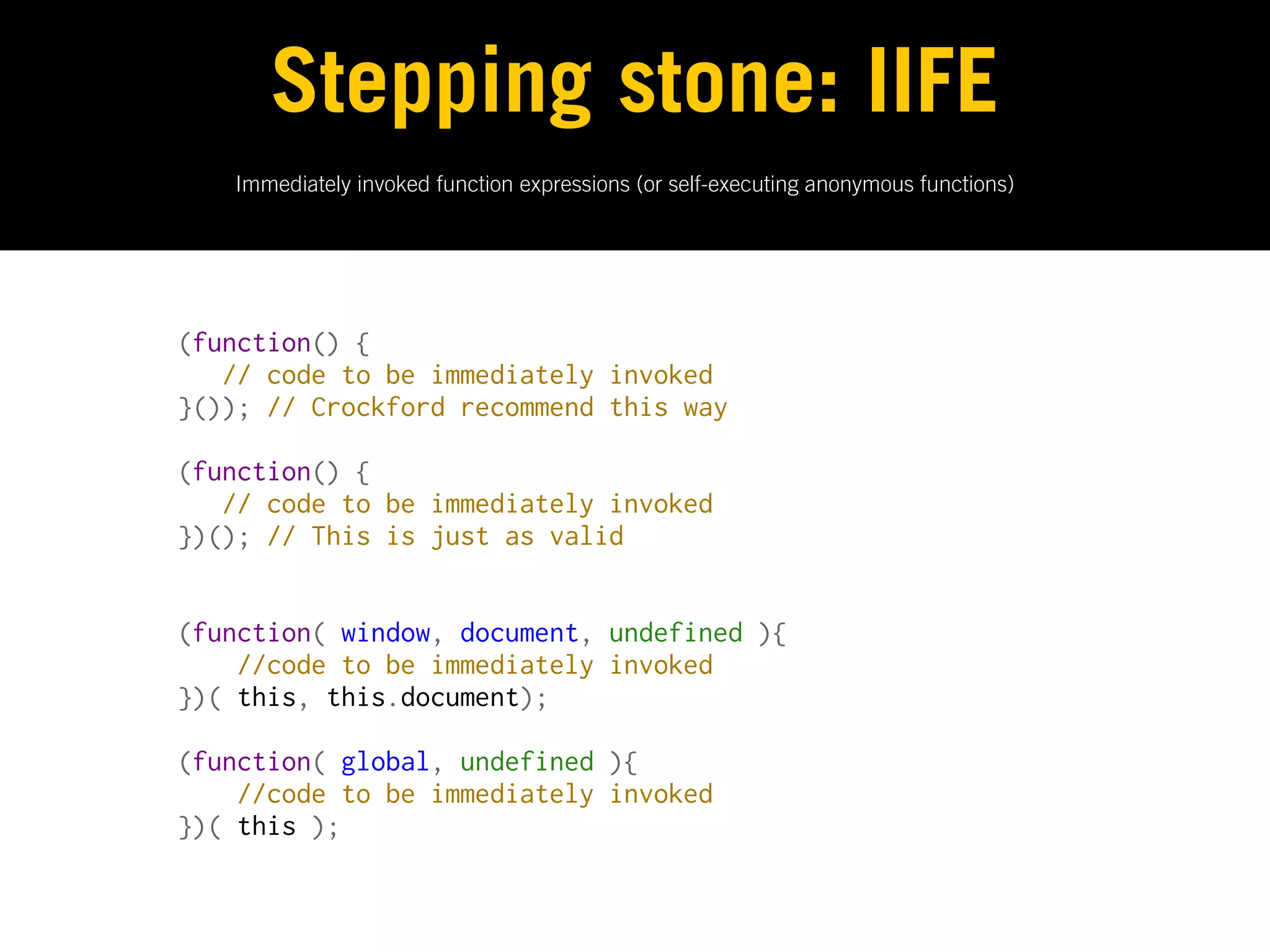


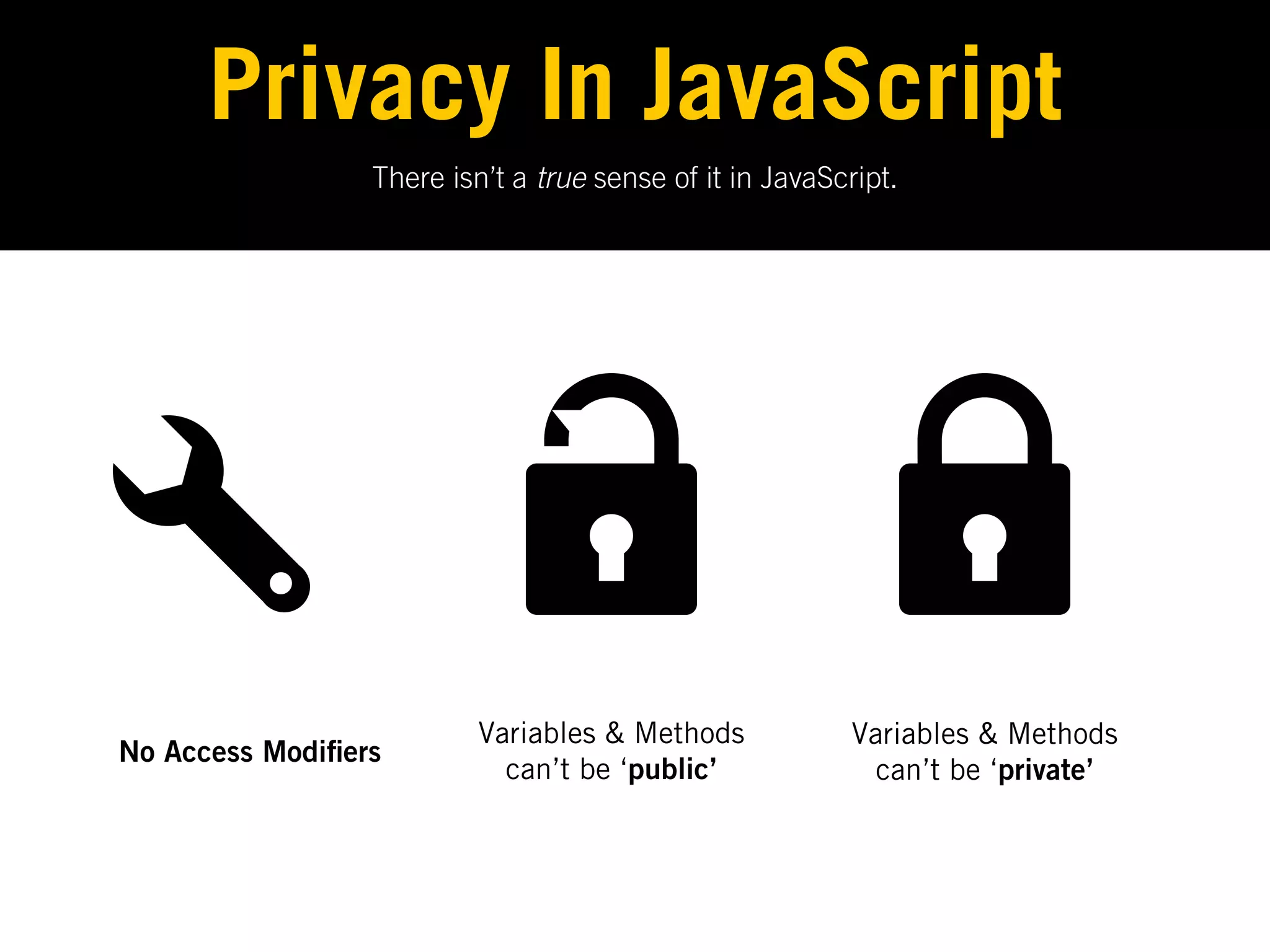
![Simulate privacy The typical module pattern is where immediately invoked function expressions (IIFEs) use execution context to create ‘privacy’. Here, objects are returned instead of functions. var basketModule = (function() { var basket = []; //private • In the pattern, variables return { //exposed to public declared are only addItem: function(values) { available inside the basket.push(values); module. }, getItemCount: function() { return basket.length; • Variables de ned within }, the returning object are getTotal: function(){ available to everyone var q = this.getItemCount(),p=0; while(q--){ p+= basket[q].price; • This allows us to simulate privacy } return p; } } }());](https://image.slidesharecdn.com/webdirections-111013072810-phpapp02/75/Scalable-JavaScript-Design-Patterns-38-2048.jpg)
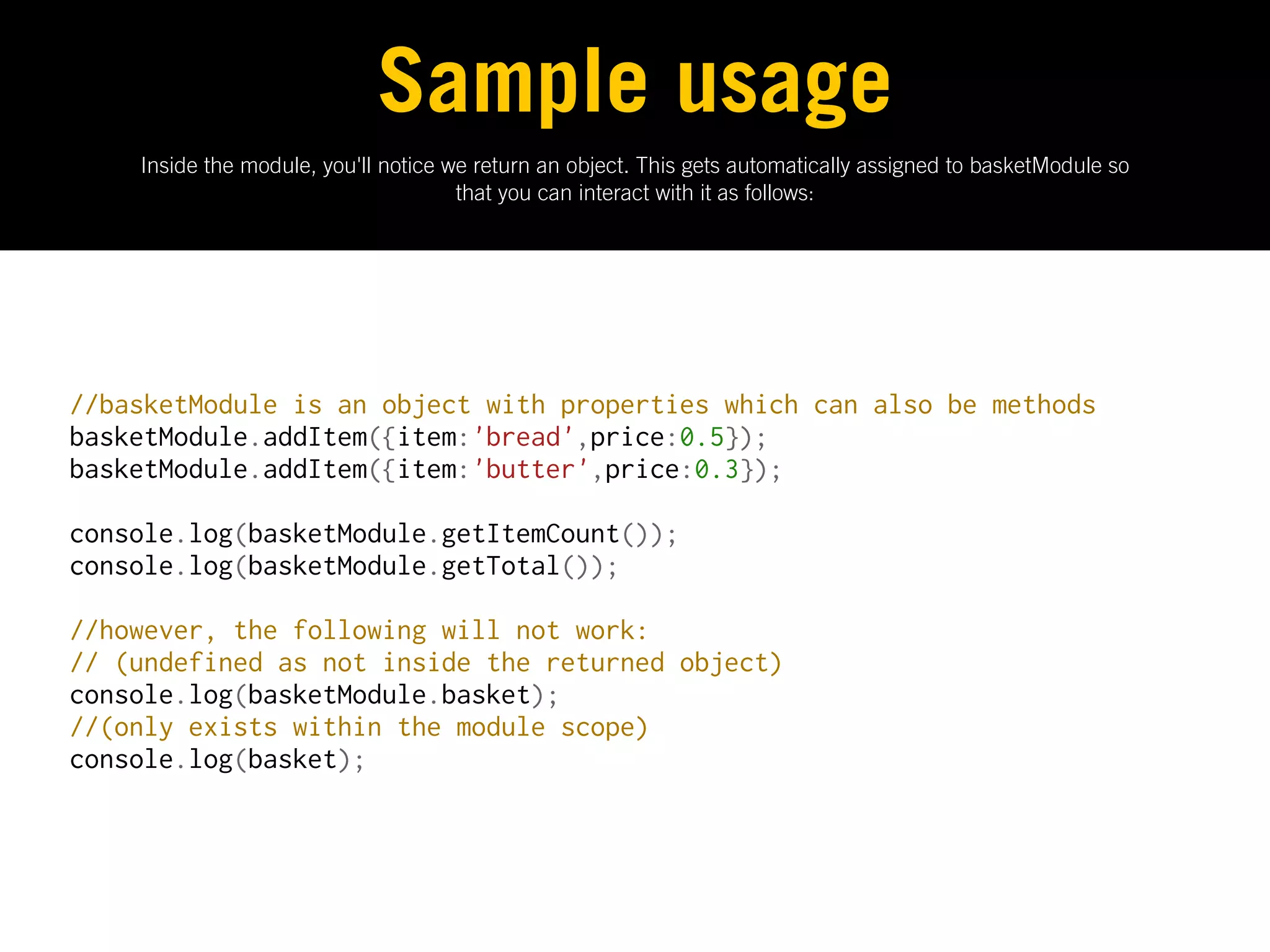
![Module Pattern: Dojo Dojo attempts to provide 'class'-like functionality through dojo.declare, which can be used for amongst other things, creating implementations of the module pattern. Powerful when used with dojo.provide. // traditional way var store = window.store || {}; store.basket = store.basket || {}; // another alternative.. // using dojo.setObject (with basket as a module of the store namespace) dojo.setObject("store.basket.object", (function() { var basket = []; function privateMethod() { console.log(basket); } return { publicMethod: function(){ privateMethod(); } }; }()));](https://image.slidesharecdn.com/webdirections-111013072810-phpapp02/75/Scalable-JavaScript-Design-Patterns-40-2048.jpg)
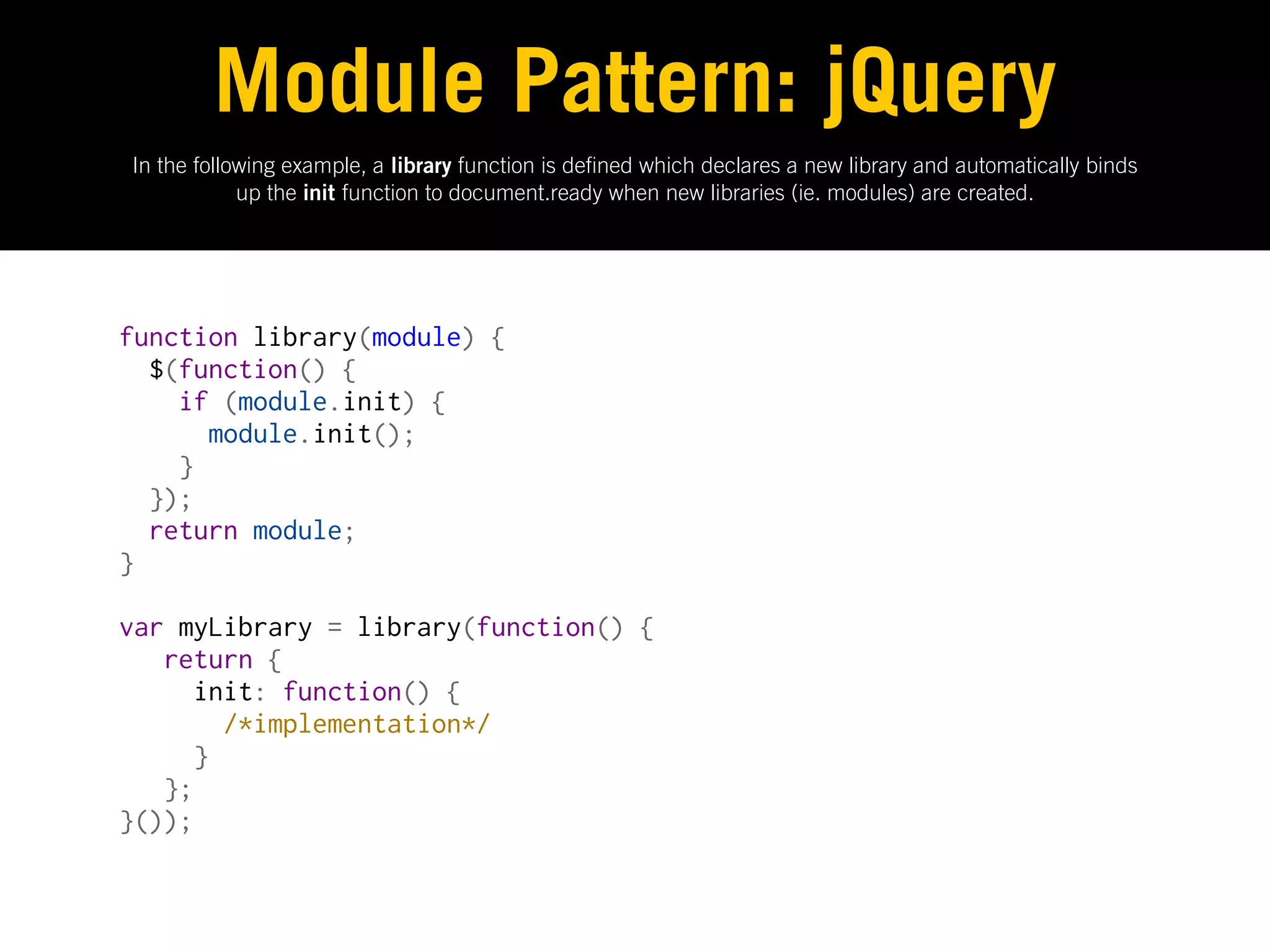
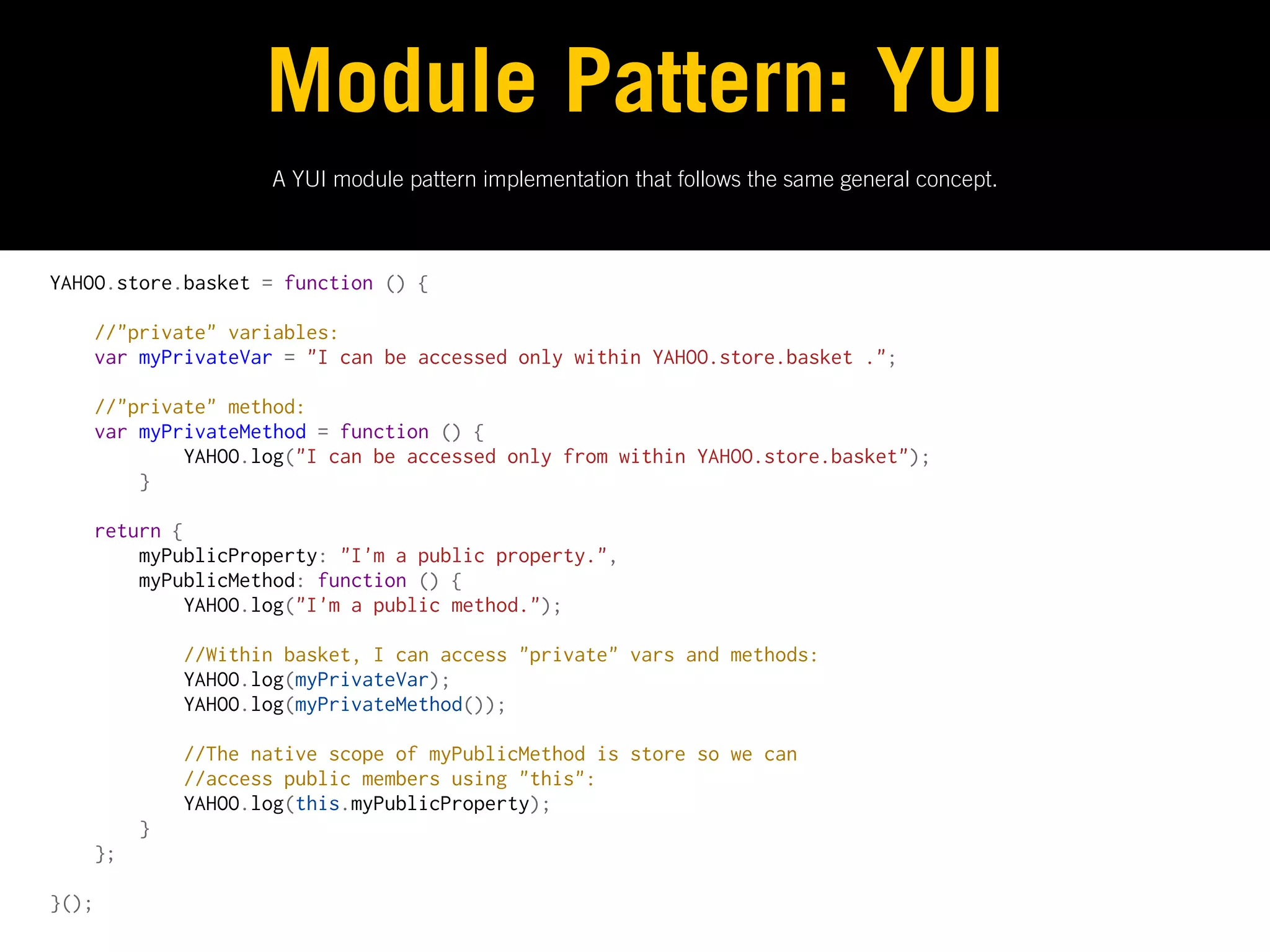
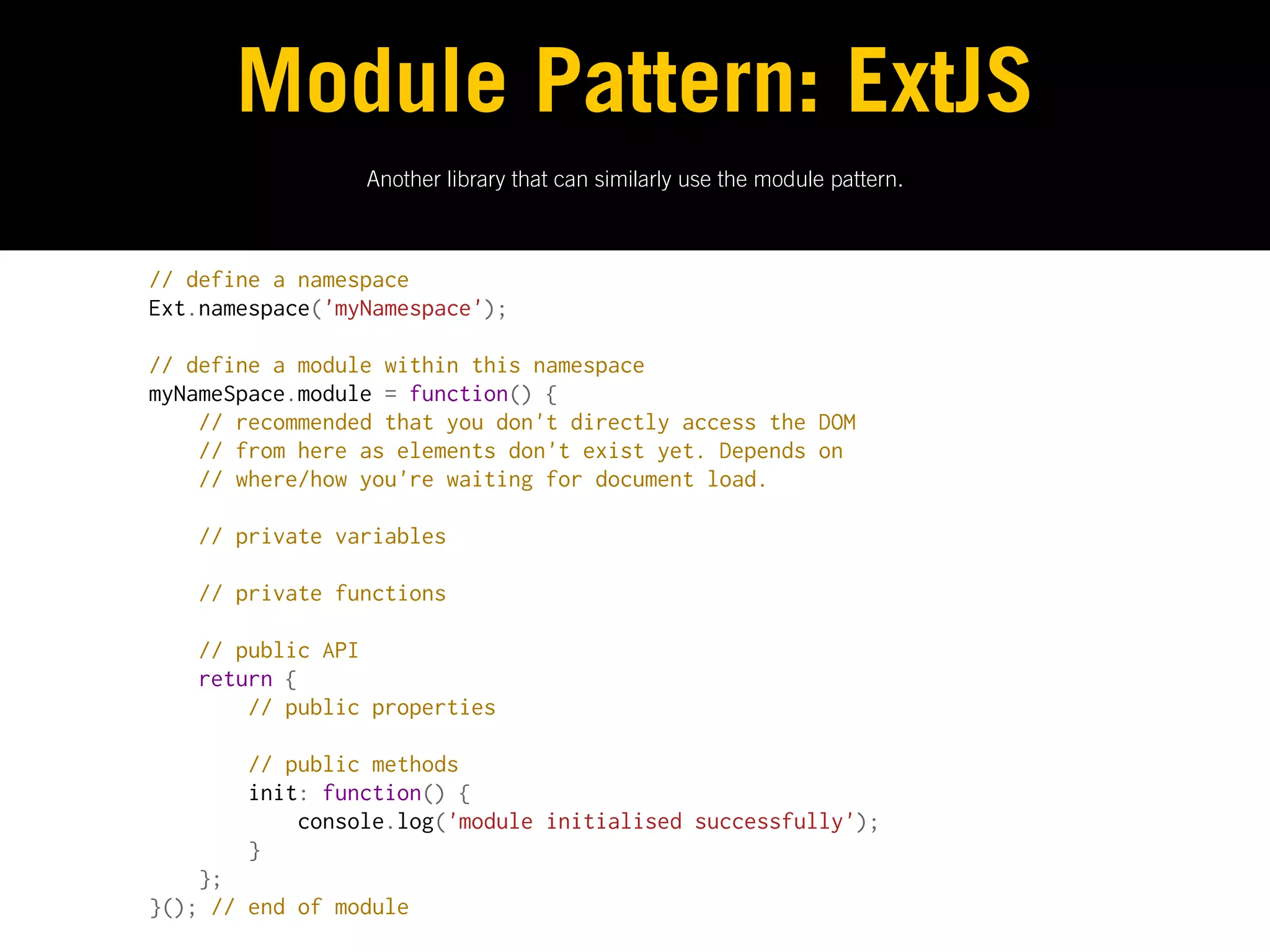
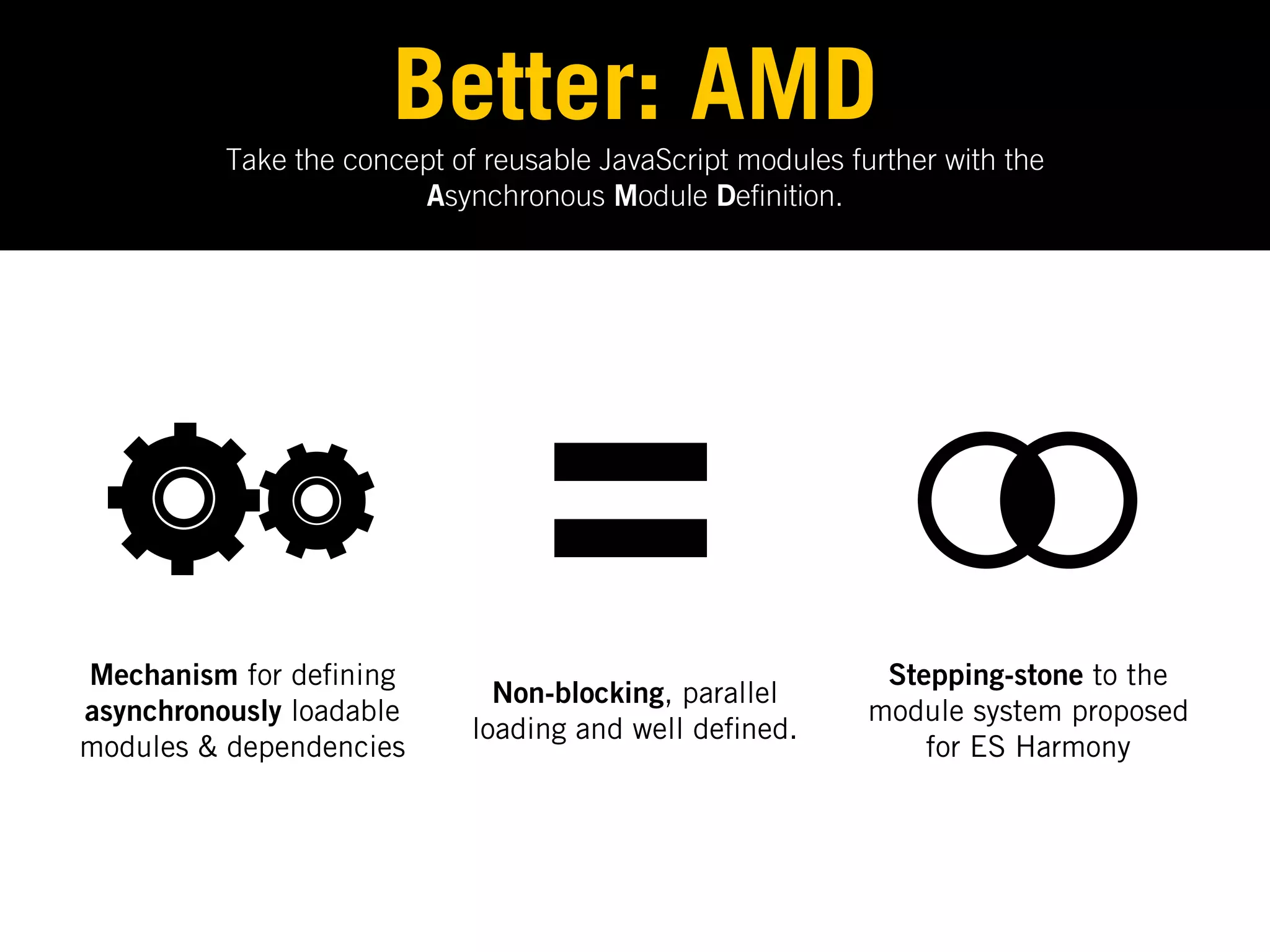
![AMD: de ne() de ne allows the de nition of modules with a signature of de ne(id /*optional*/, [dependencies], factory /*module instantiation fn*/); /* wrapper */ define( /*module id*/ 'myModule', /*dependencies*/ ['foo','bar','foobar'], /*definition for the module export*/ function (foo, bar, foobar) { /*module object*/ var module = {}; /*module methods go here*/ module.hello = foo.getSomething(); module.world = bar.doSomething(); /*return the defined module object*/ return module; } );](https://image.slidesharecdn.com/webdirections-111013072810-phpapp02/75/Scalable-JavaScript-Design-Patterns-45-2048.jpg)
![AMD: require() require is used to load code for top-level JS les or inside modules for dynamically fetching dependencies /* top-level: the module exports (one, two) are passed as function args to the callback.*/ require(['one', 'two'], function (one, two) { }); /* inside: complete example */ define('three', ['one', 'two'], function (one, two) { /*require('string') can be used inside the function to get the module export of a module that has already been fetched and evaluated.*/ var temp = require('one'); /*This next line would fail*/ var bad = require('four'); /* Return a value to define the module export */ return function () {}; });](https://image.slidesharecdn.com/webdirections-111013072810-phpapp02/75/Scalable-JavaScript-Design-Patterns-46-2048.jpg)
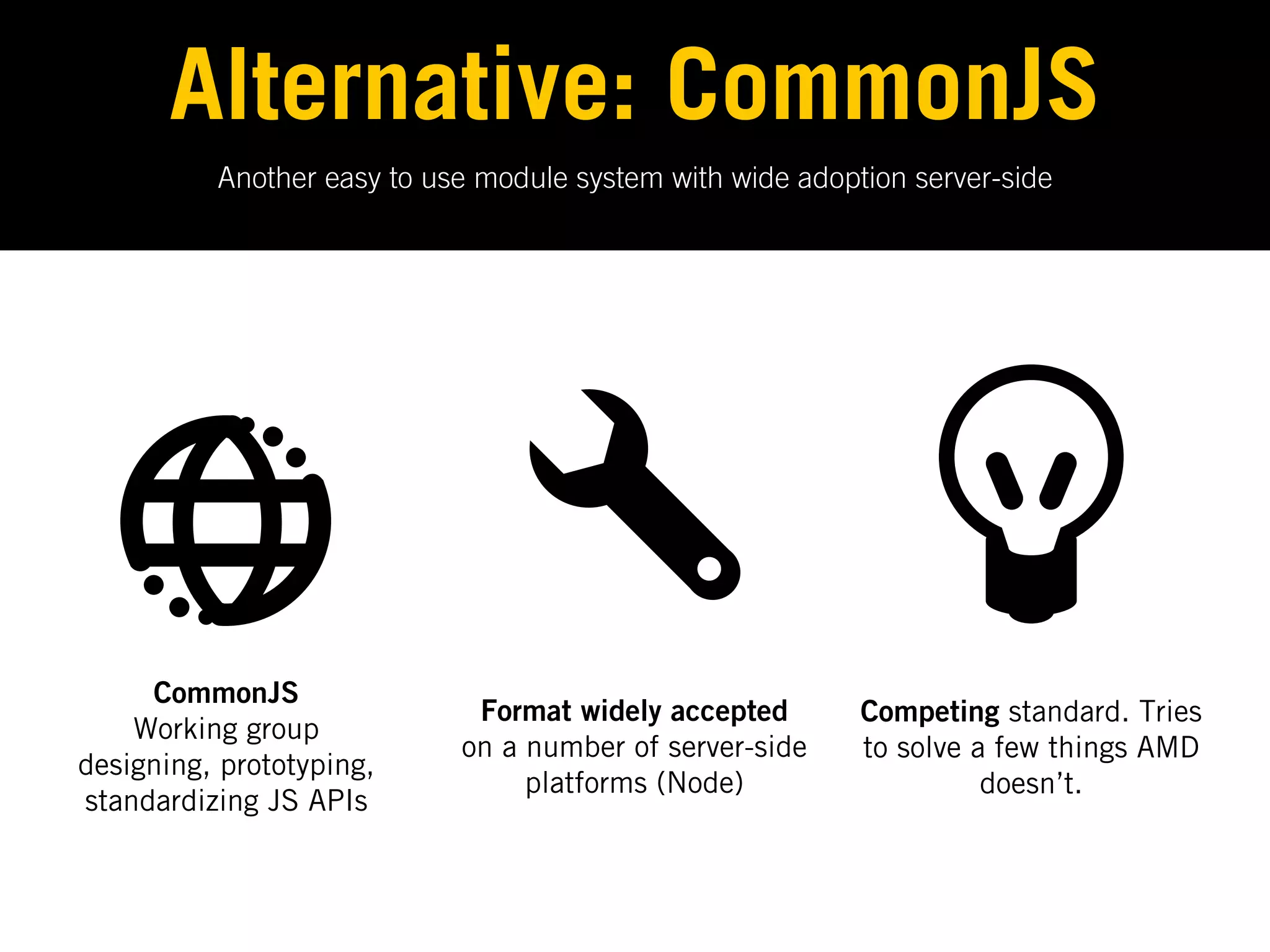
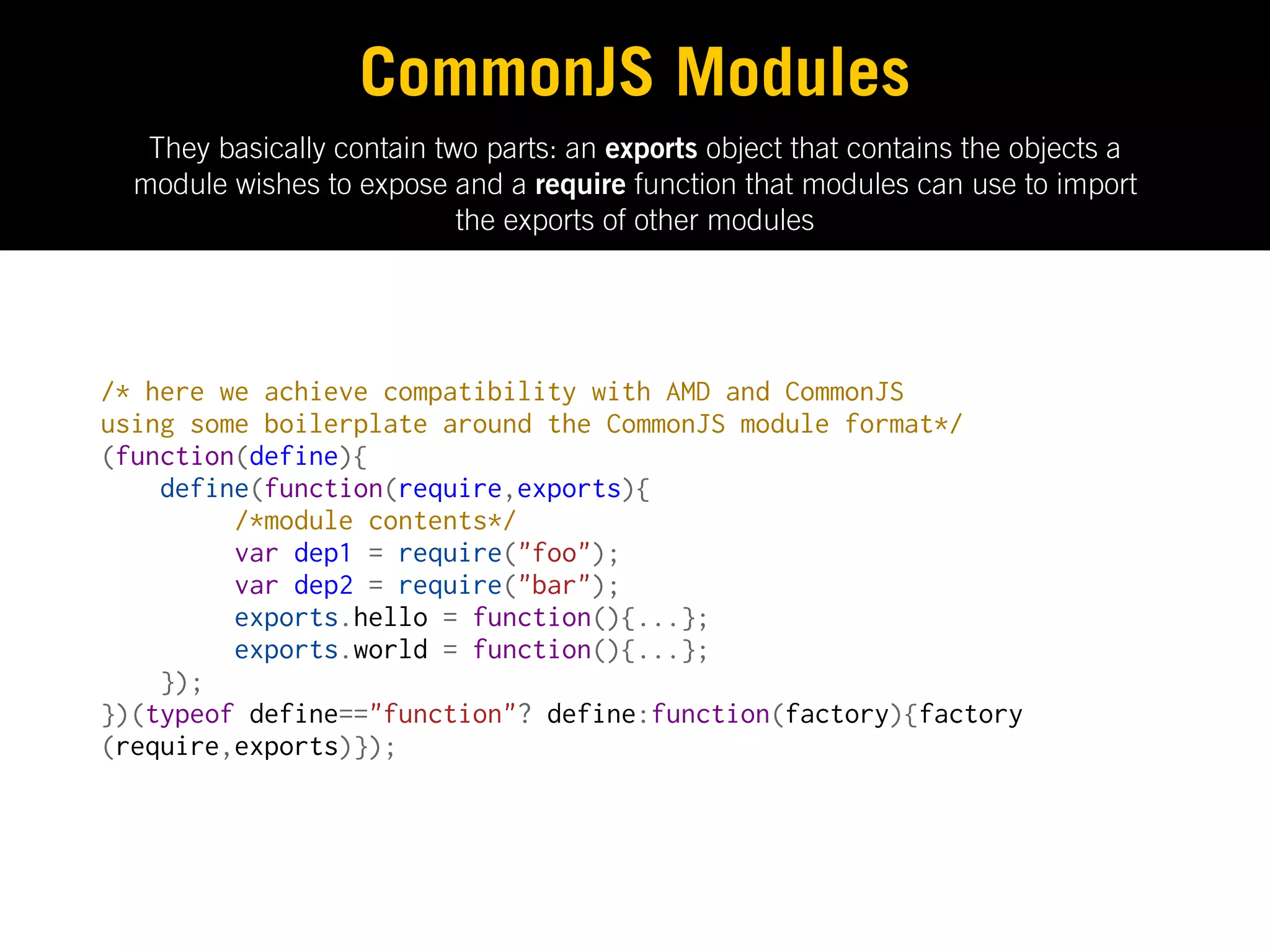
![Better alternative: Universal Module De nition De ning modules that can work anywhere (CommonJS environments such as clients, servers; with script loaders etc). Thx to @KitCambridge for this version. (function (root, Library) { // The square bracket notation is used to avoid property munging by the Closure Compiler. if (typeof define == "function" && typeof define["amd"] =="object" && define["amd"]) { // Export for asynchronous module loaders (e.g., RequireJS, `curl.js`). define(["exports"], Library); } else { // Export for CommonJS environments, web browsers, and JavaScript engines. Library = Library(typeof exports == "object" && exports|| (root["Library"] = { "noConflict": (function (original) { function noConflict() { root["Library"] = original; // `noConflict` can't be invoked more than once. delete Library.noConflict; return Library; } return noConflict; })(root["Library"]) })); } })(this, function (exports) { // module code here return exports; });](https://image.slidesharecdn.com/webdirections-111013072810-phpapp02/75/Scalable-JavaScript-Design-Patterns-49-2048.jpg)
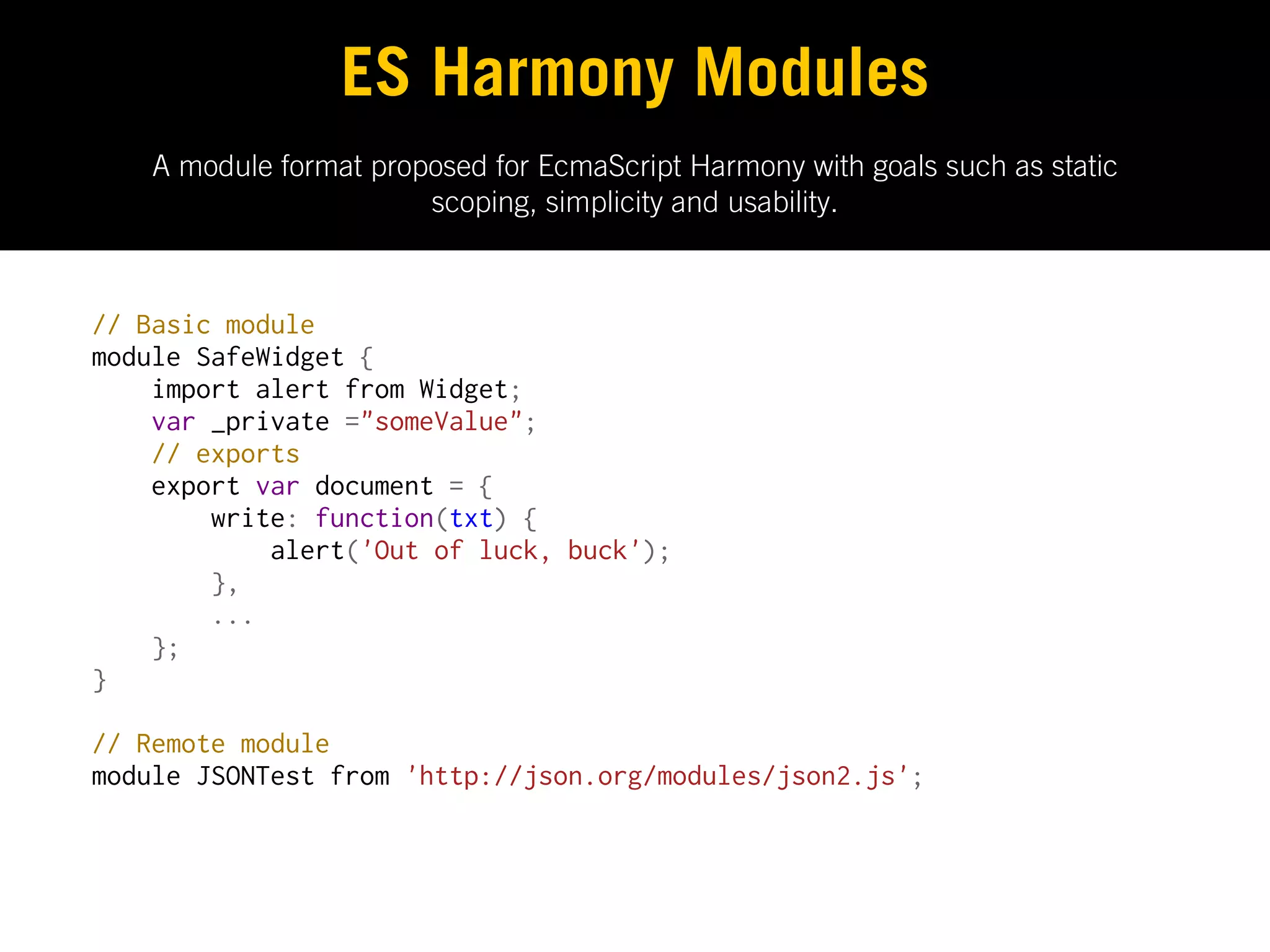
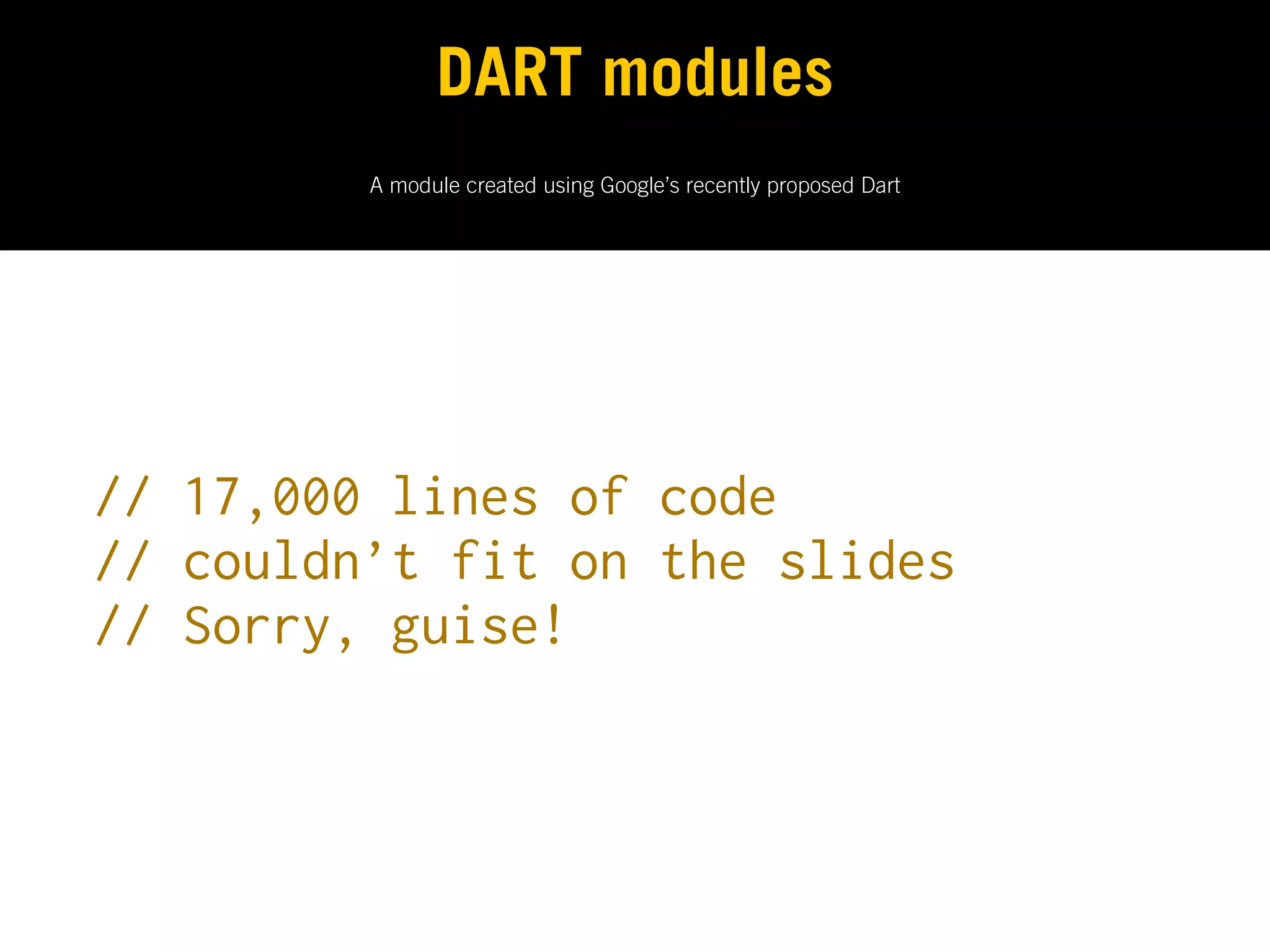

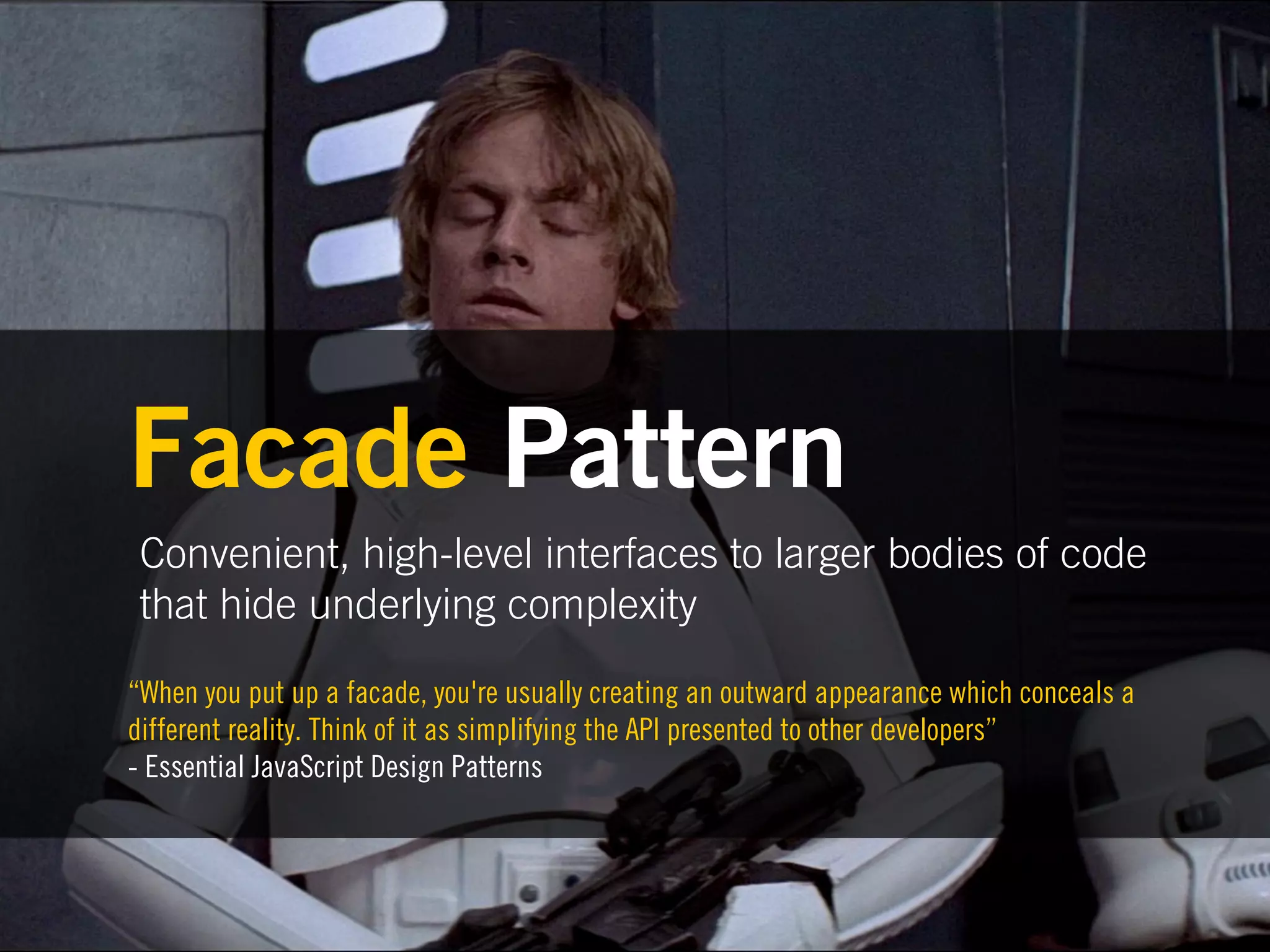
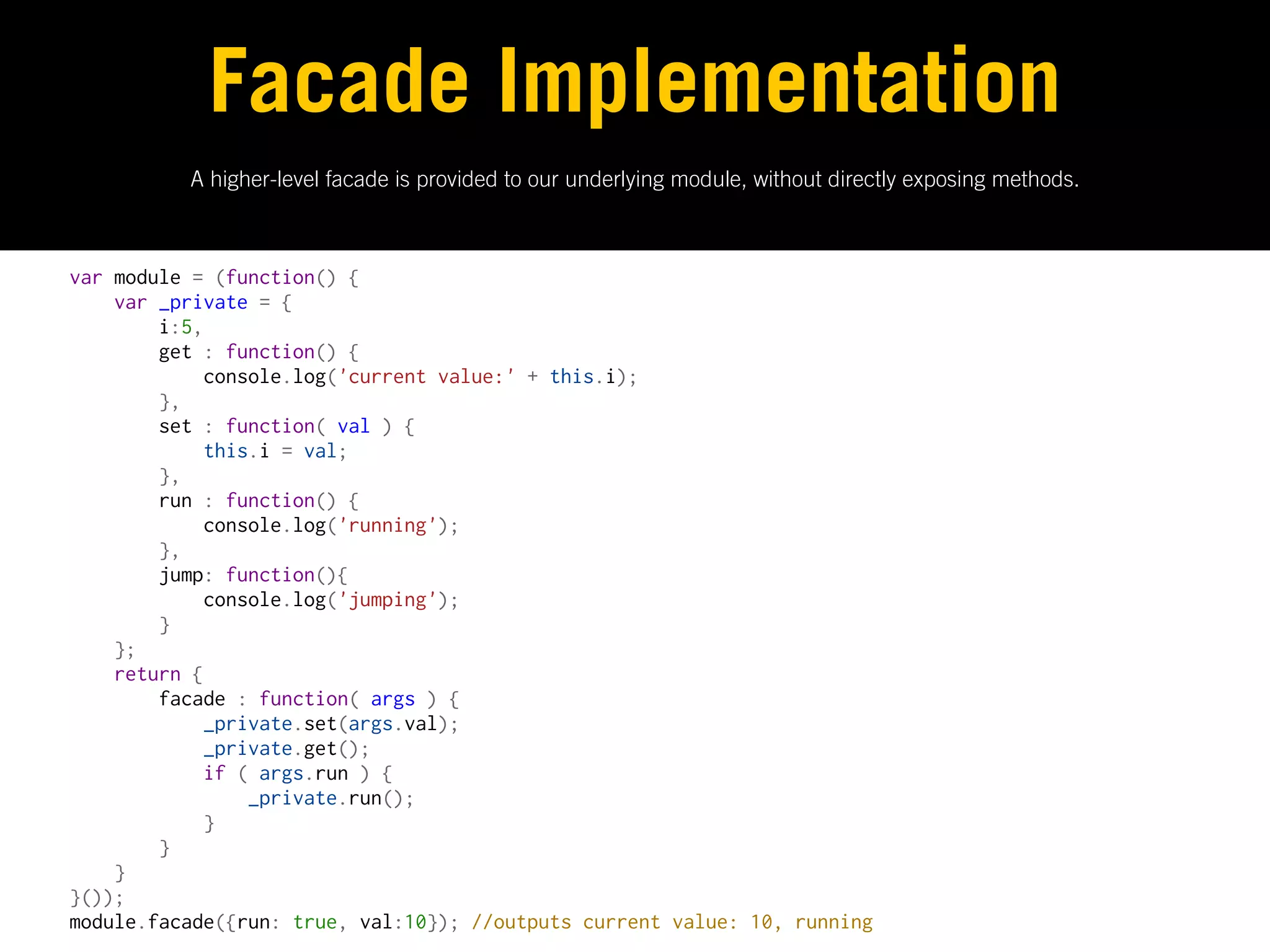
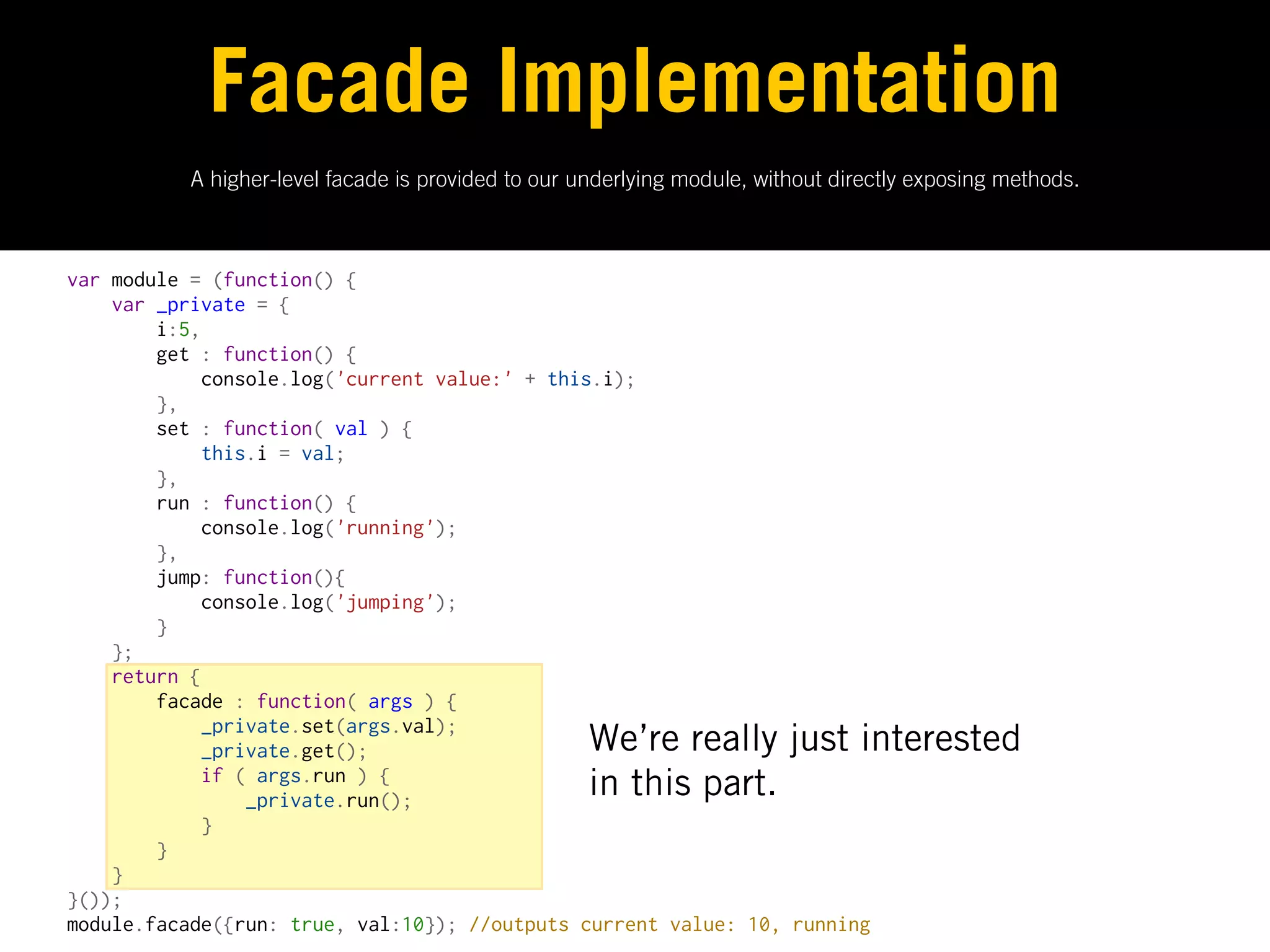
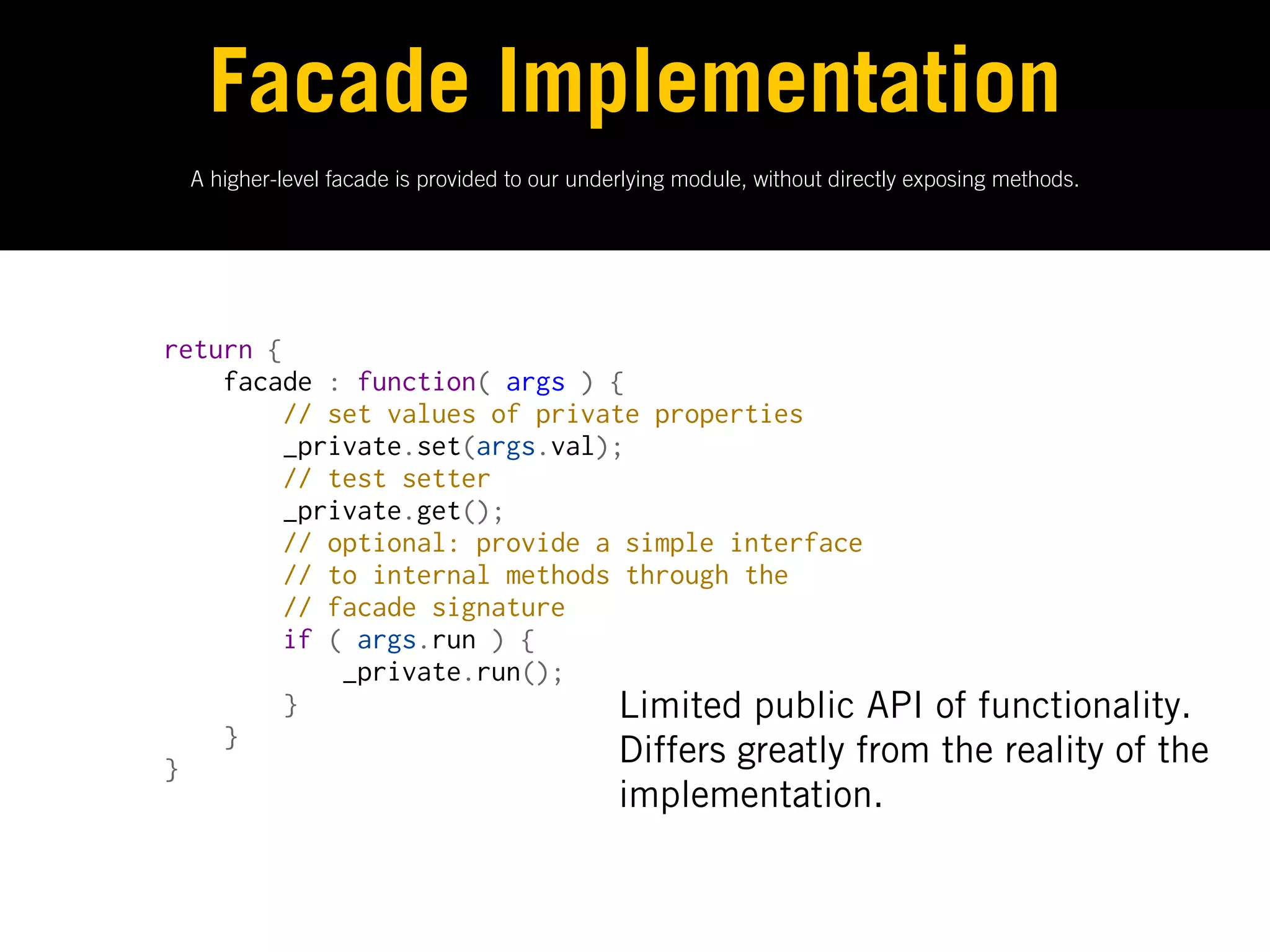
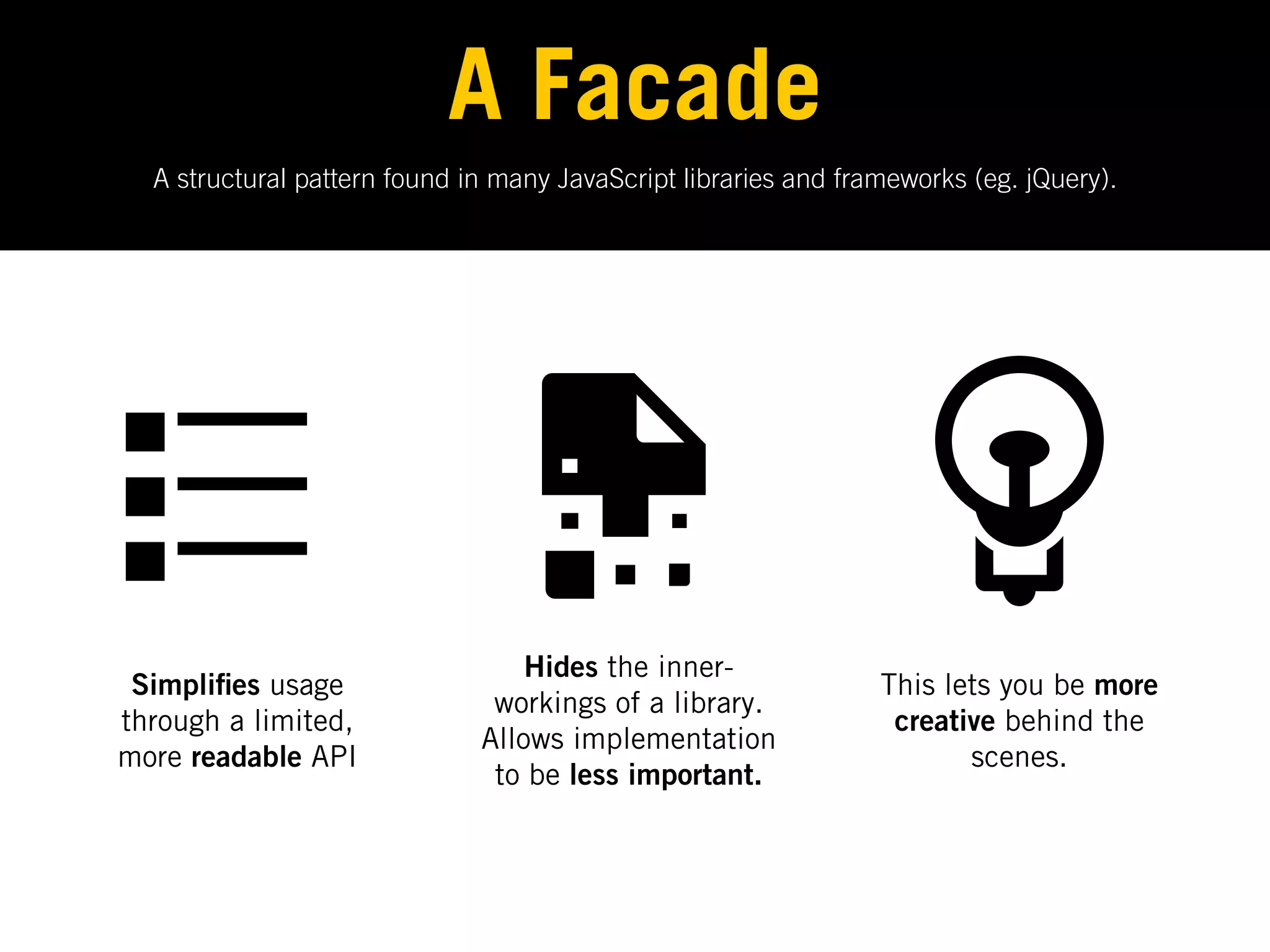
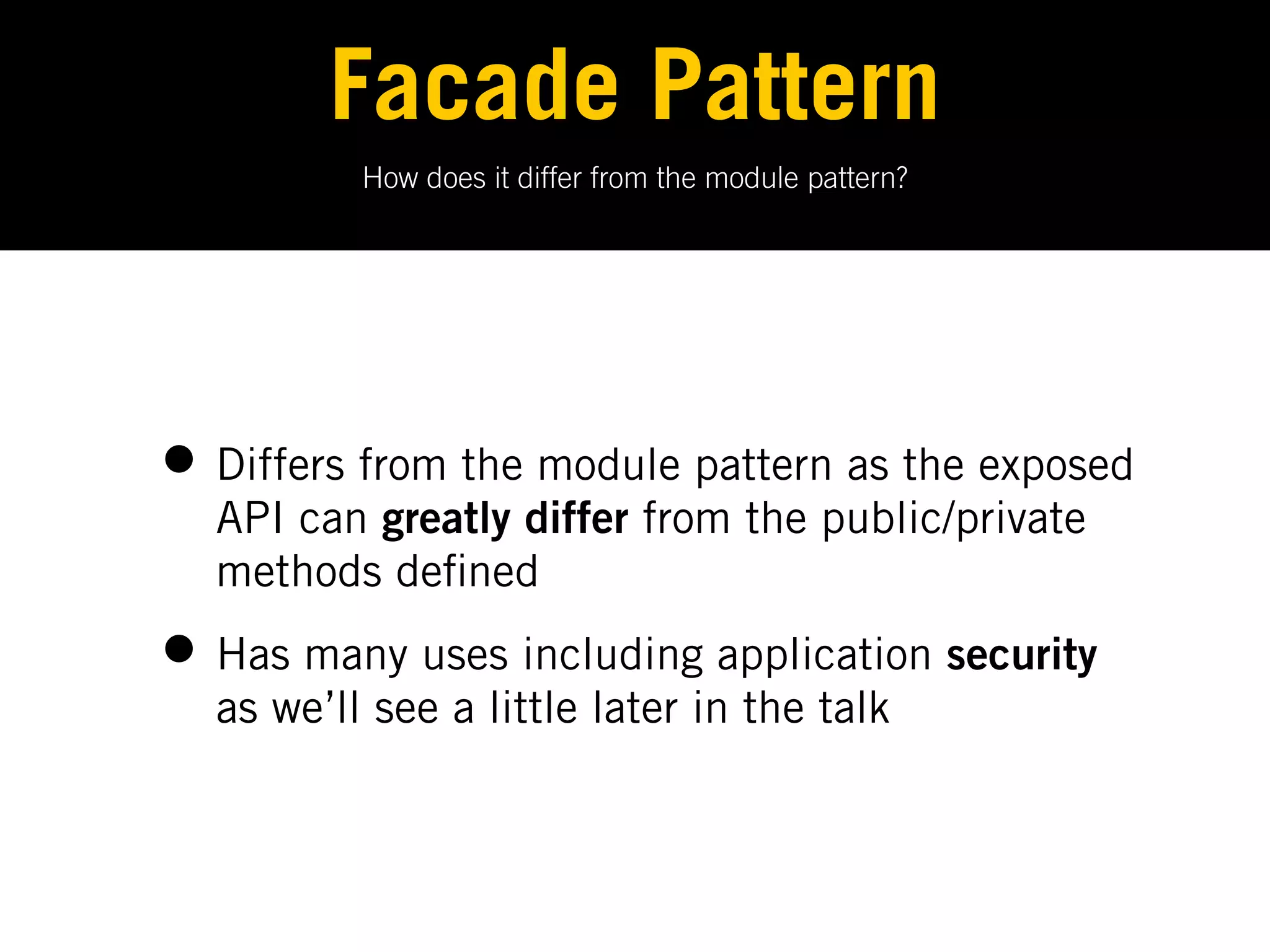
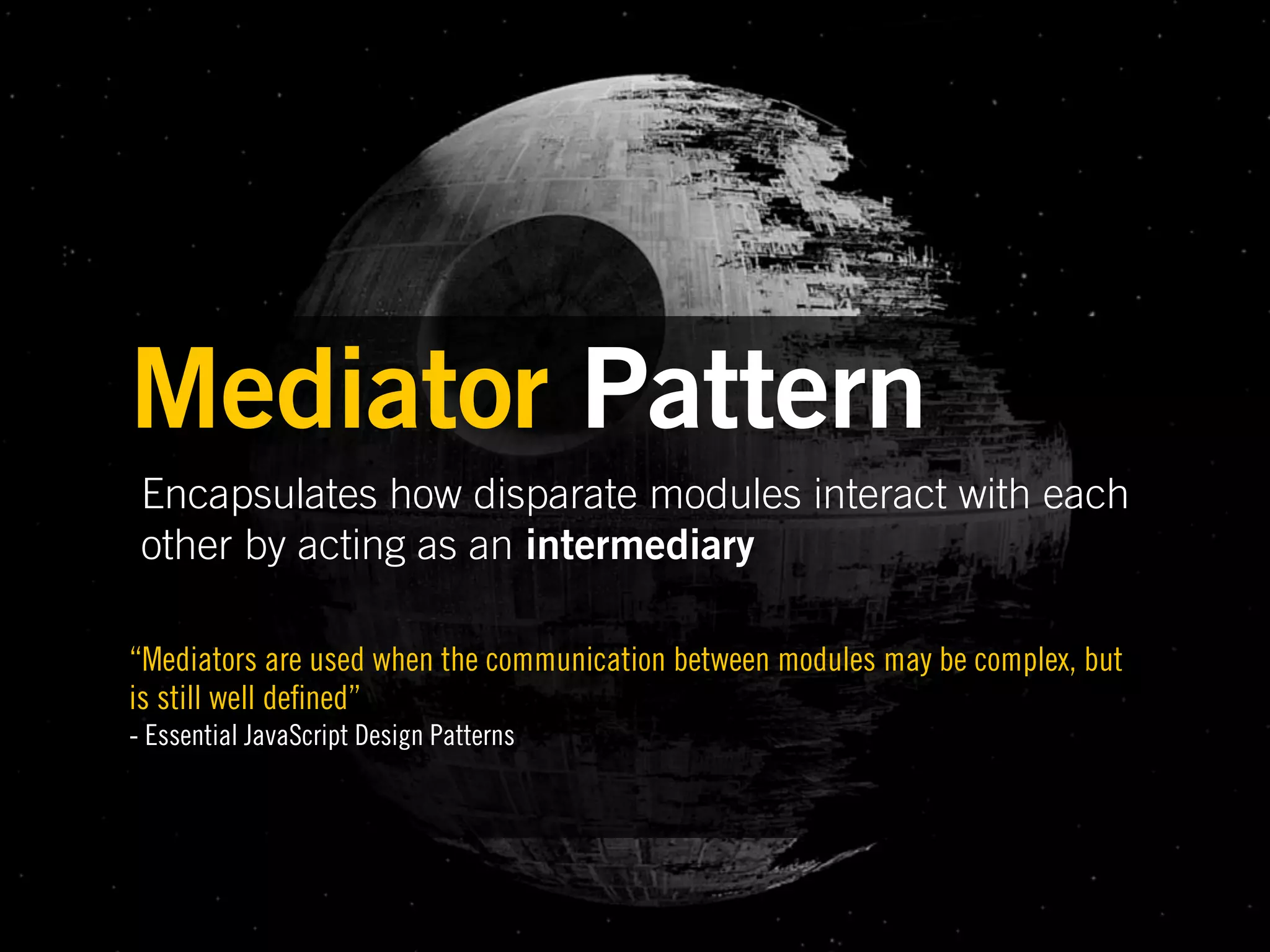

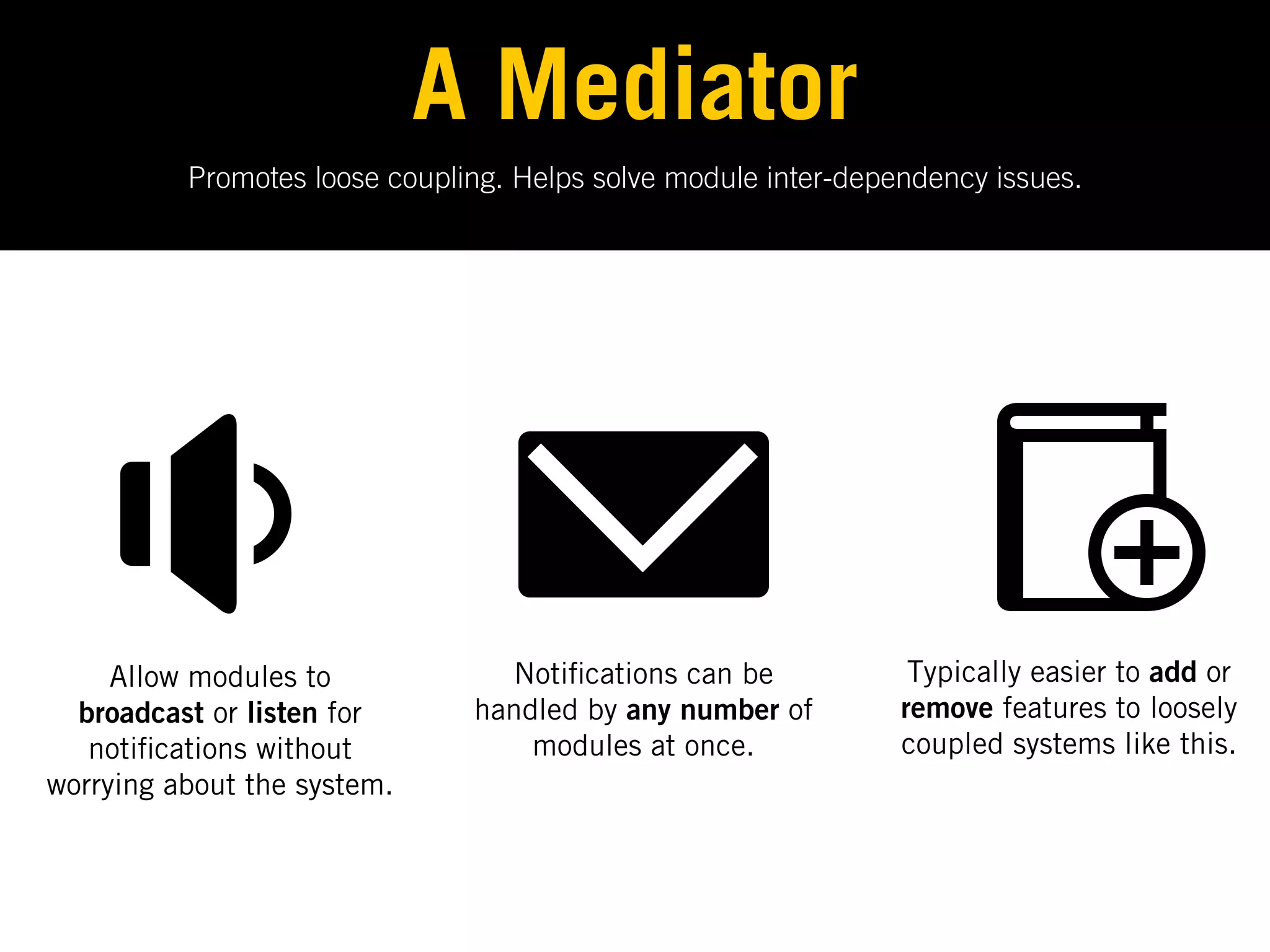
![Mediator Implementation One possible implementation, exposing publish and subscribe capabilities. var mediator = (function(){ var subscribe = function(channel, fn){ if (!mediator.channels[channel])mediator.channels[channel] = []; mediator.channels[channel].push({ context: this, callback:fn }); return this; }, publish = function(channel){ if (!mediator.channels[channel]) return false; var args = Array.prototype.slice.call(arguments, 1); for (var i = 0, l = mediator.channels[channel].length; i <l; i++) { var subscription = mediator.channels[channel][i]; subscription.callback.apply(subscription.context,args); } return this; }; return { channels: {}, publish: publish, subscribe: subscribe, installTo: function(obj){ obj.subscribe = subscribe; obj.publish = publish; } }; }());](https://image.slidesharecdn.com/webdirections-111013072810-phpapp02/75/Scalable-JavaScript-Design-Patterns-62-2048.jpg)
